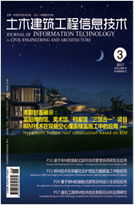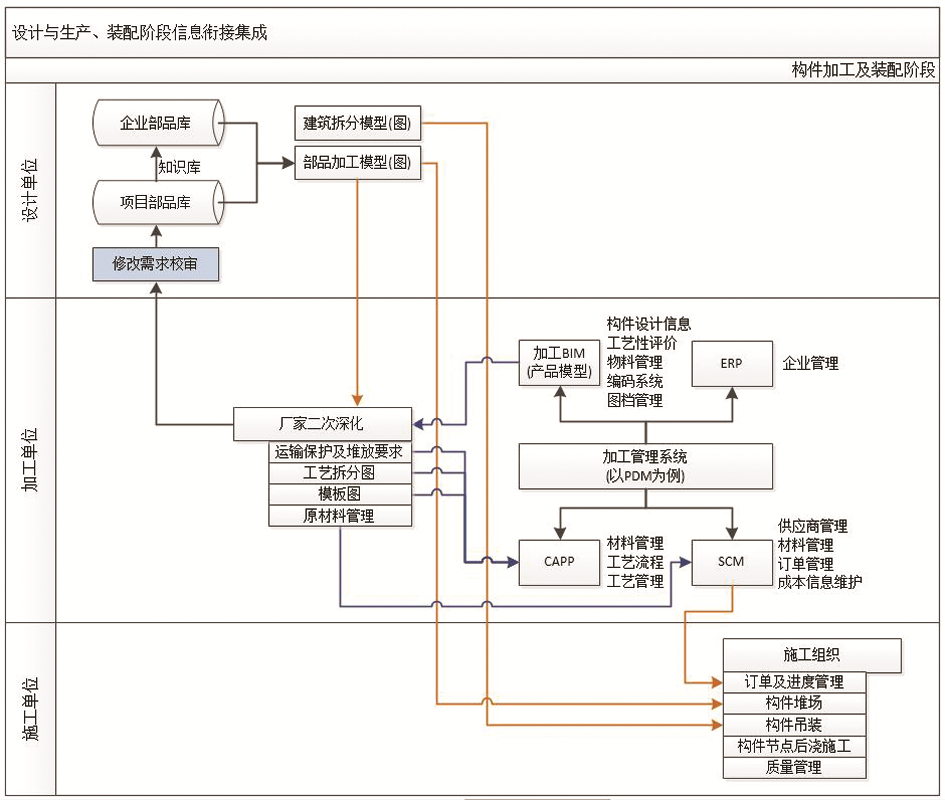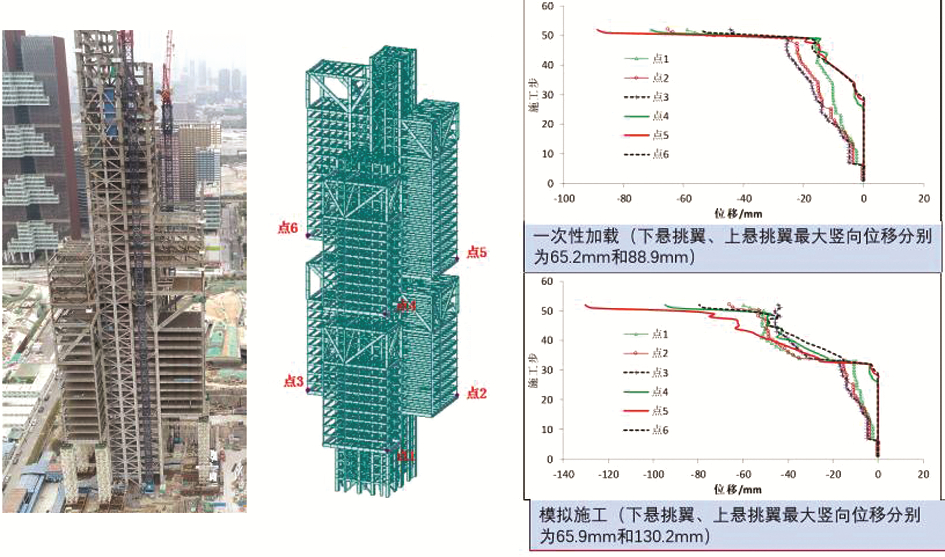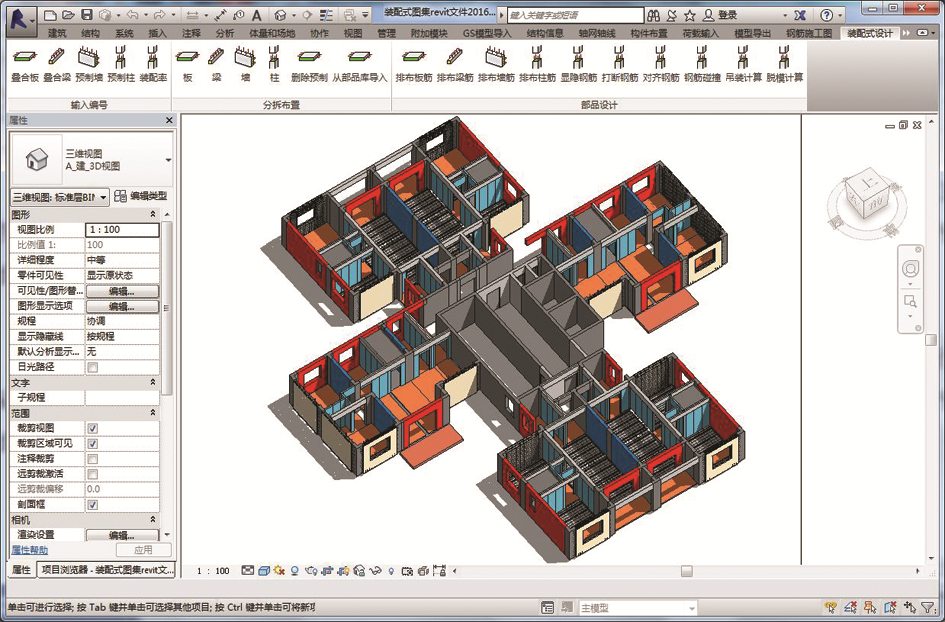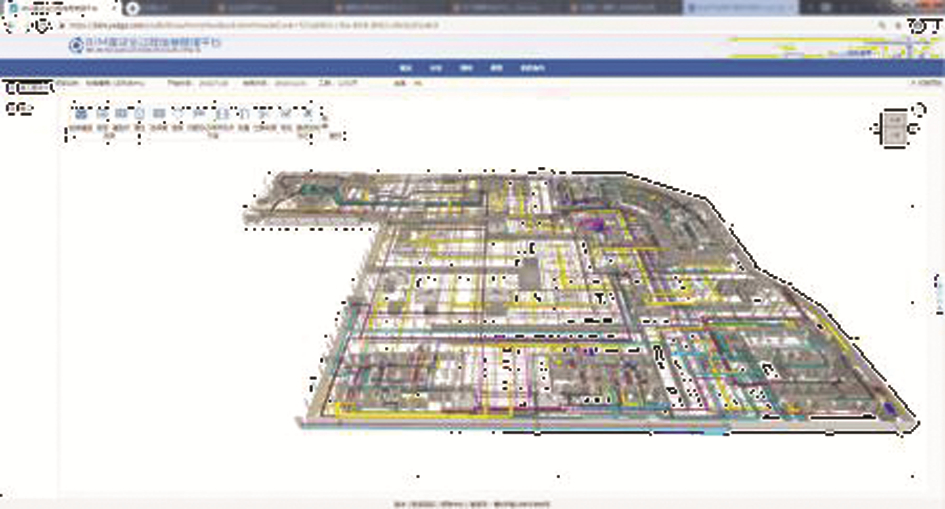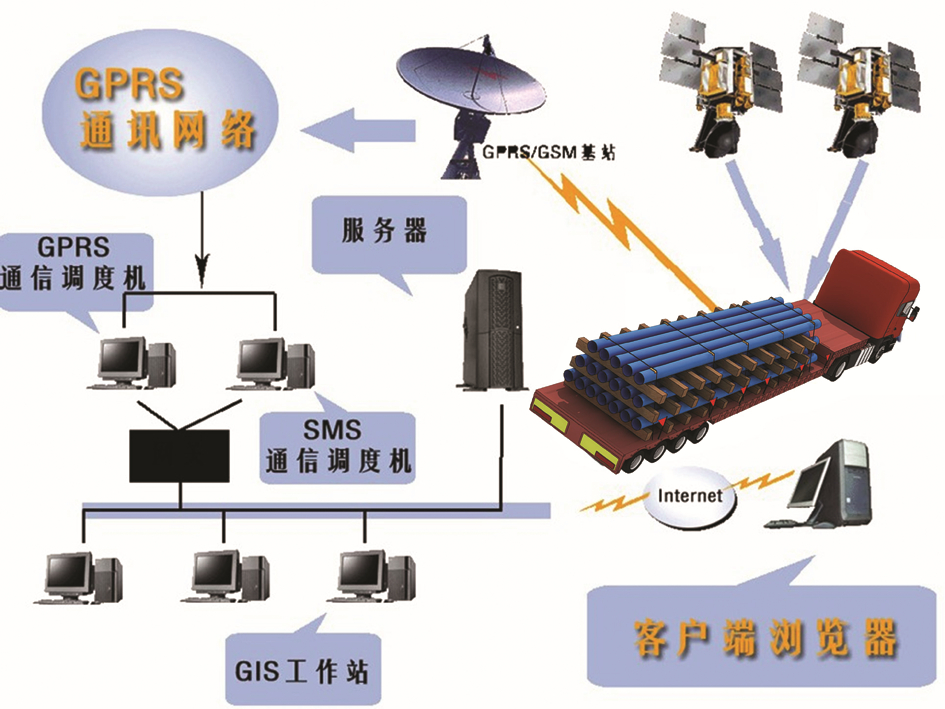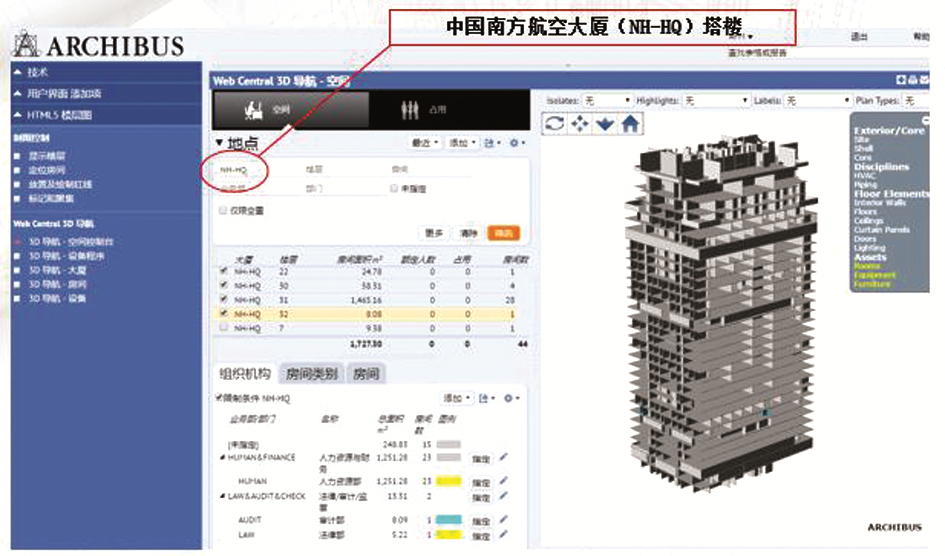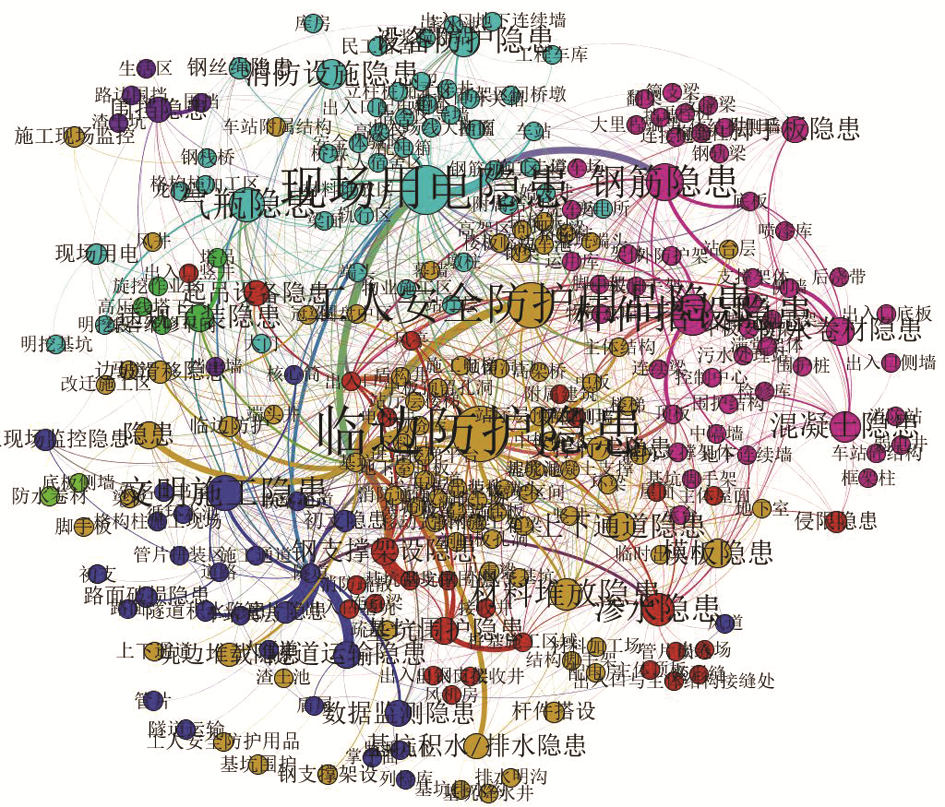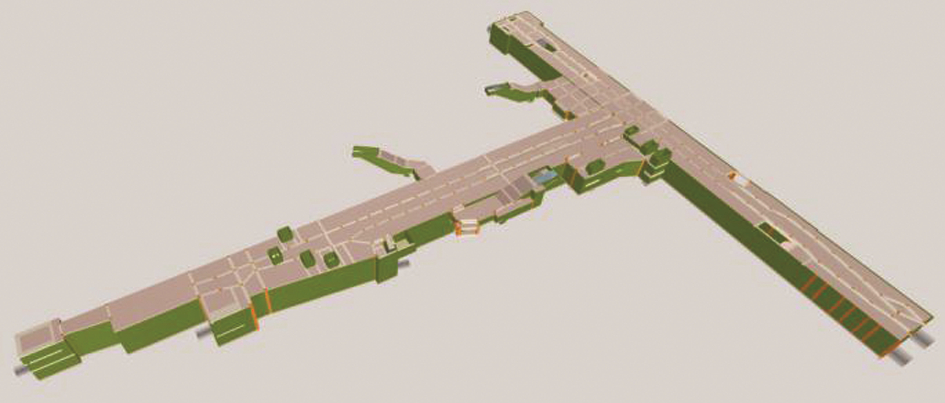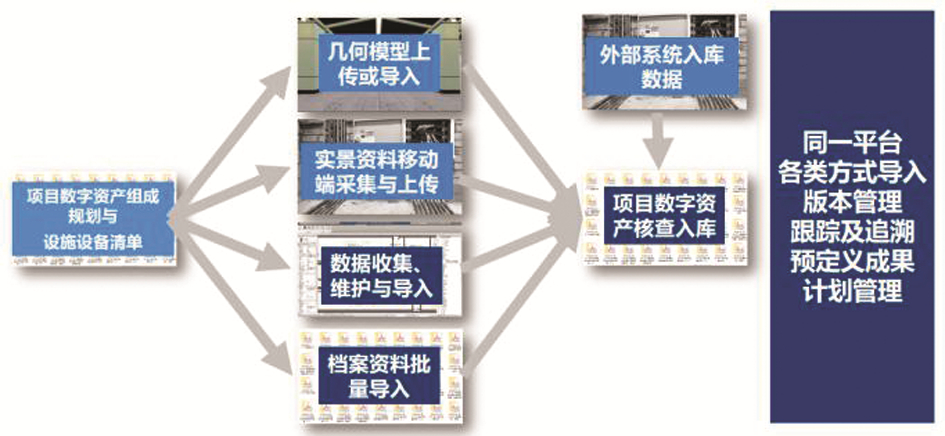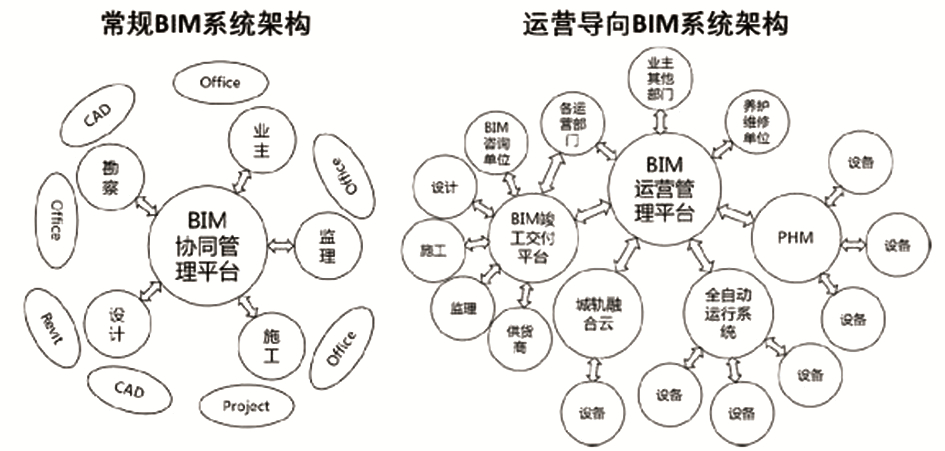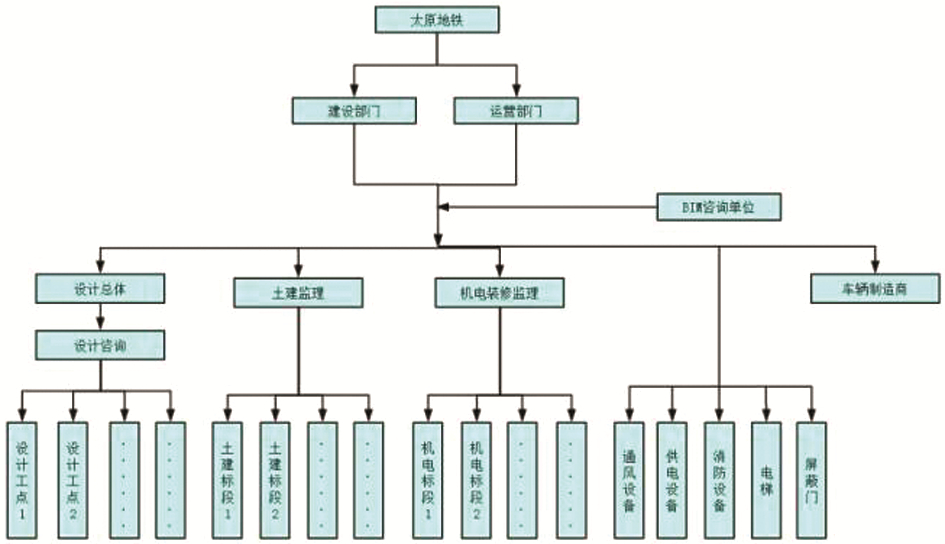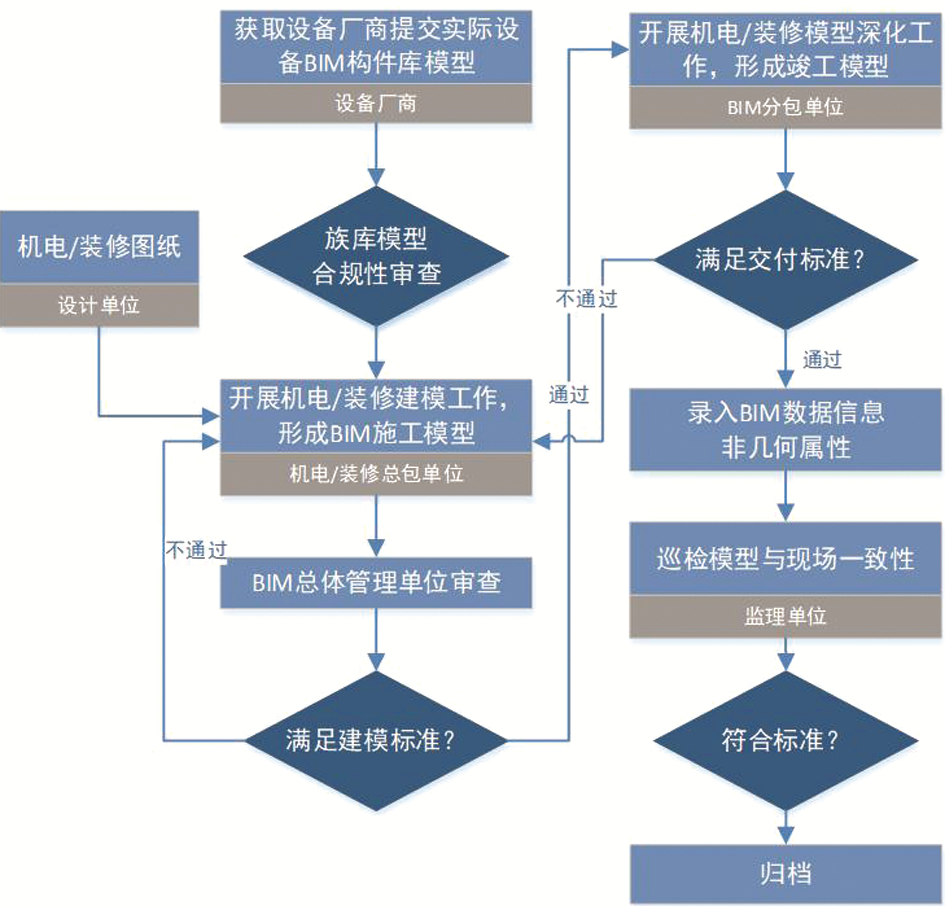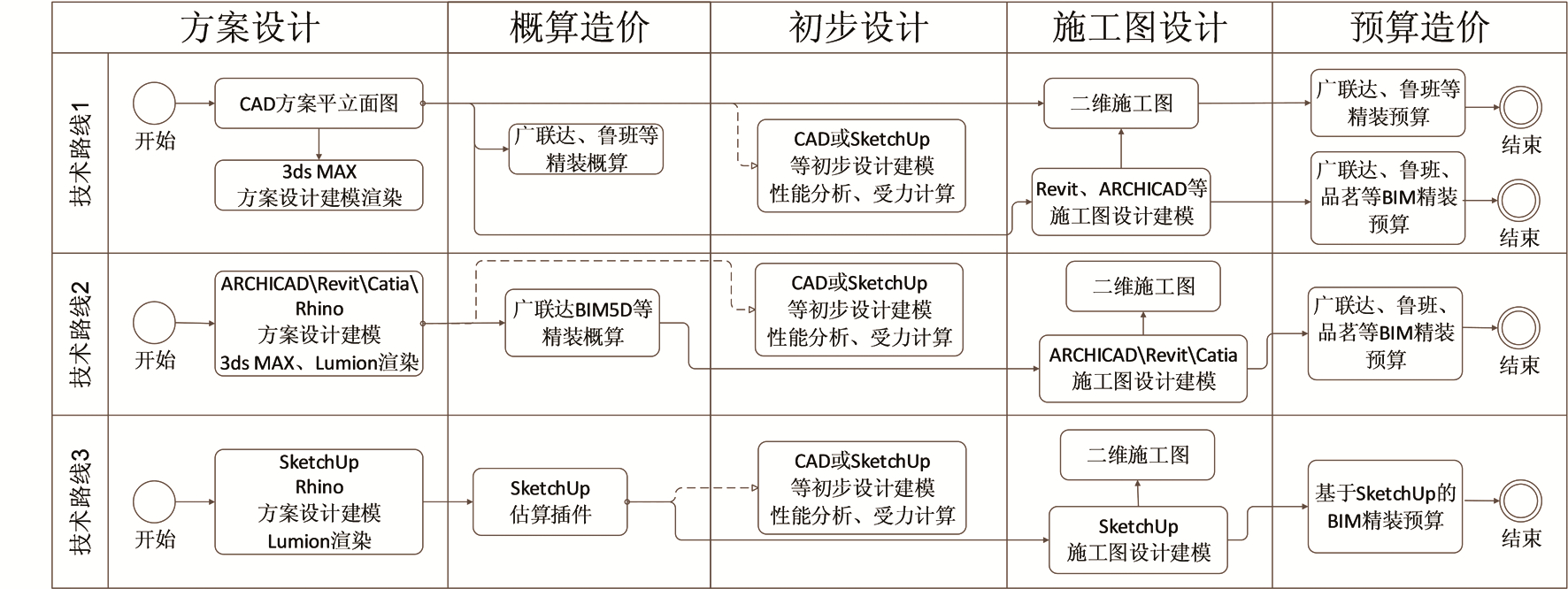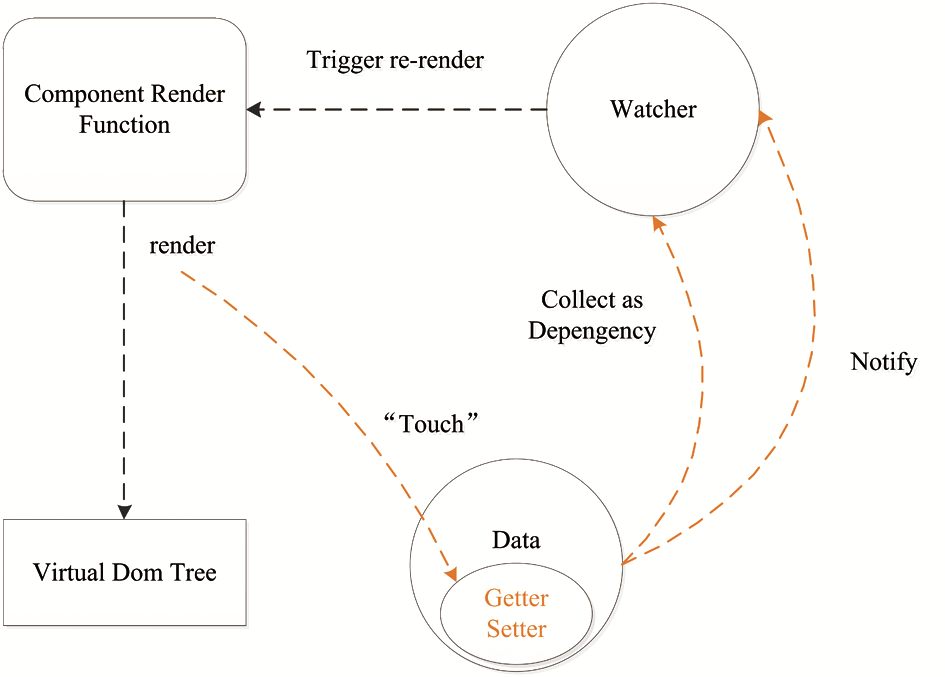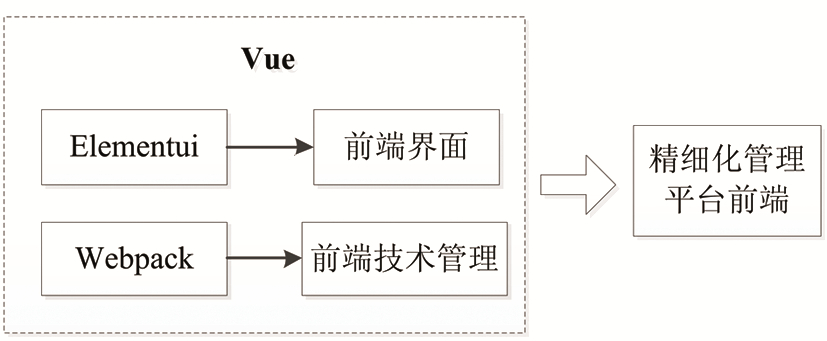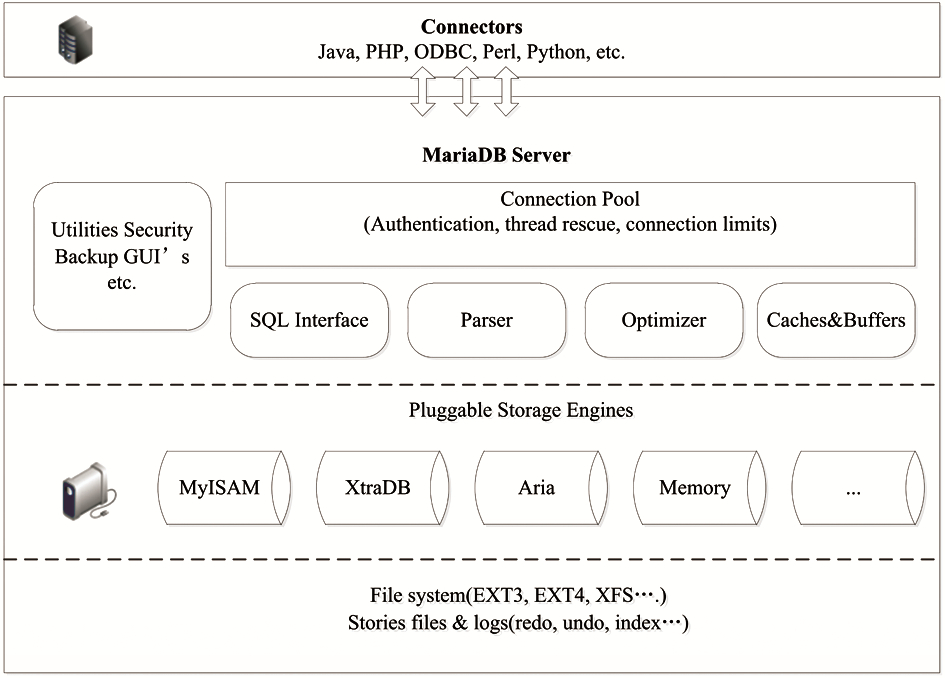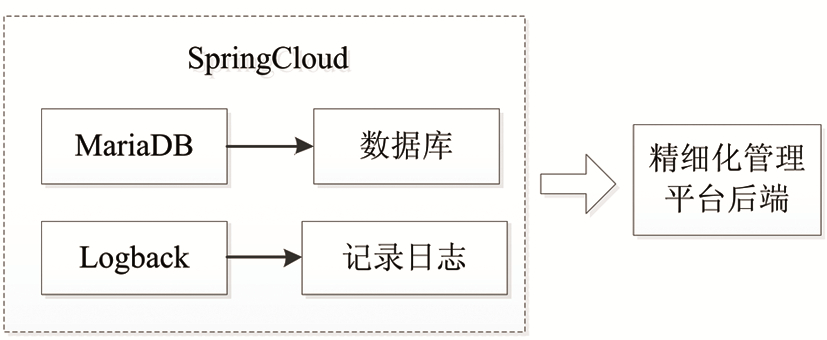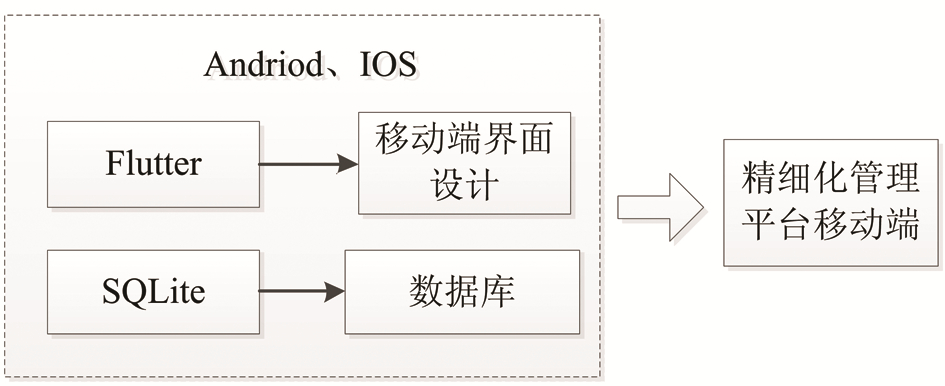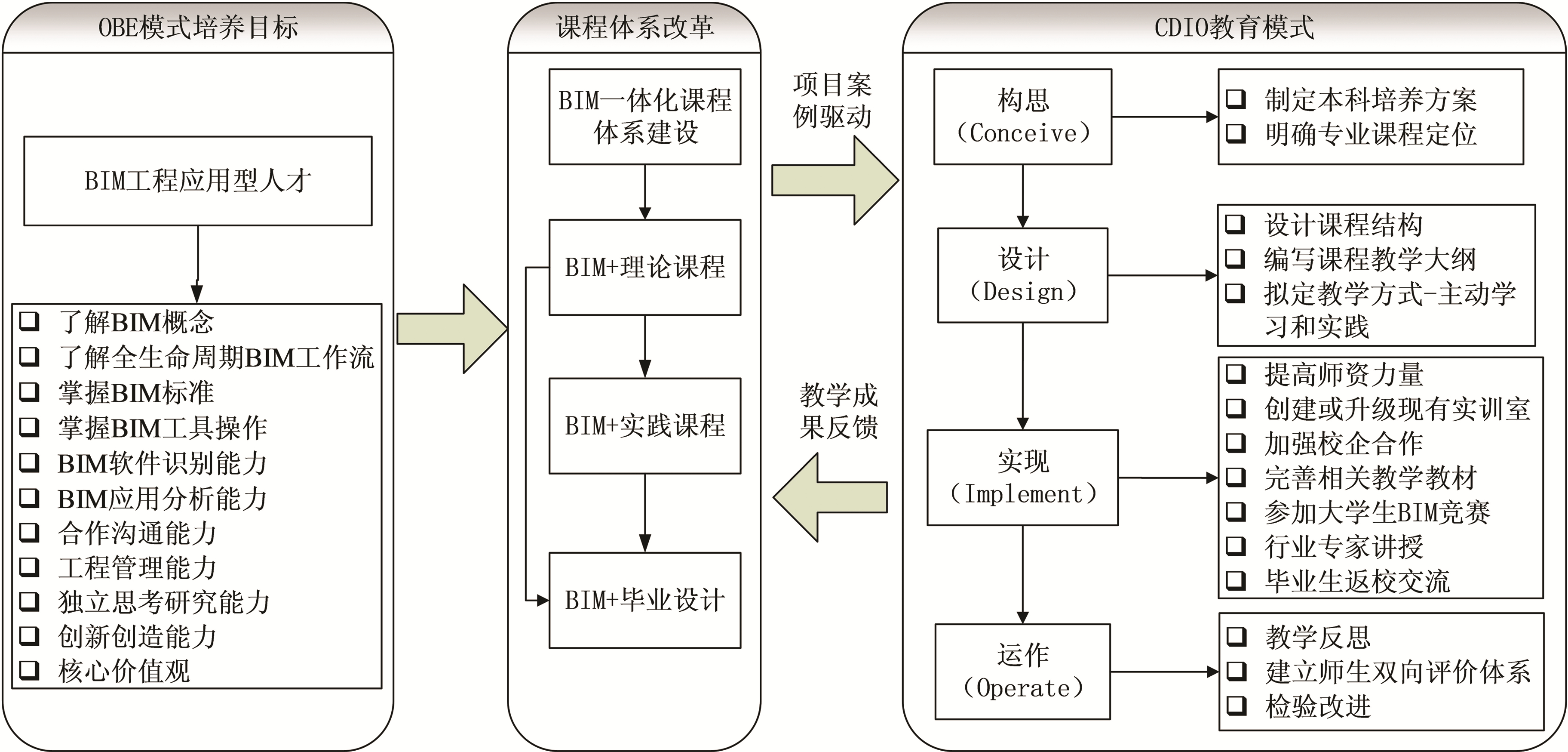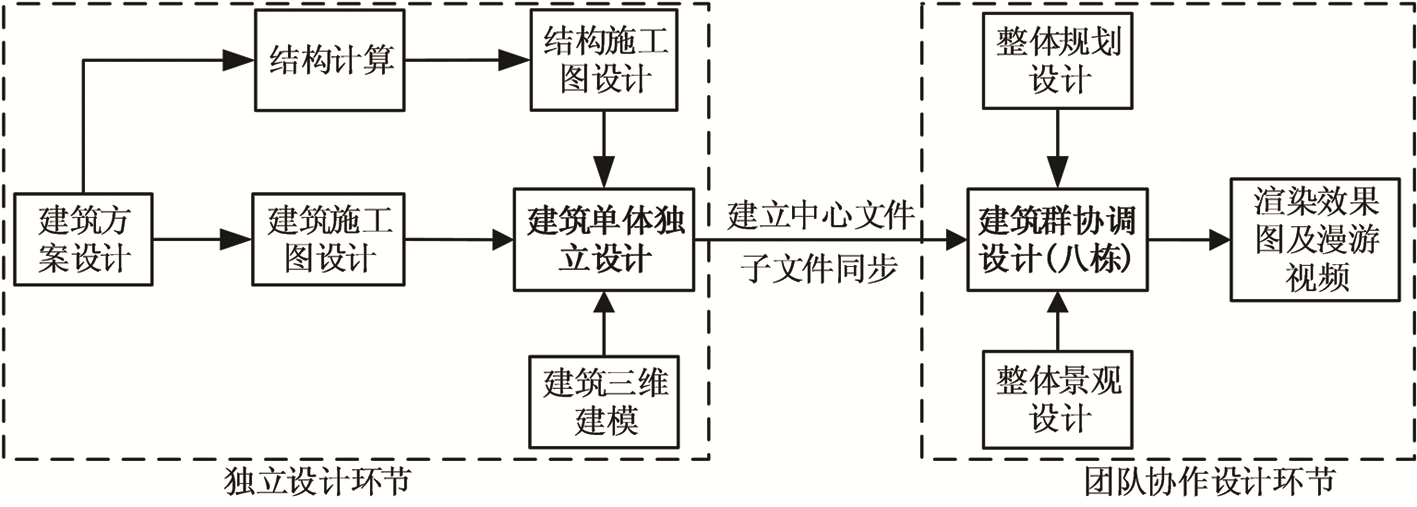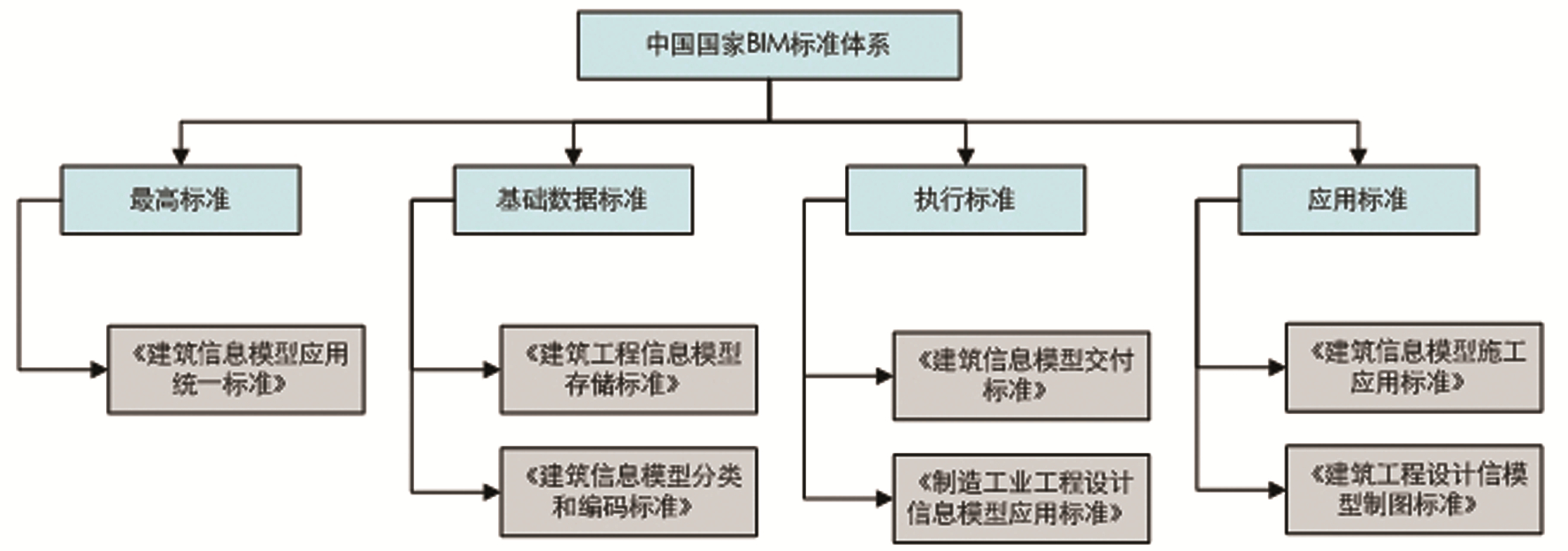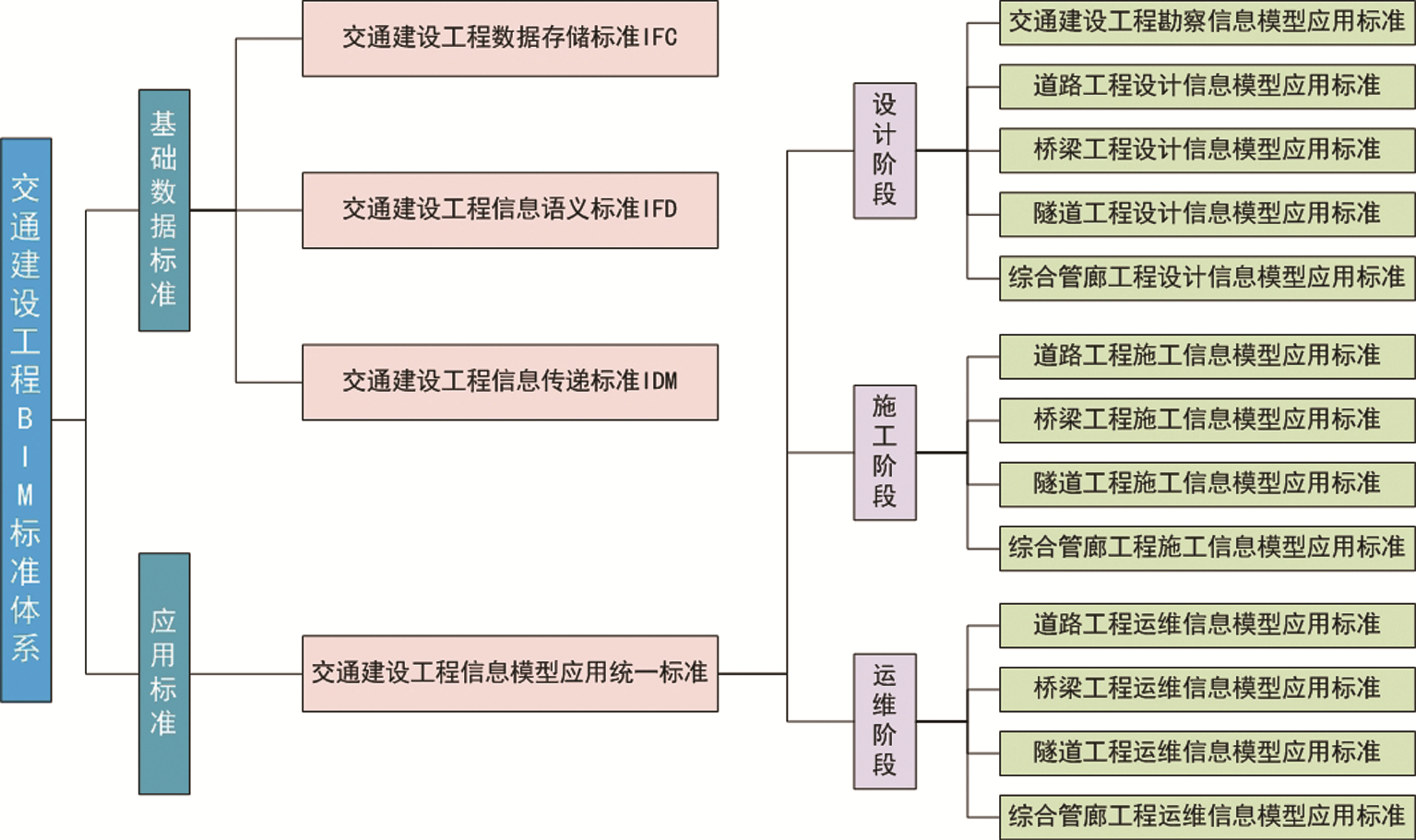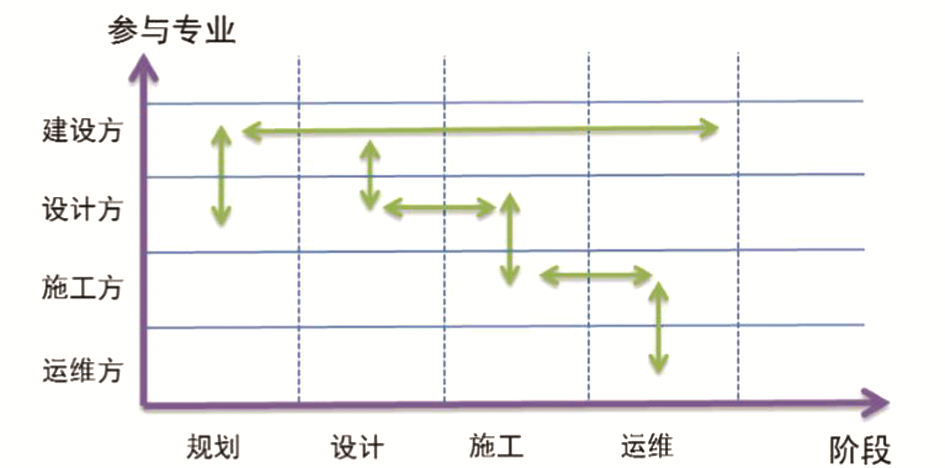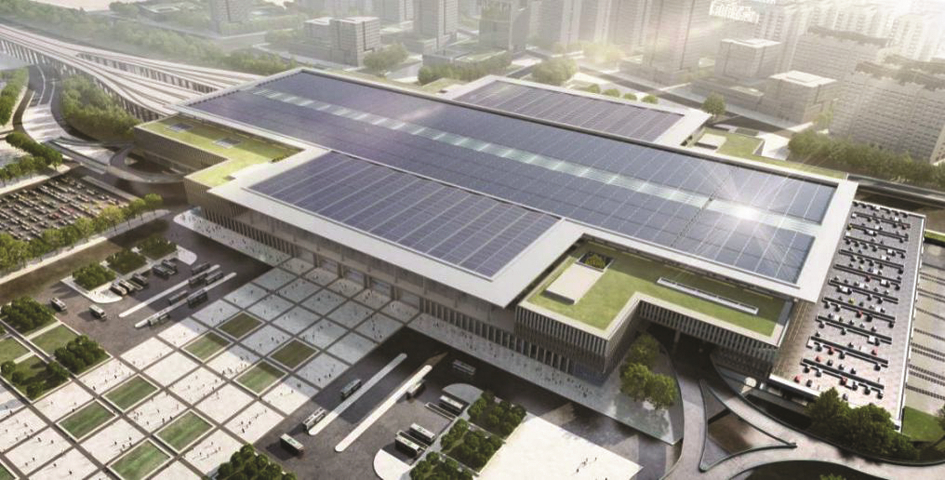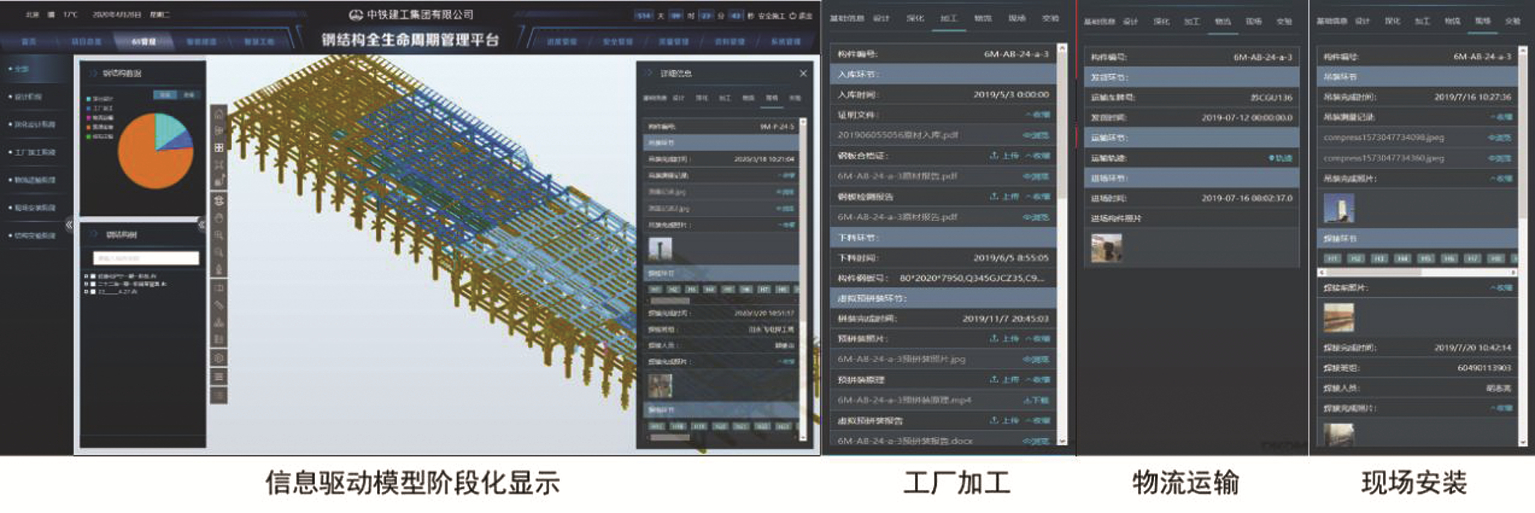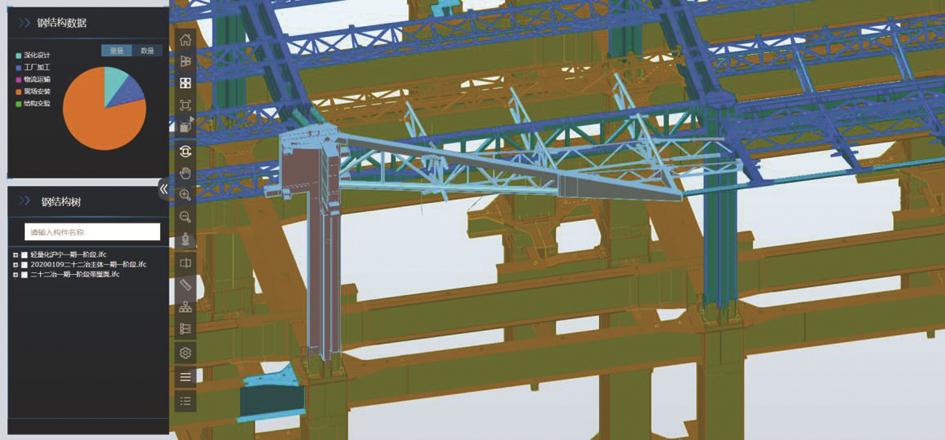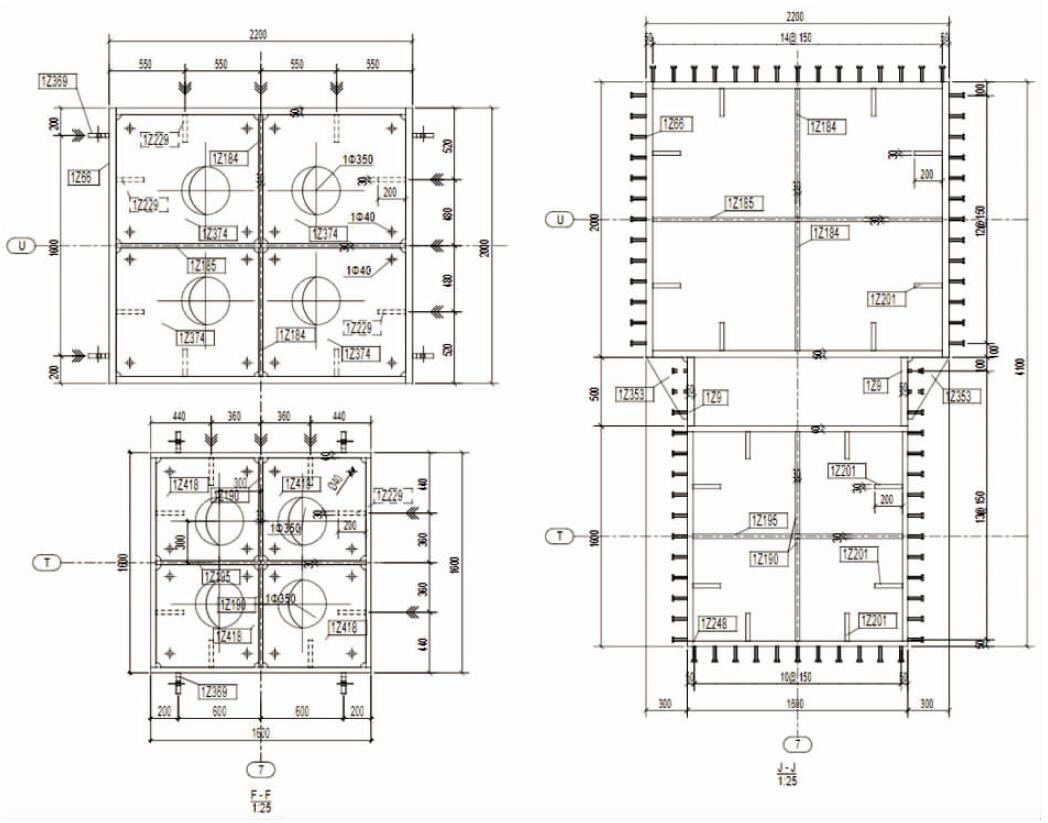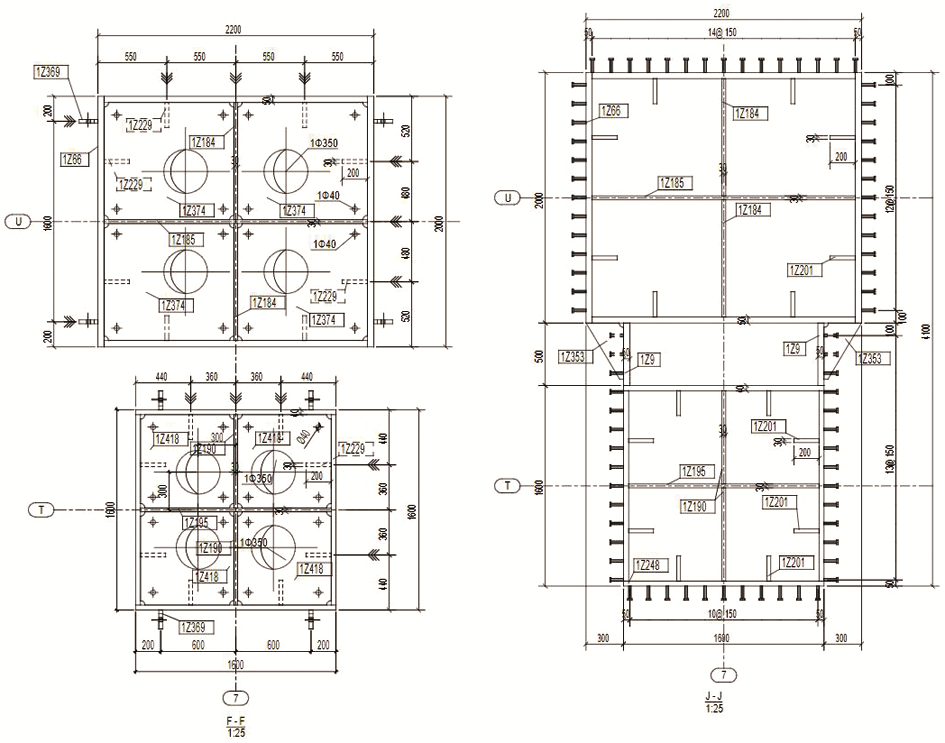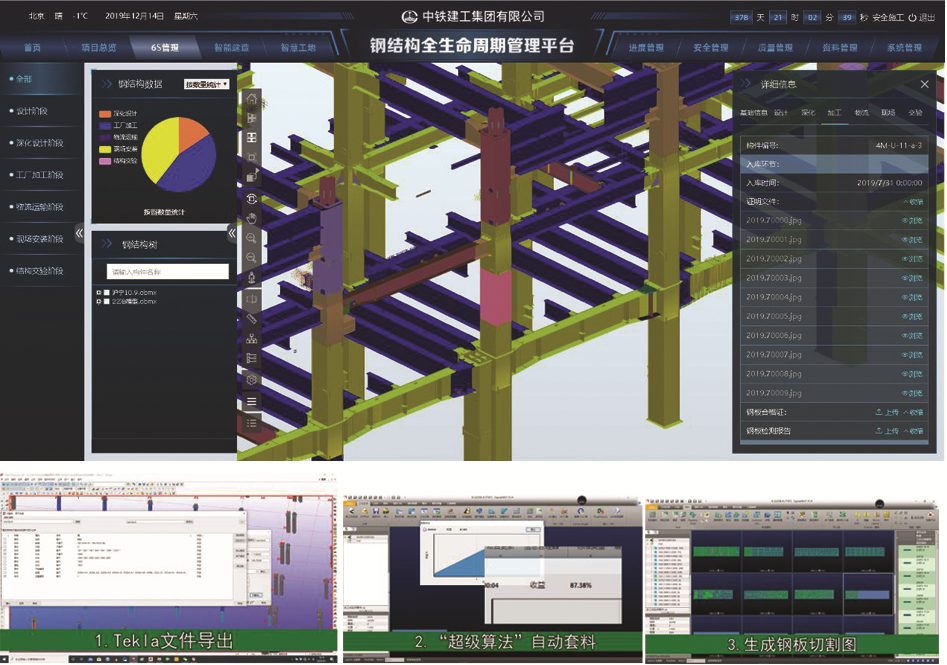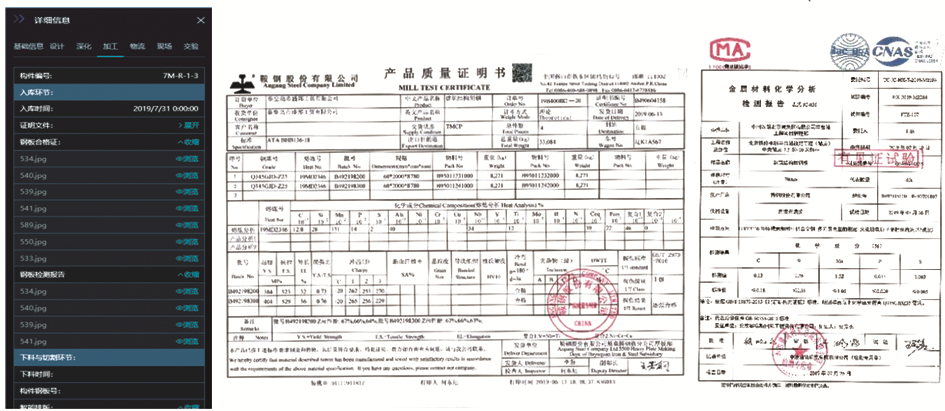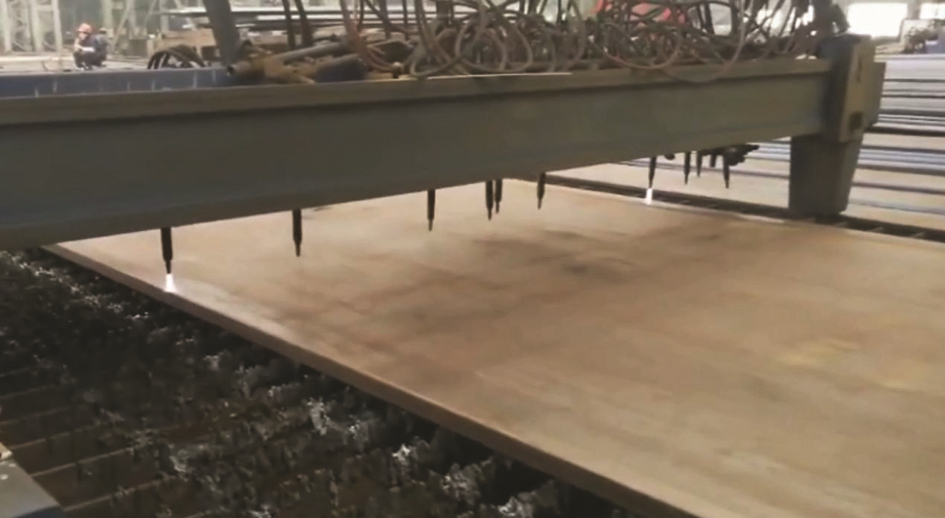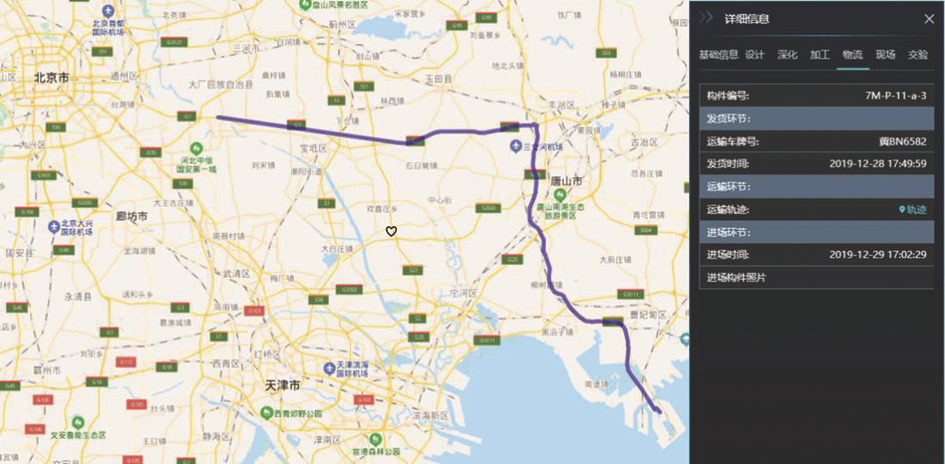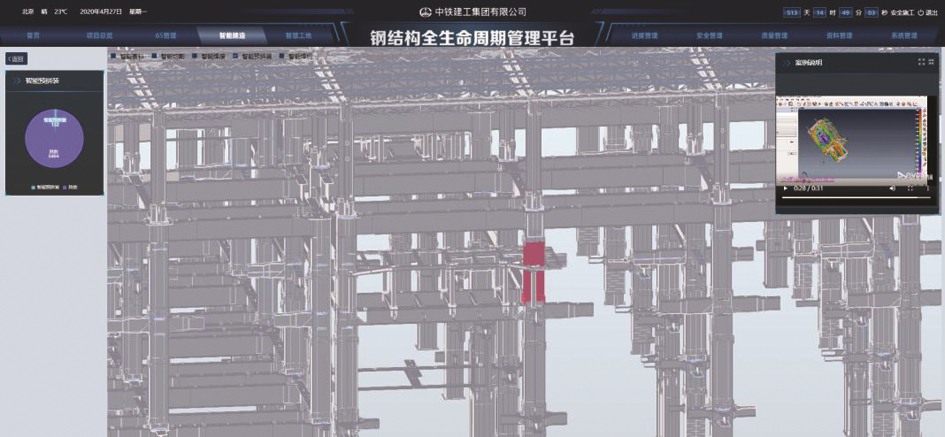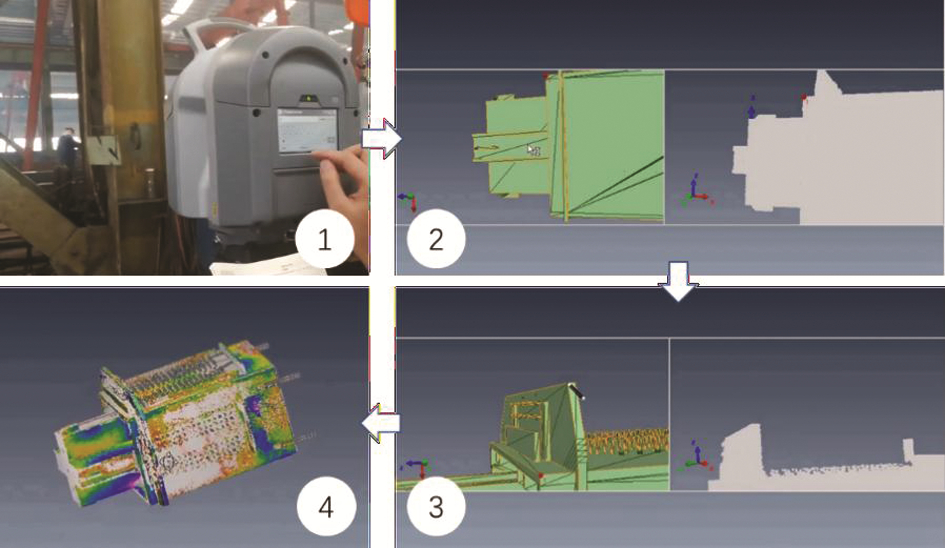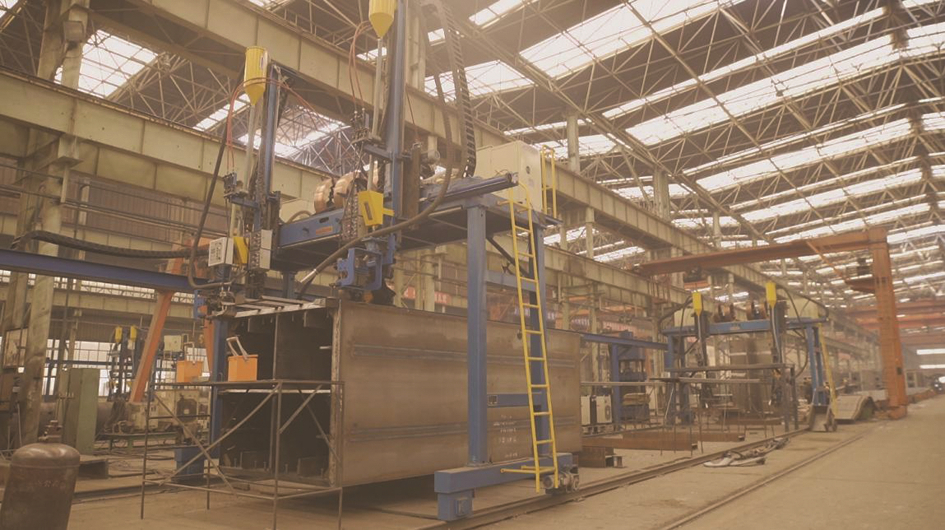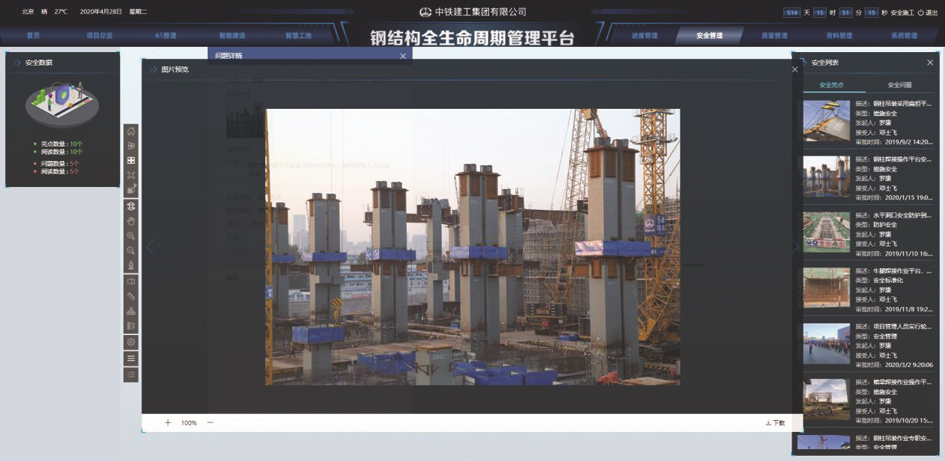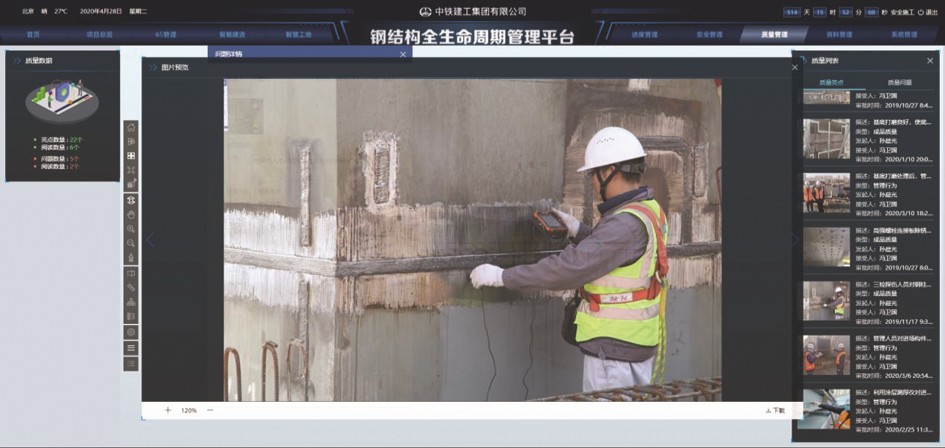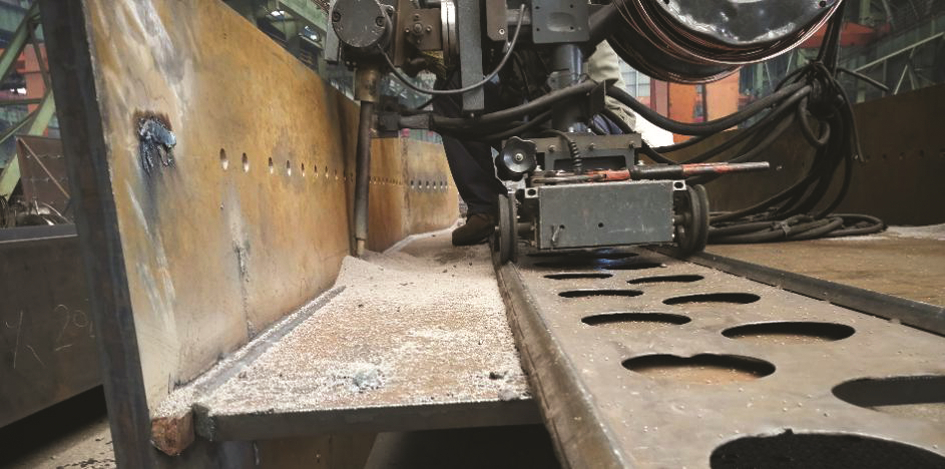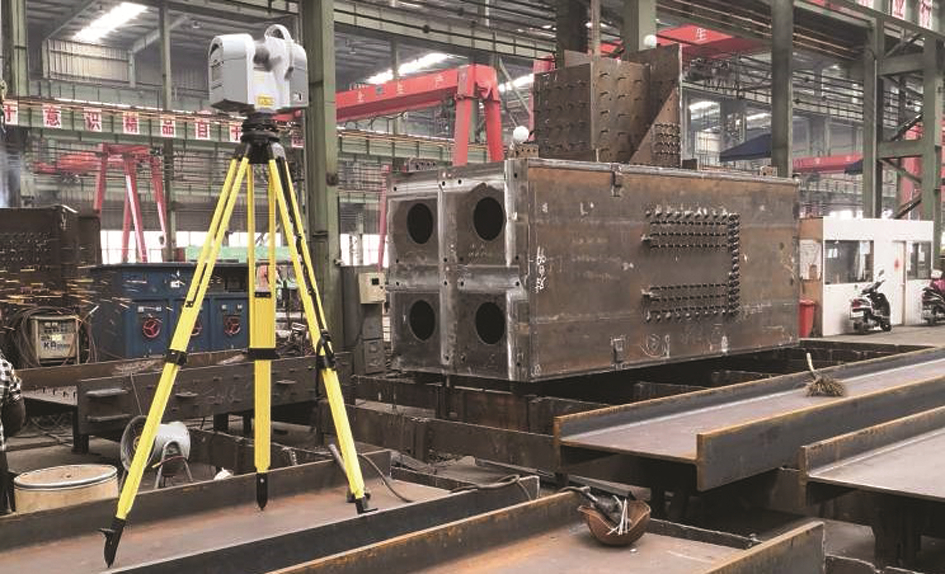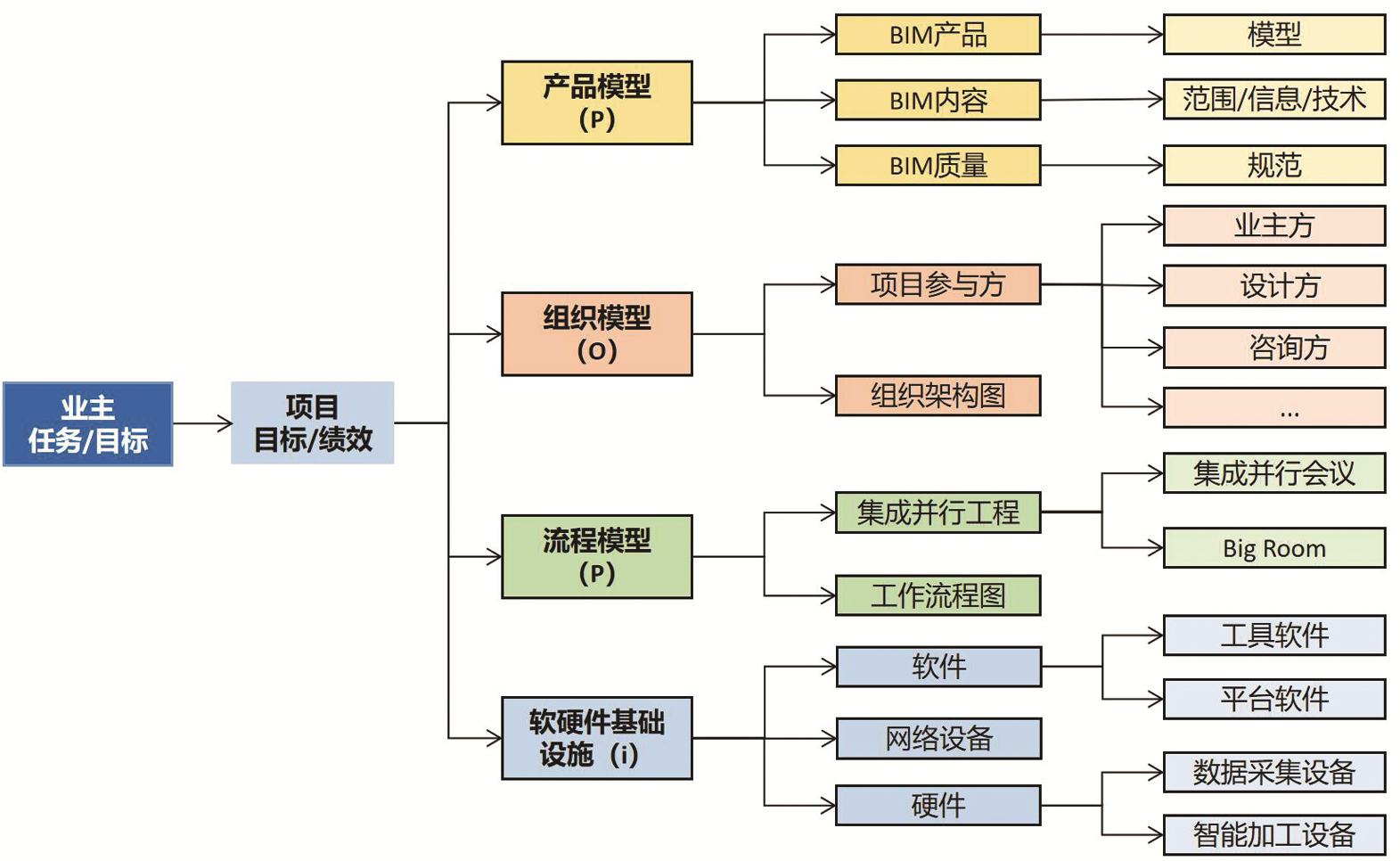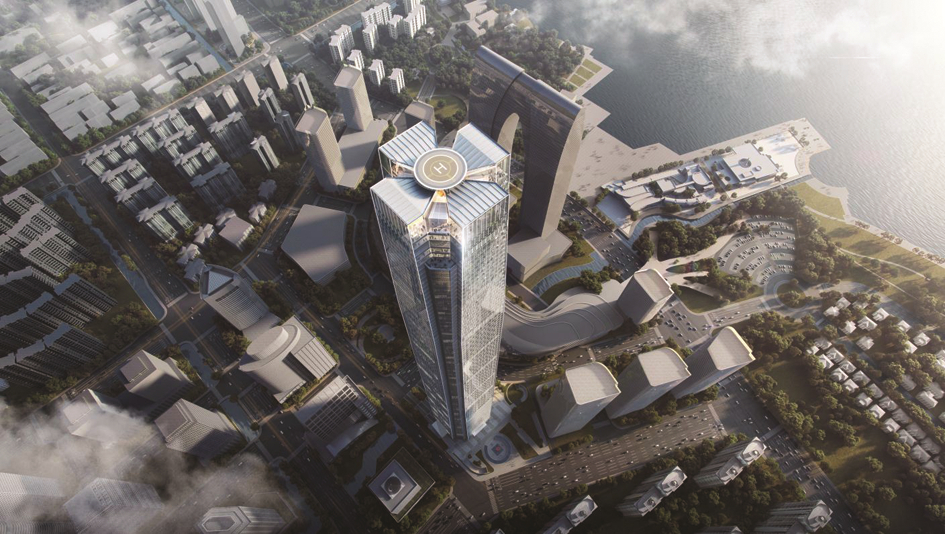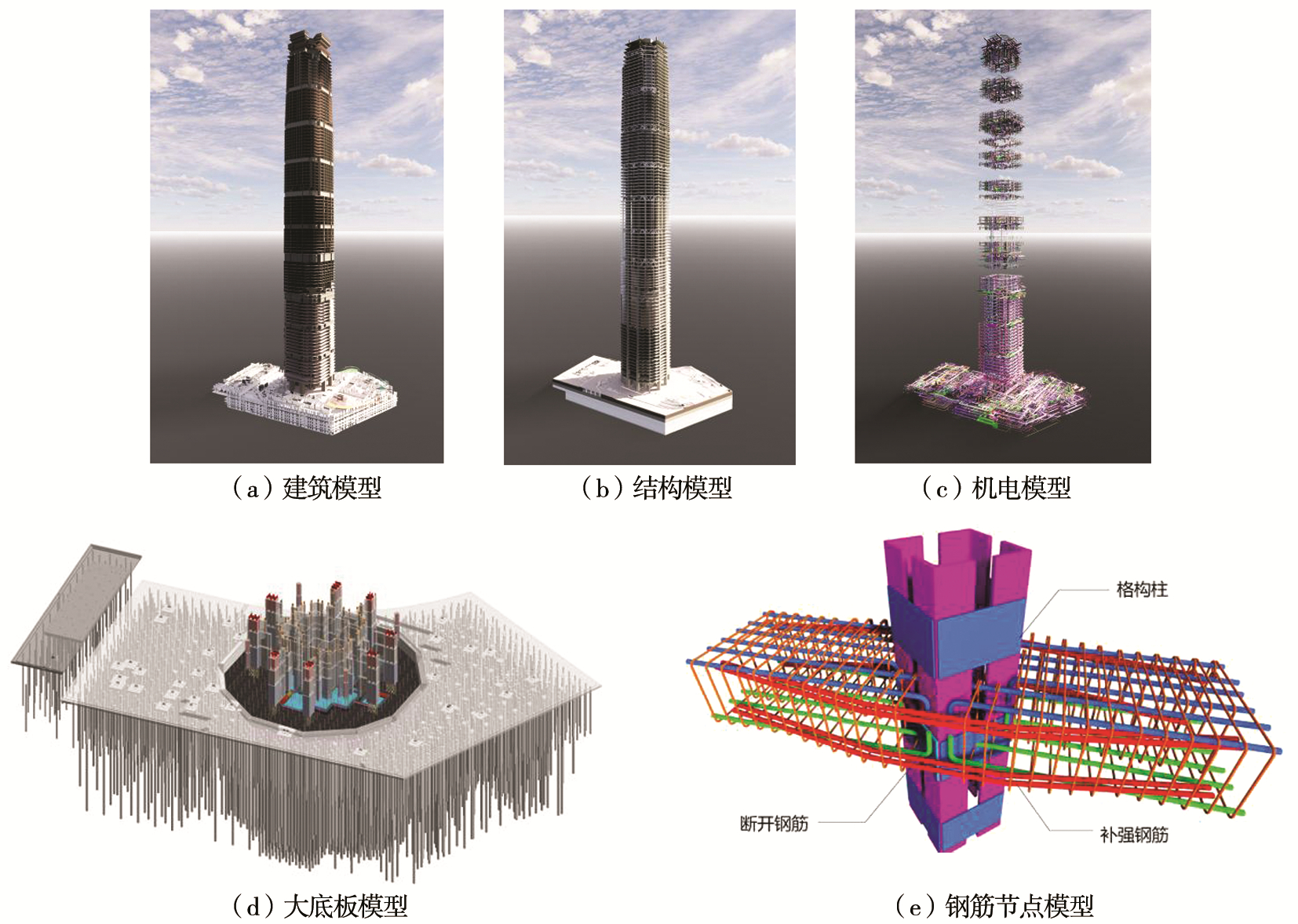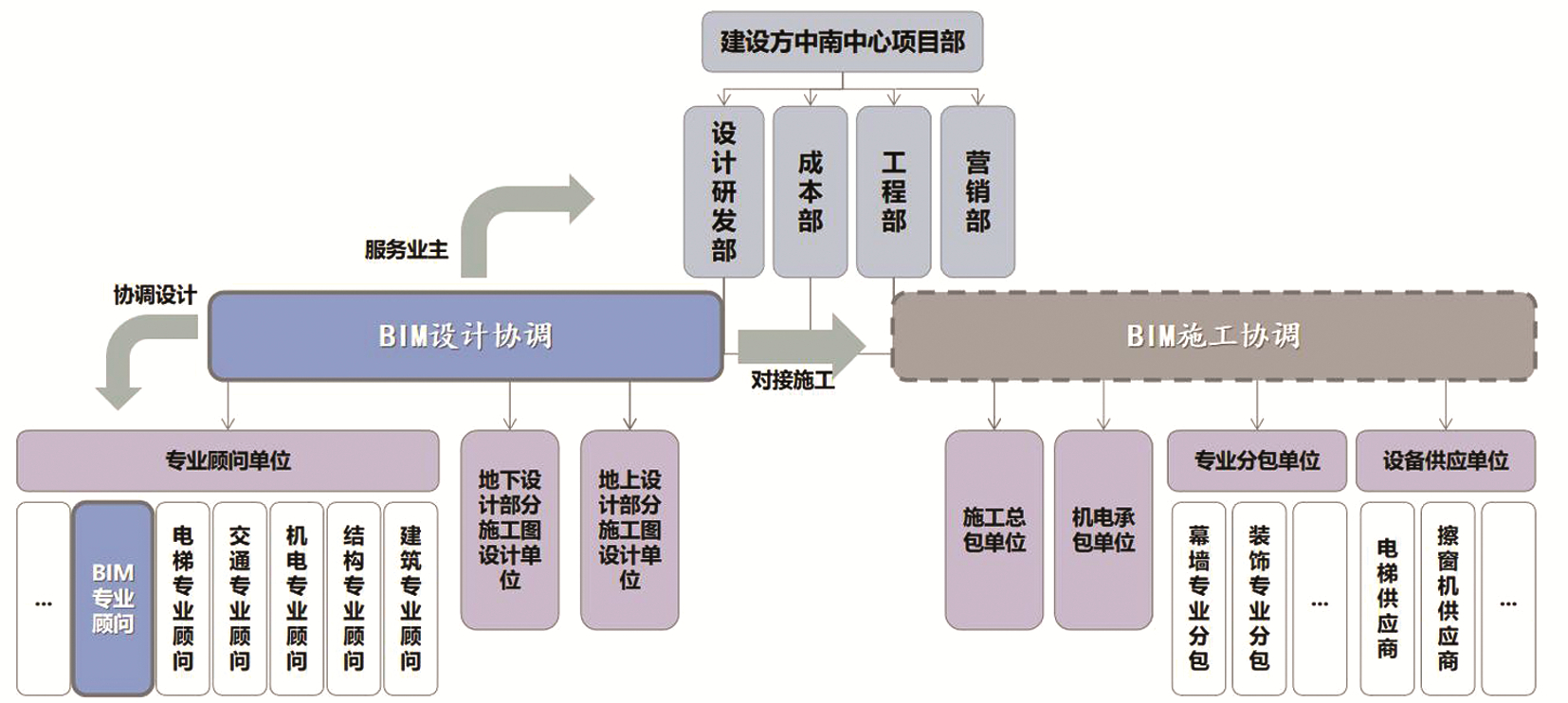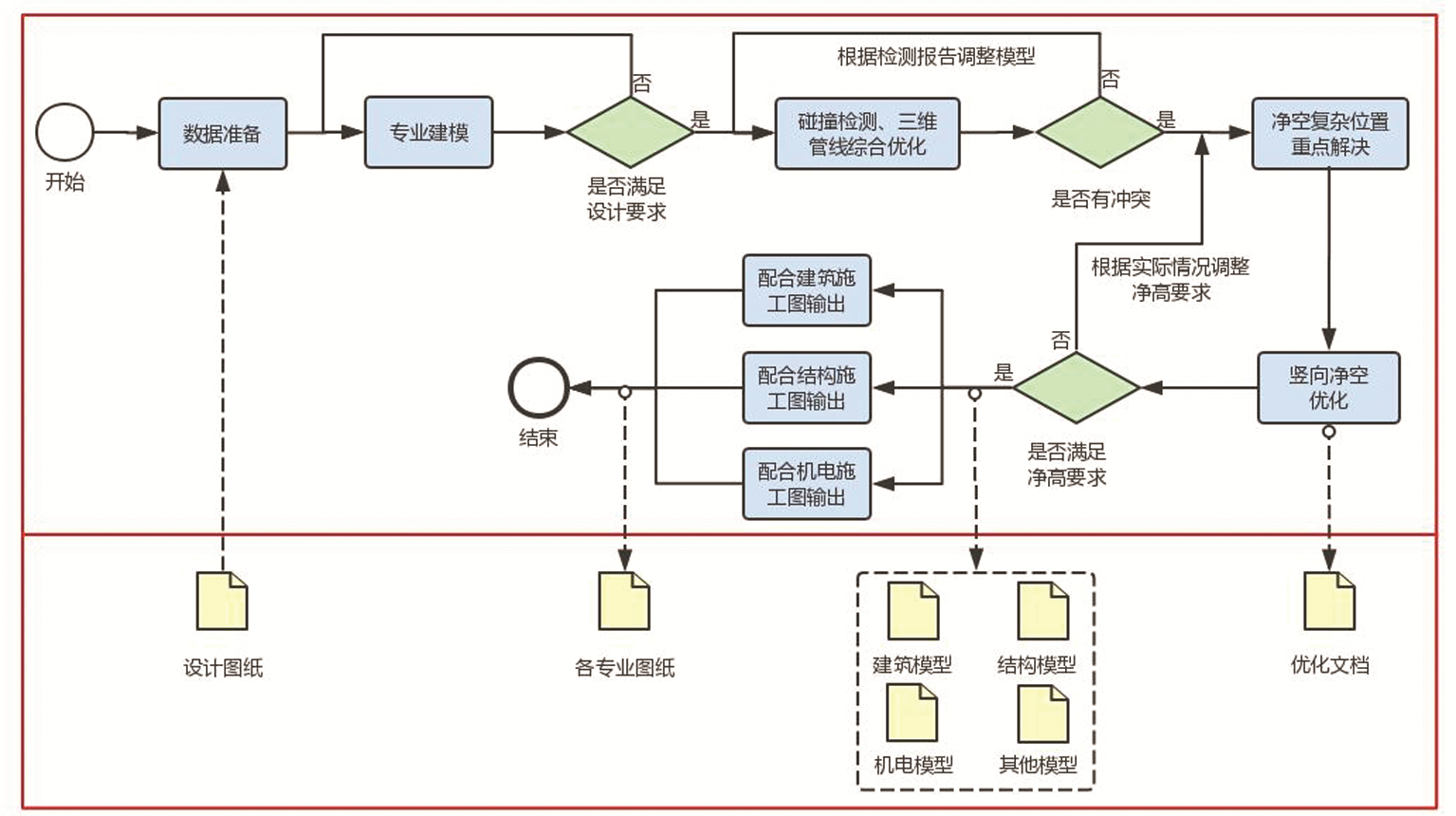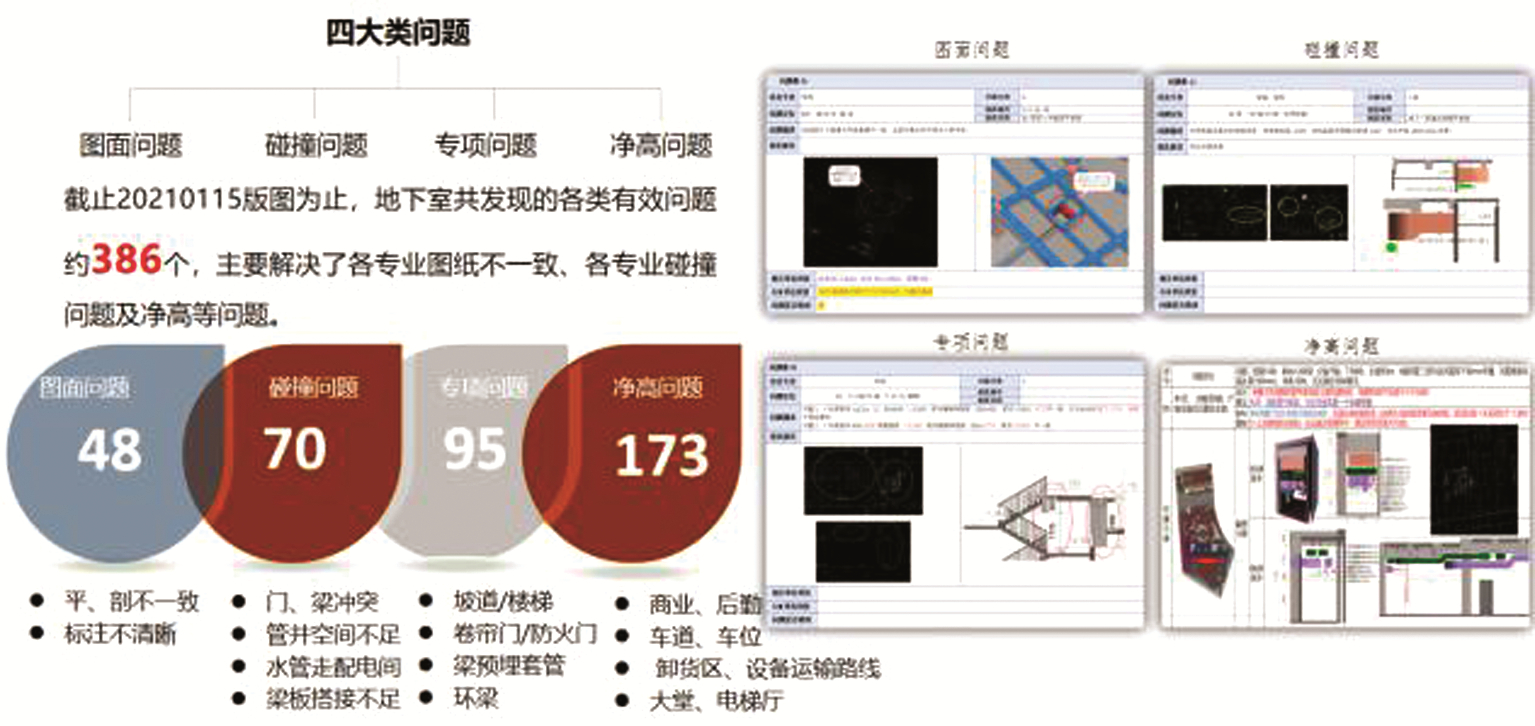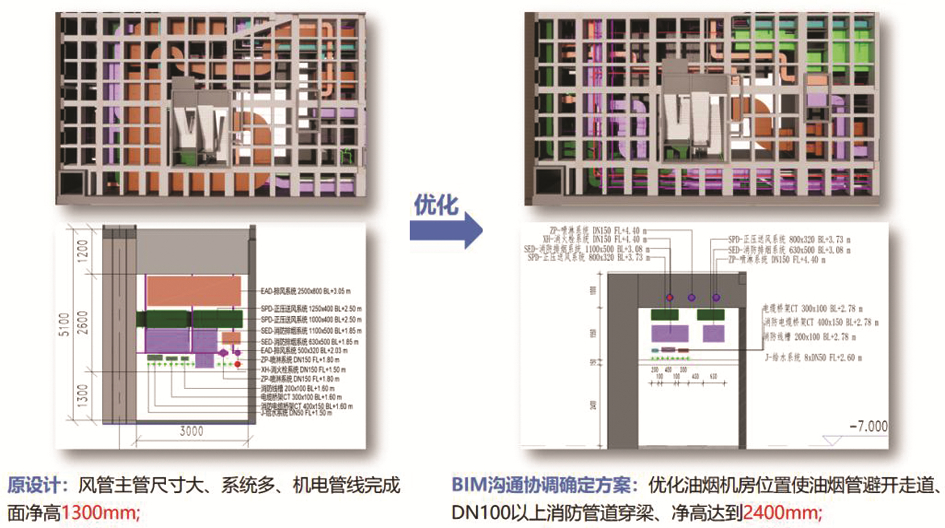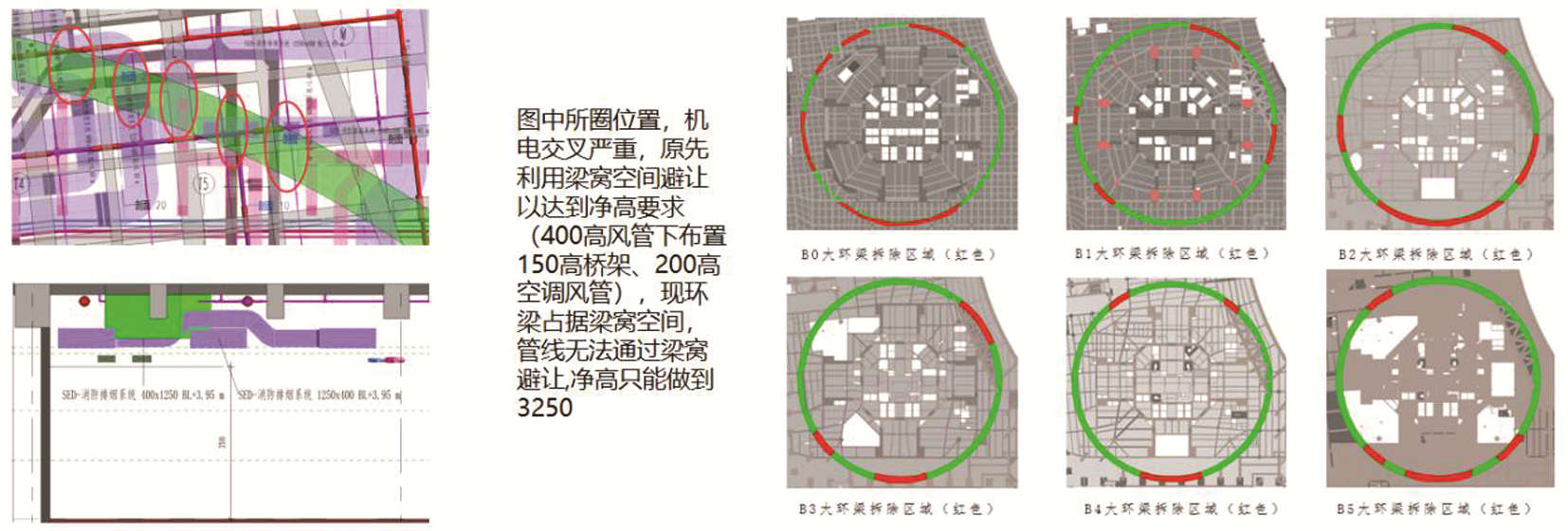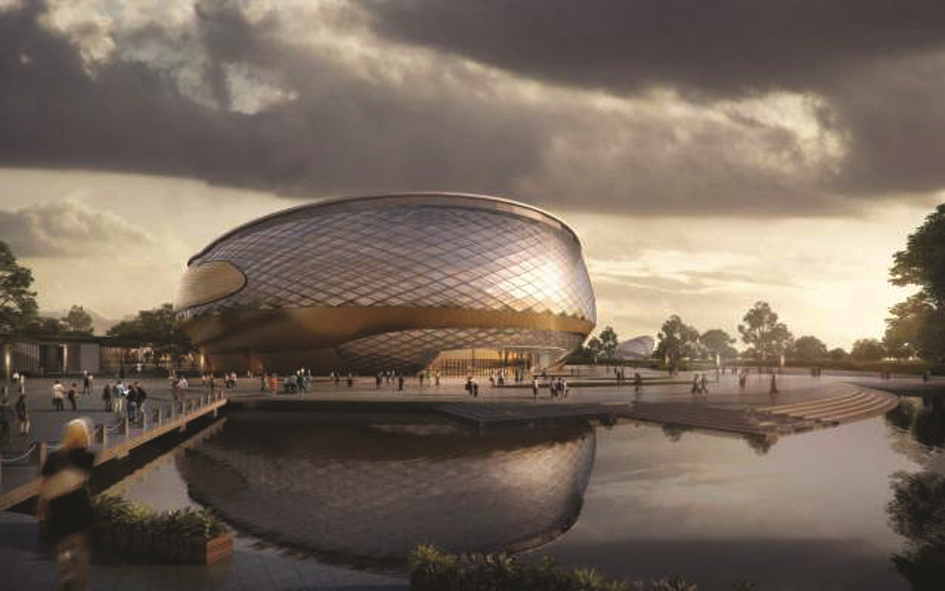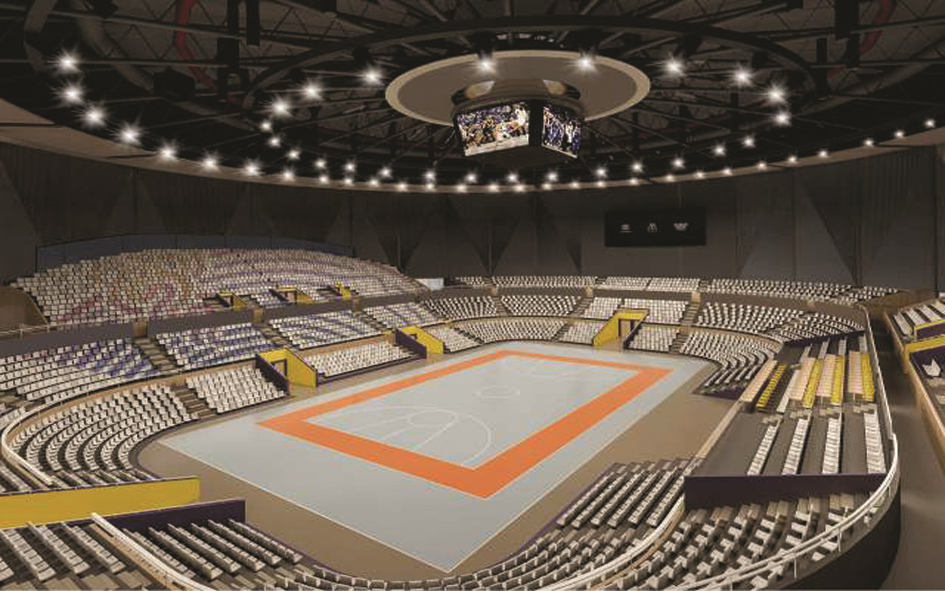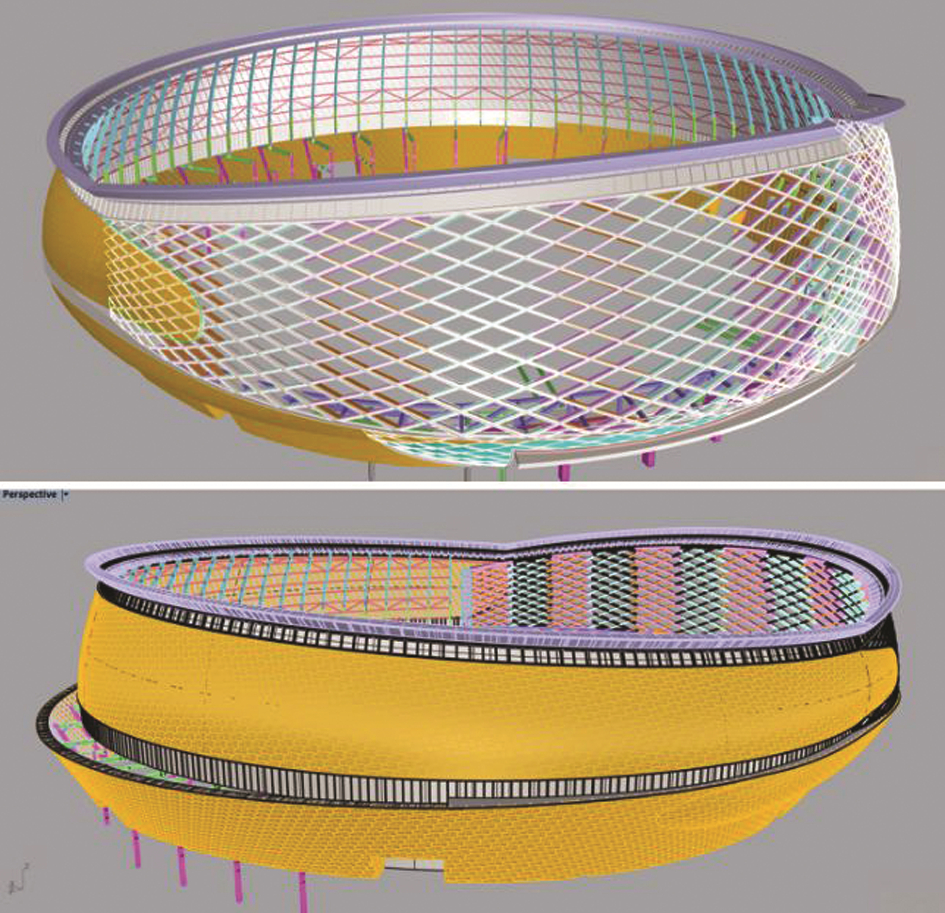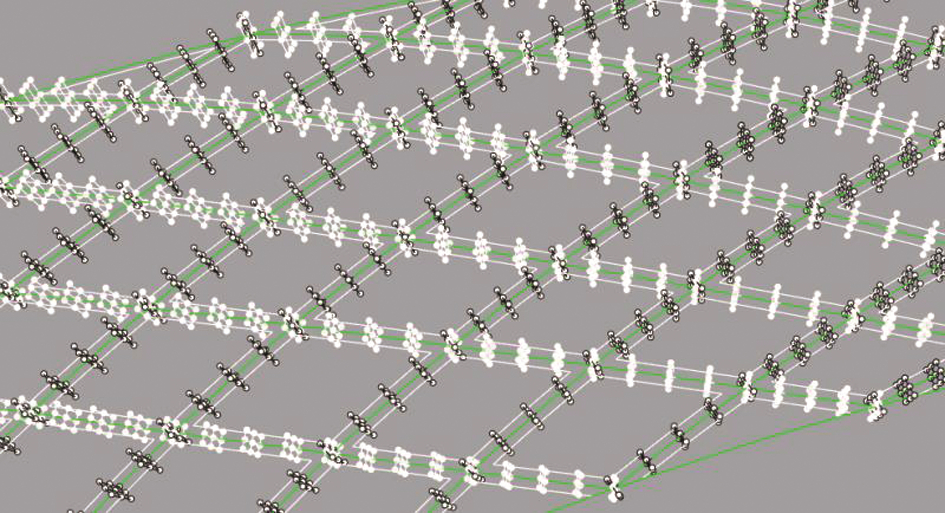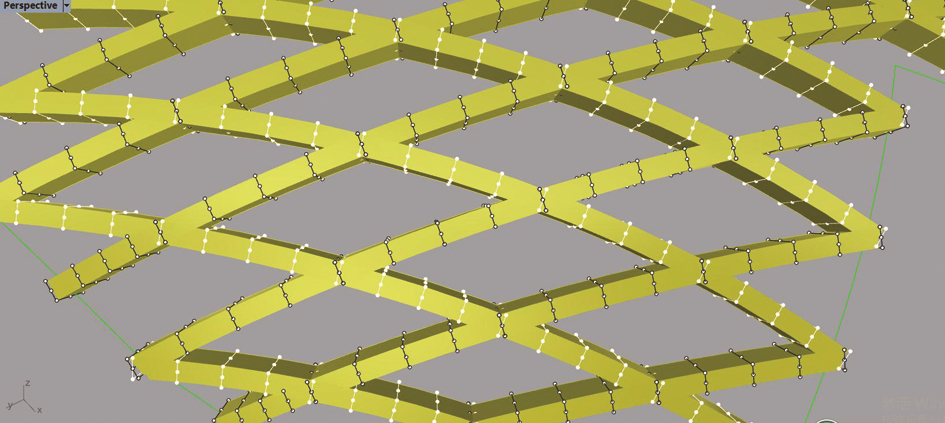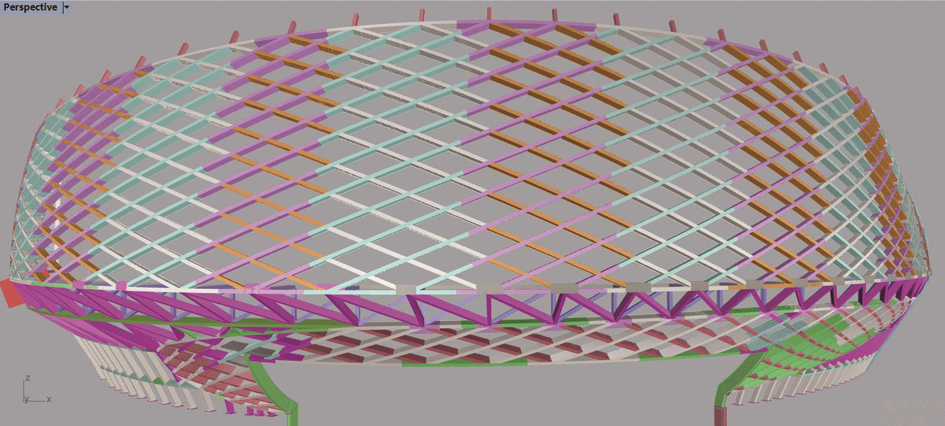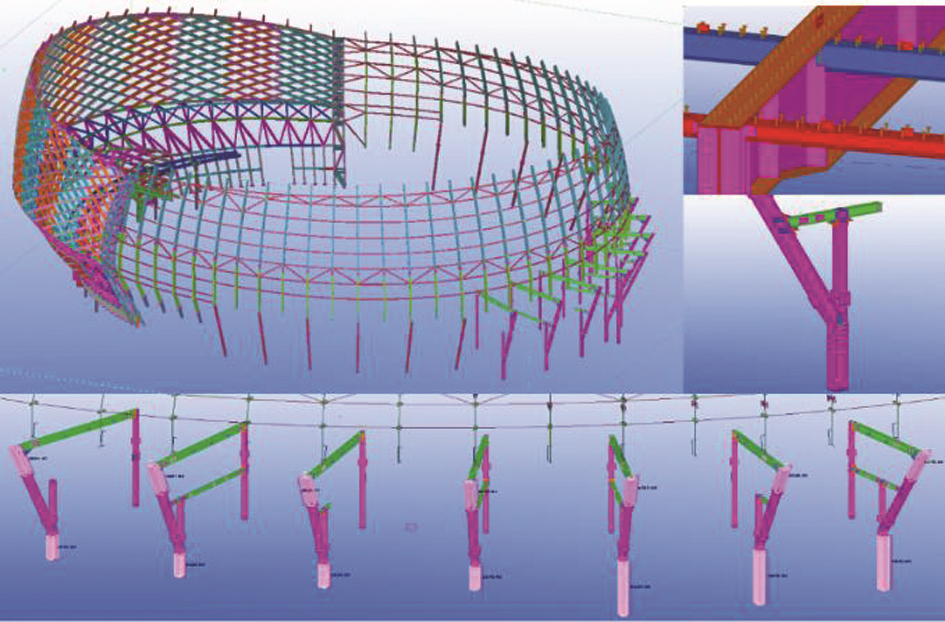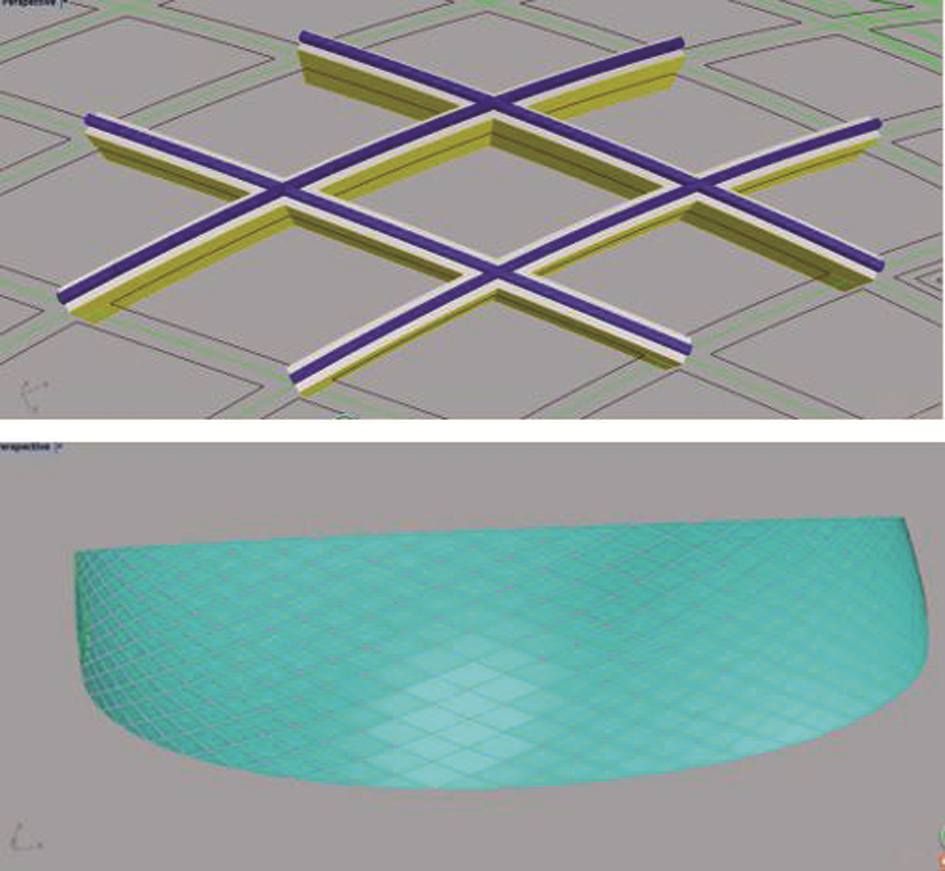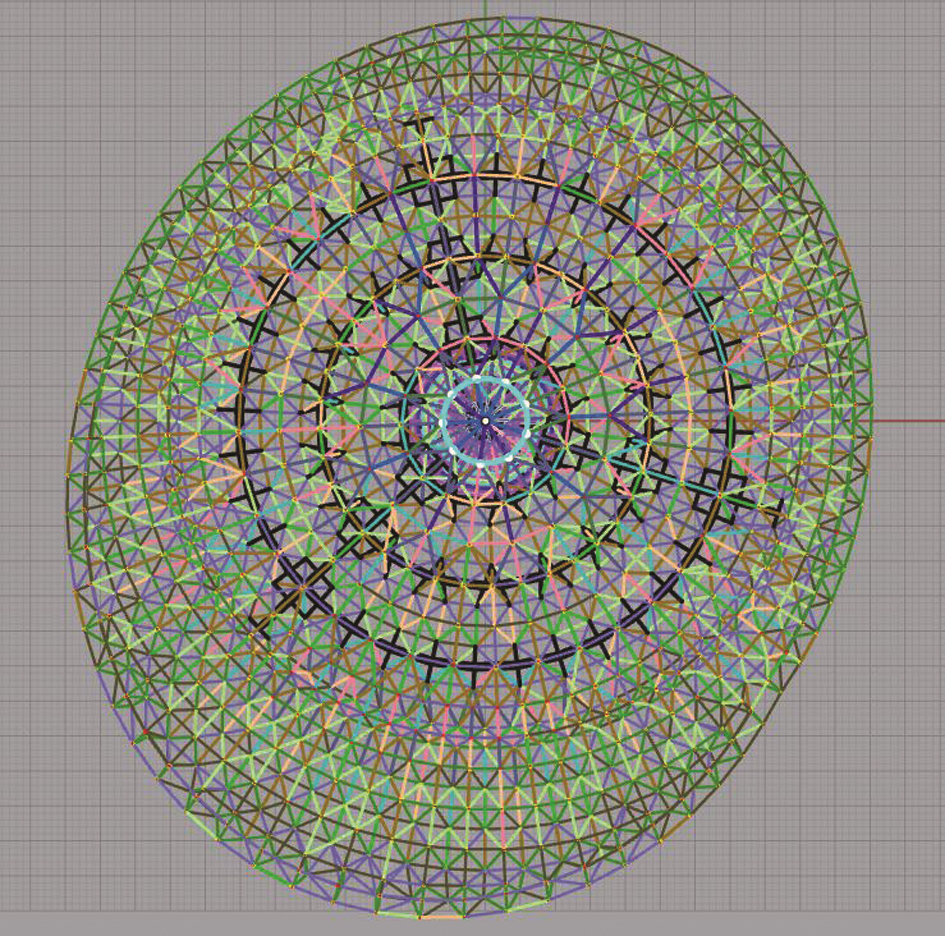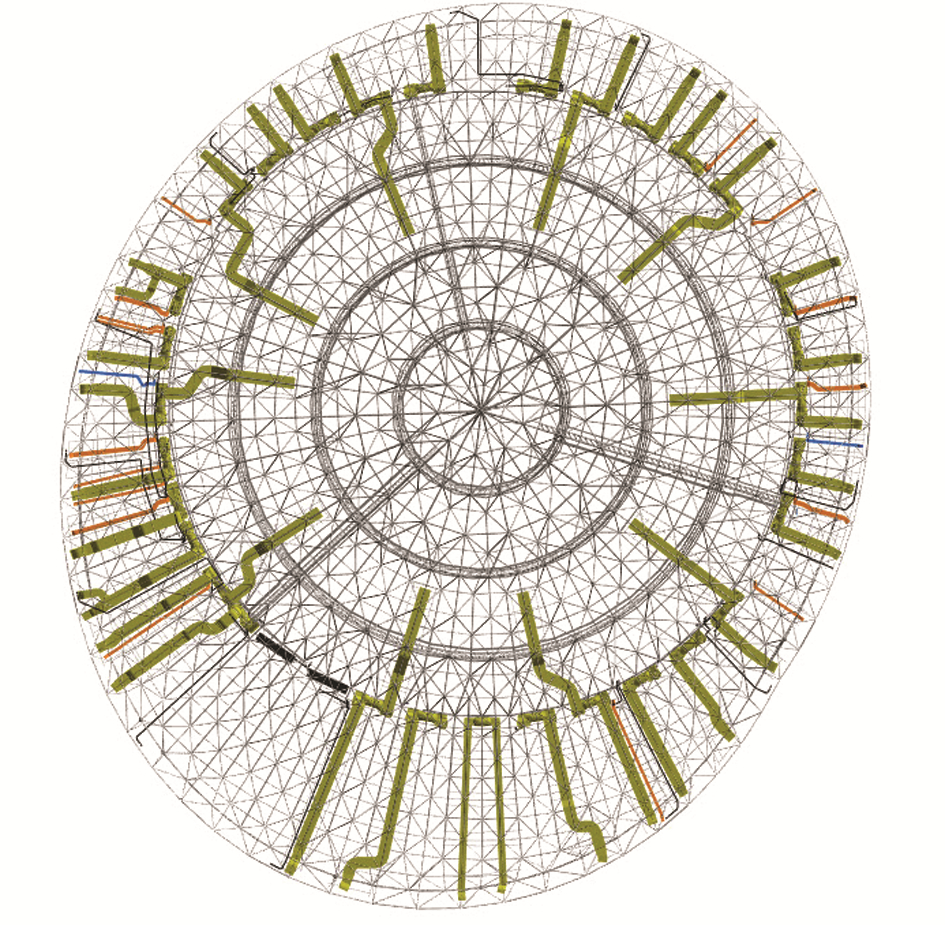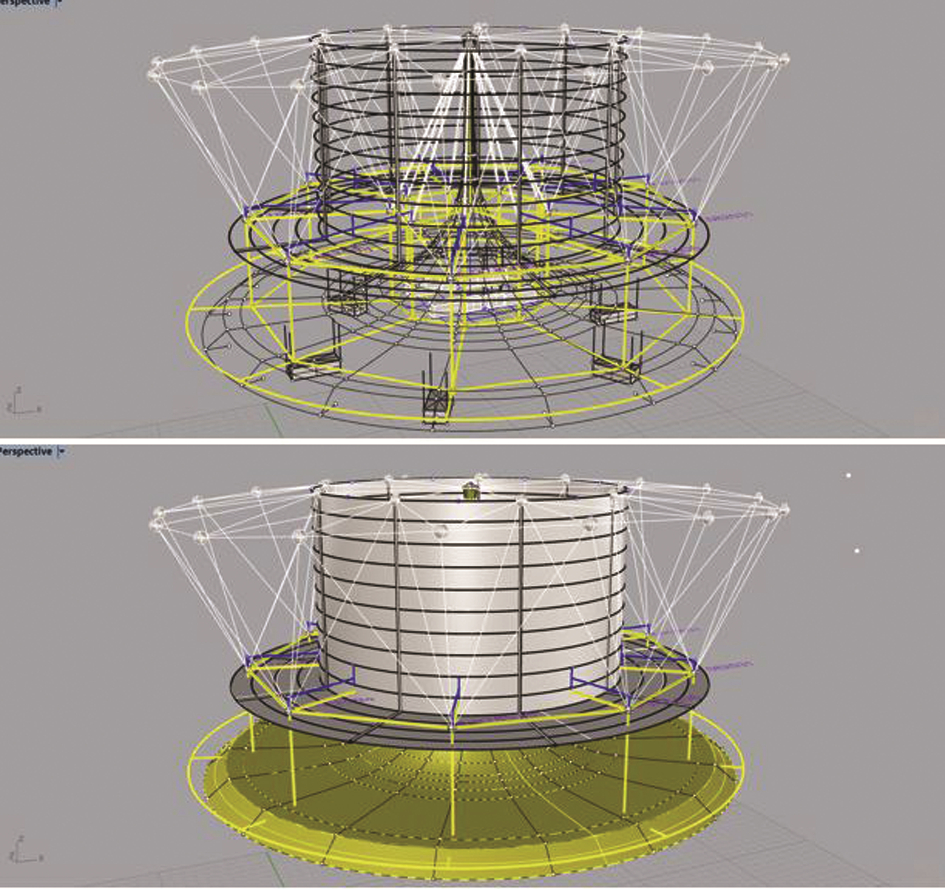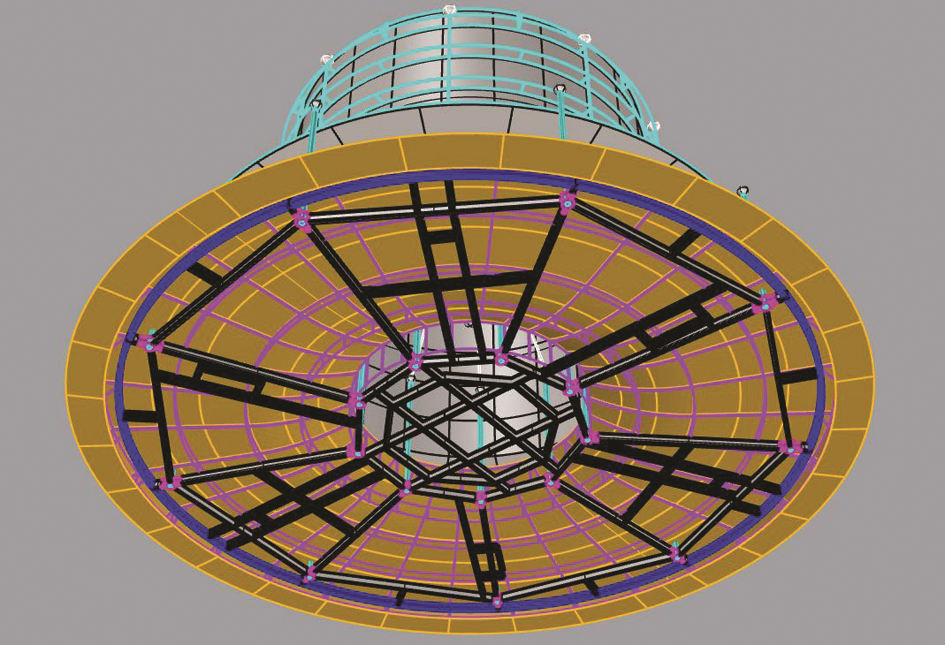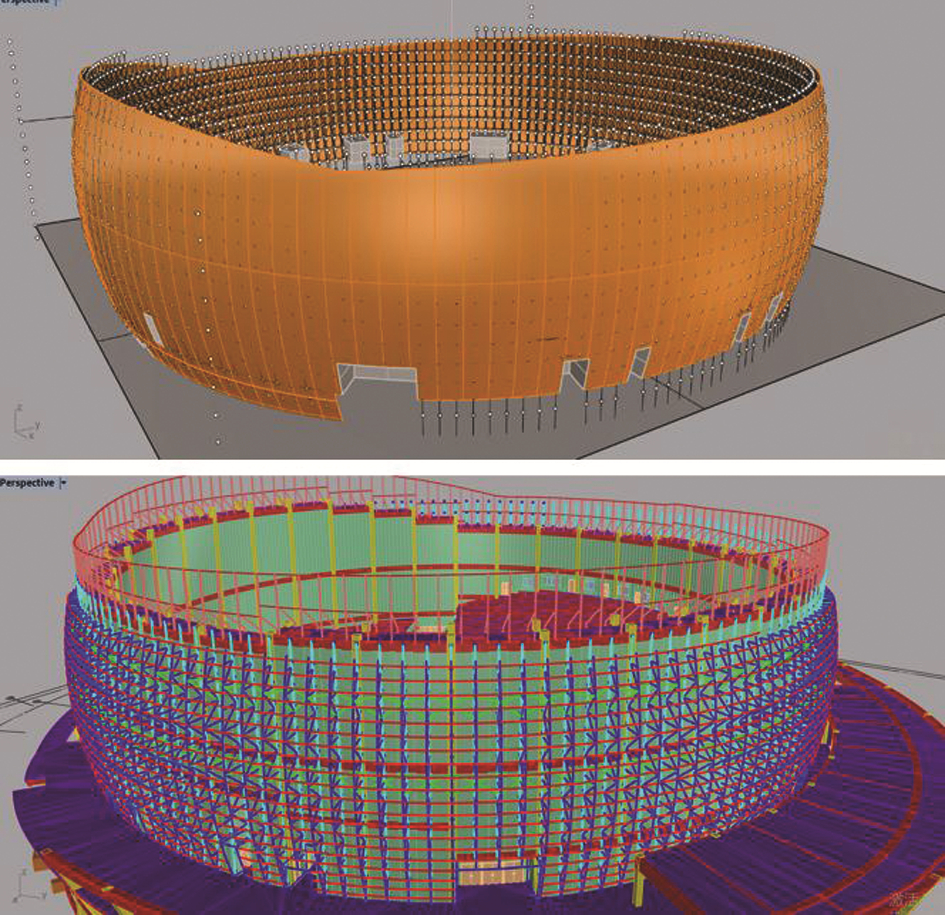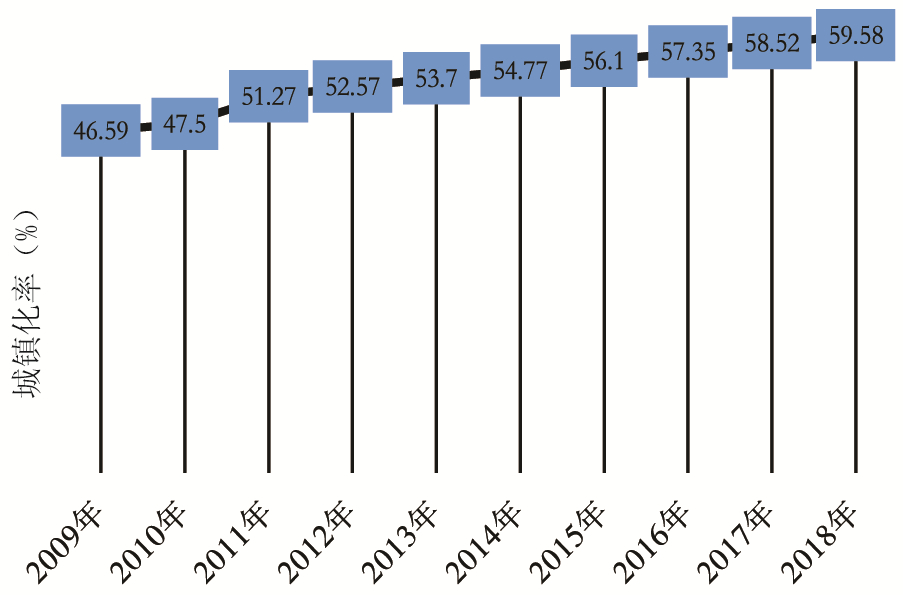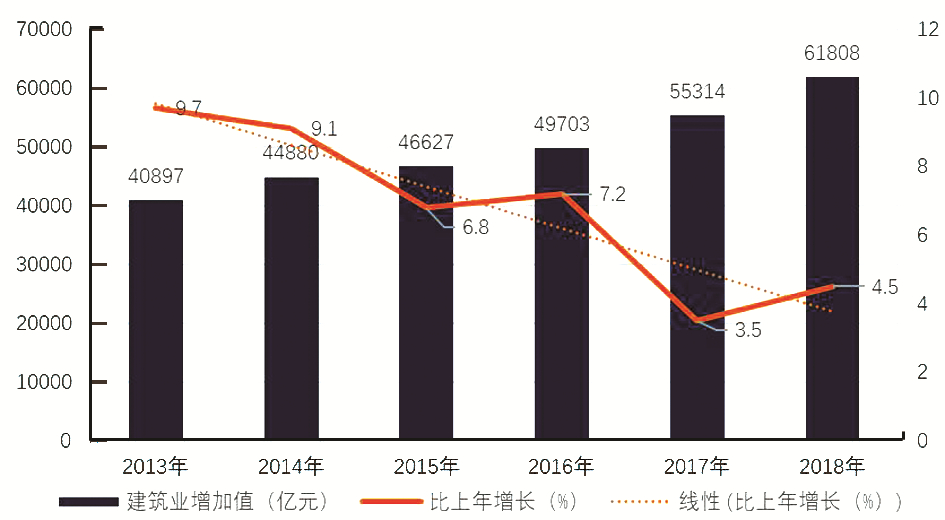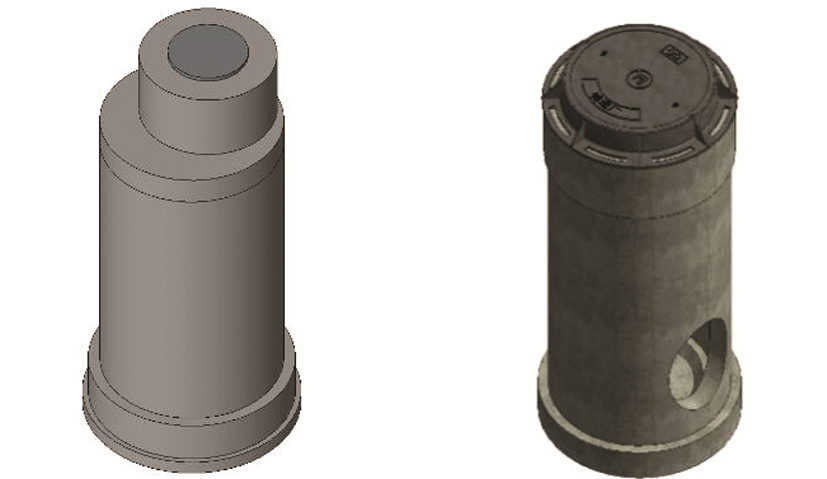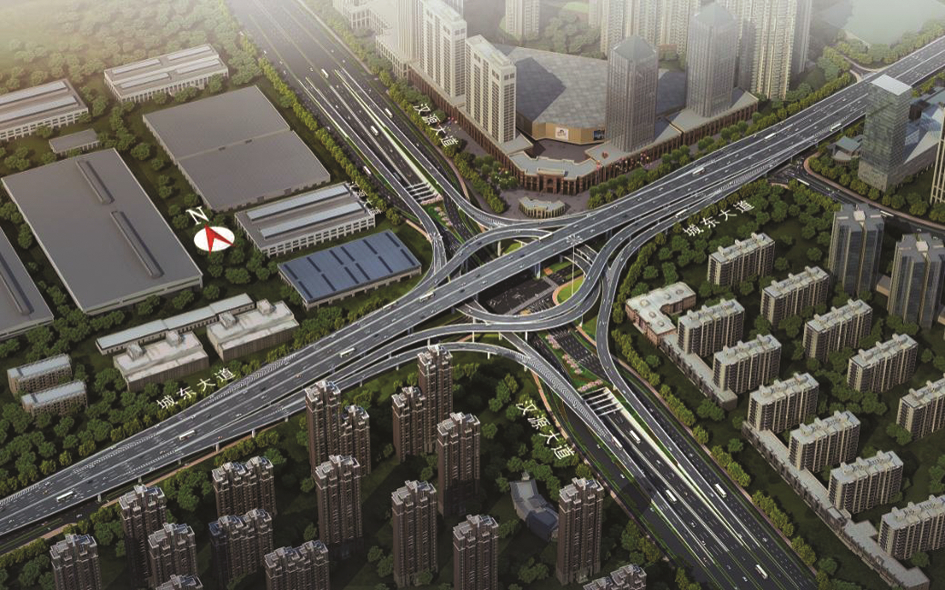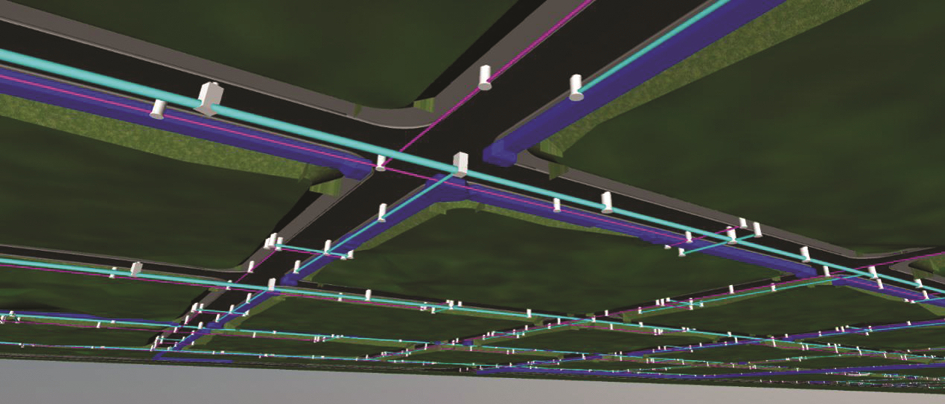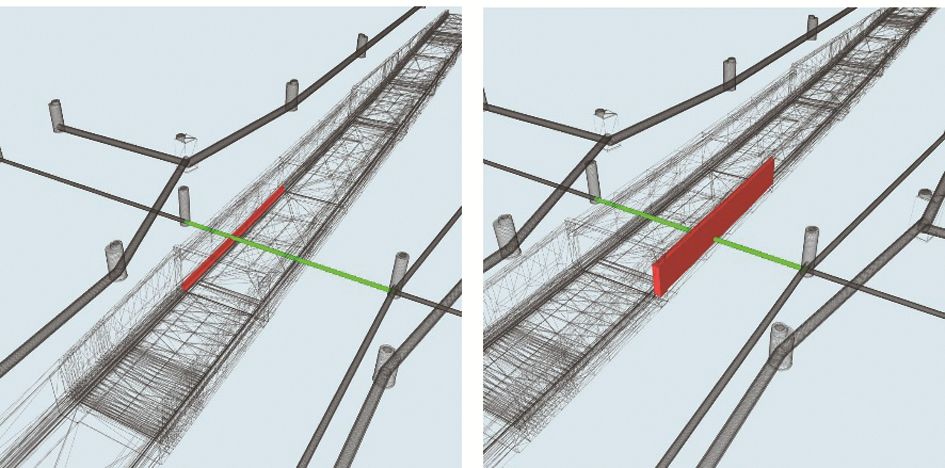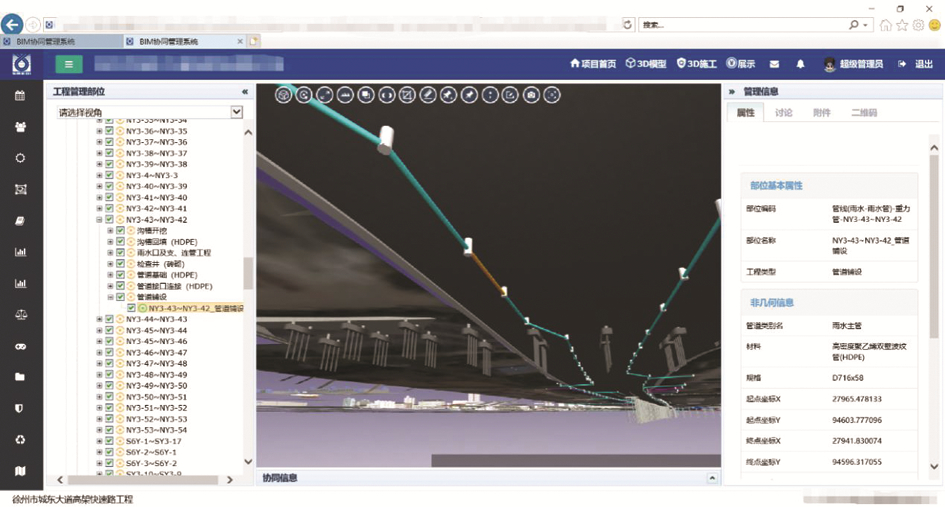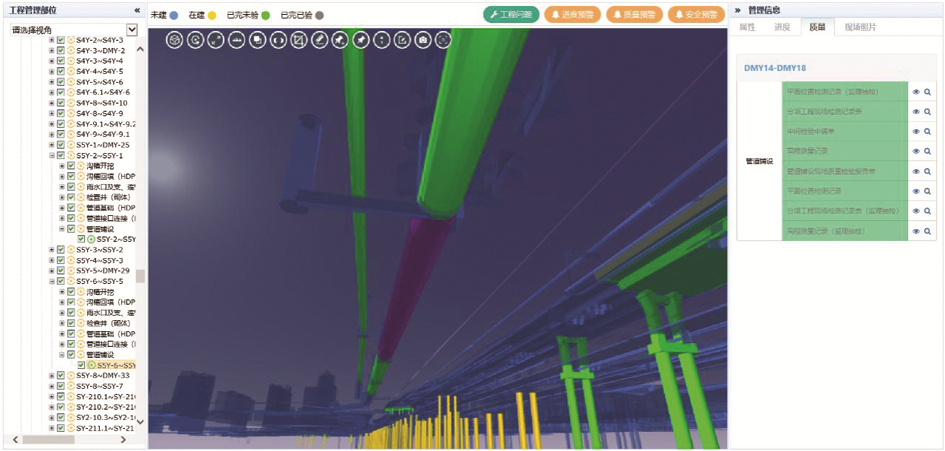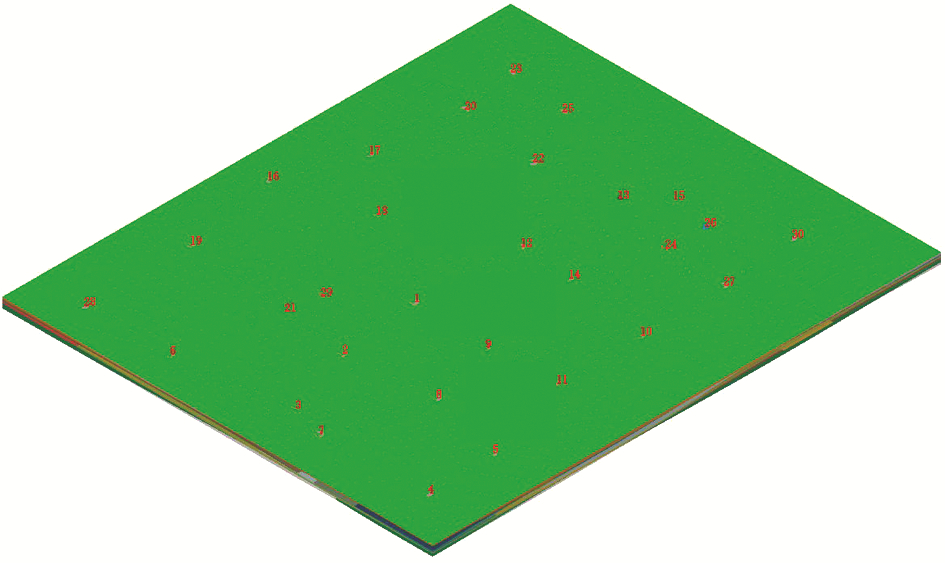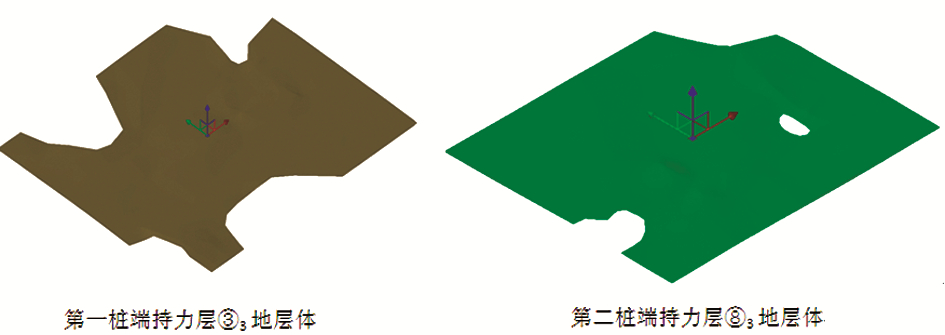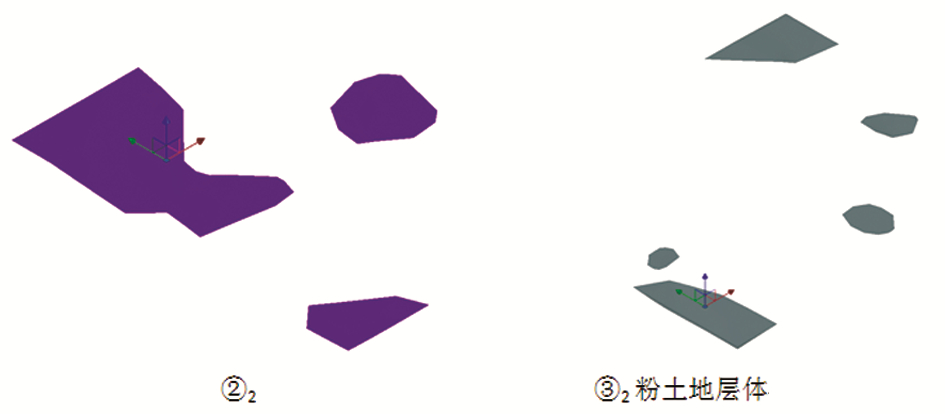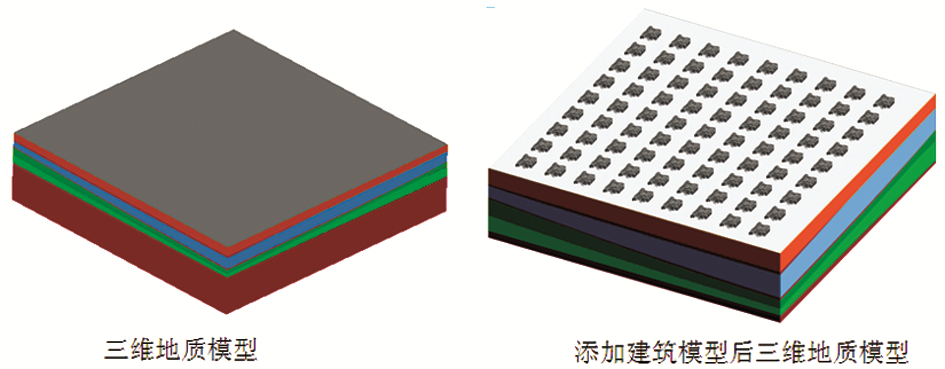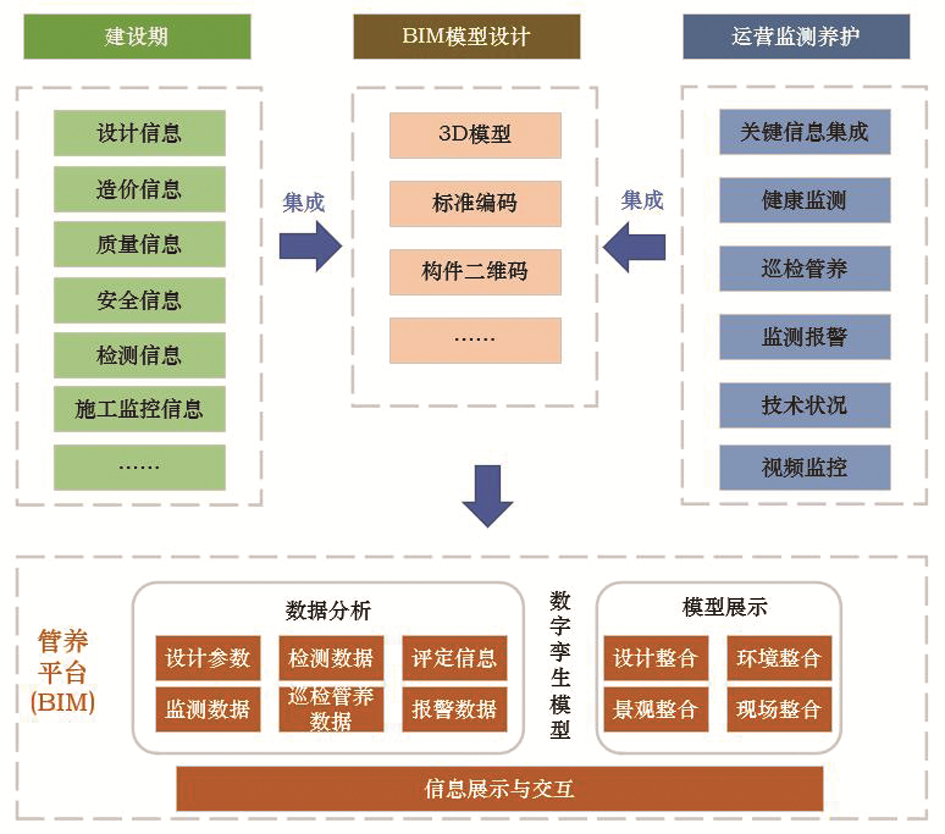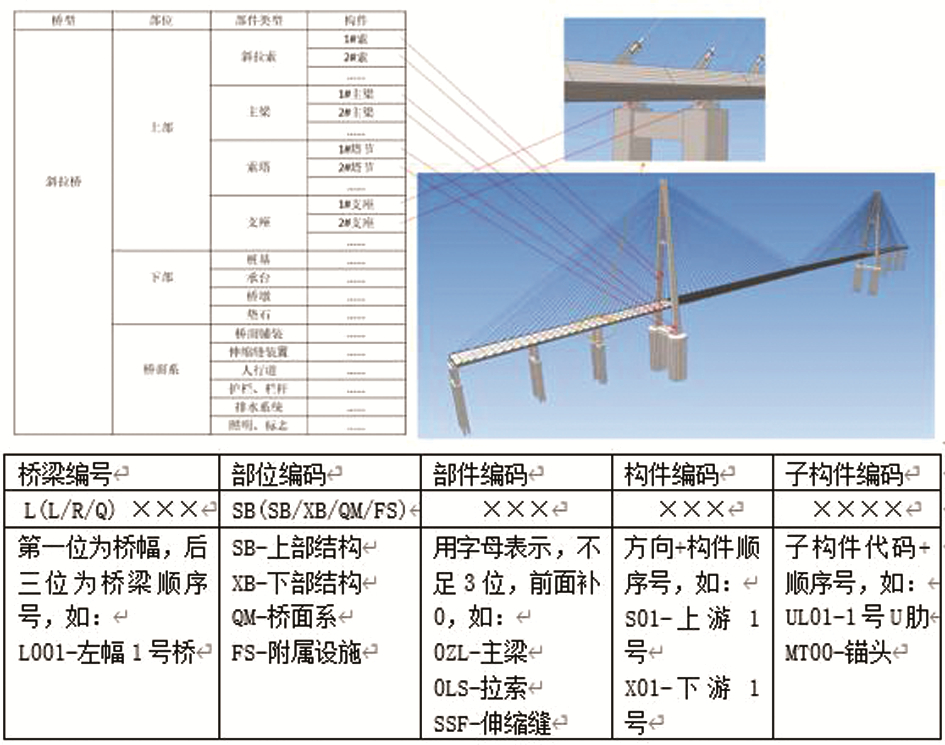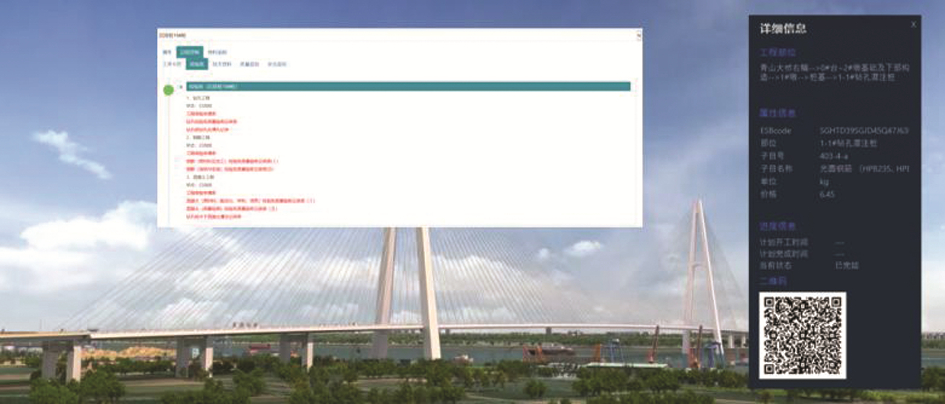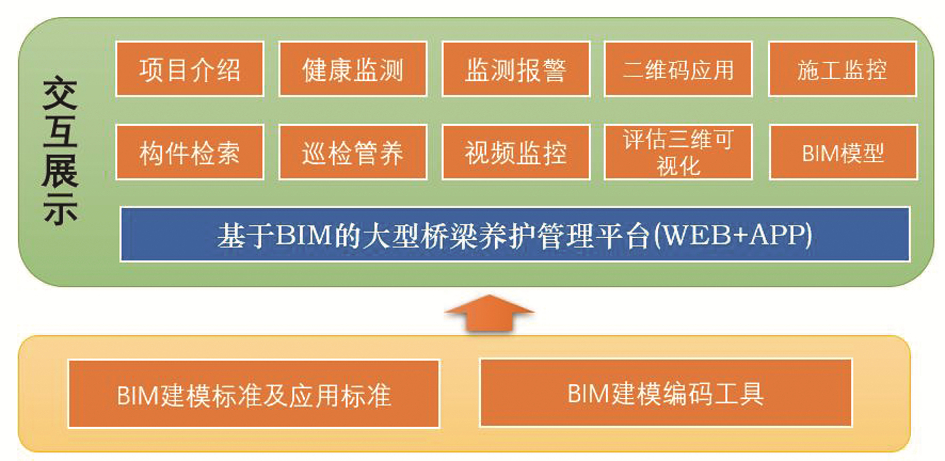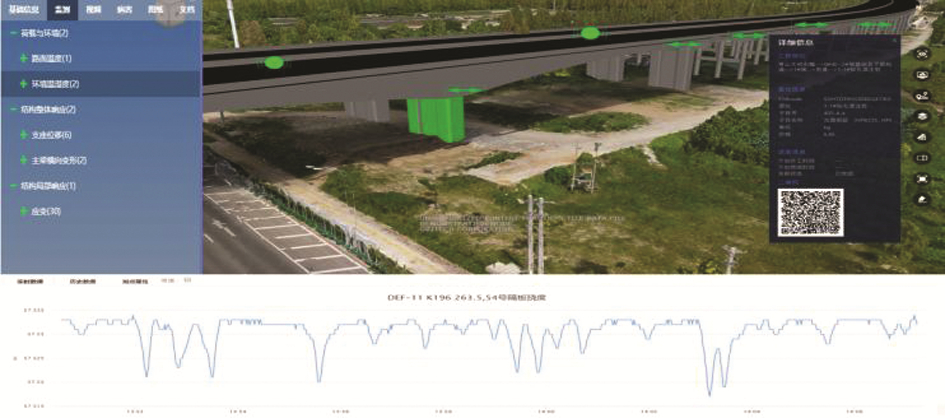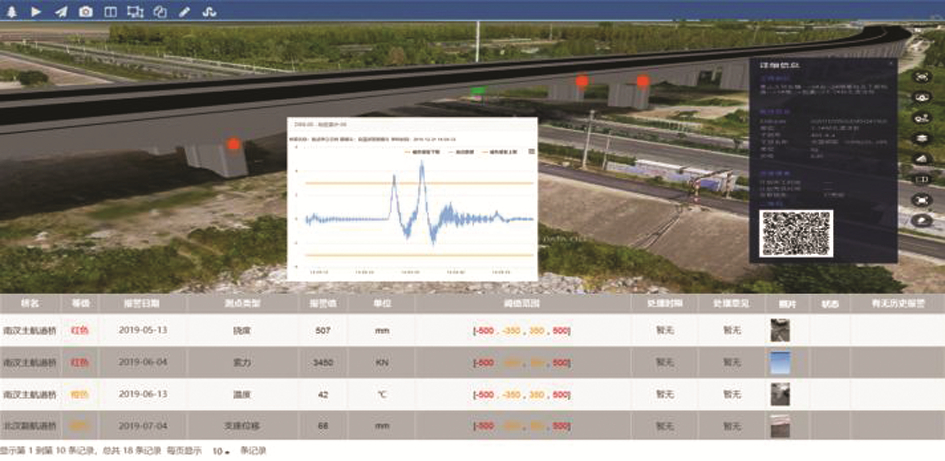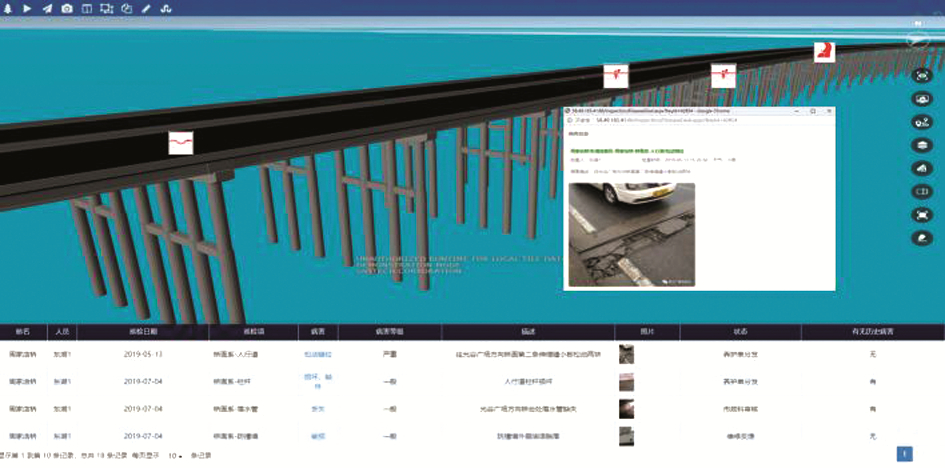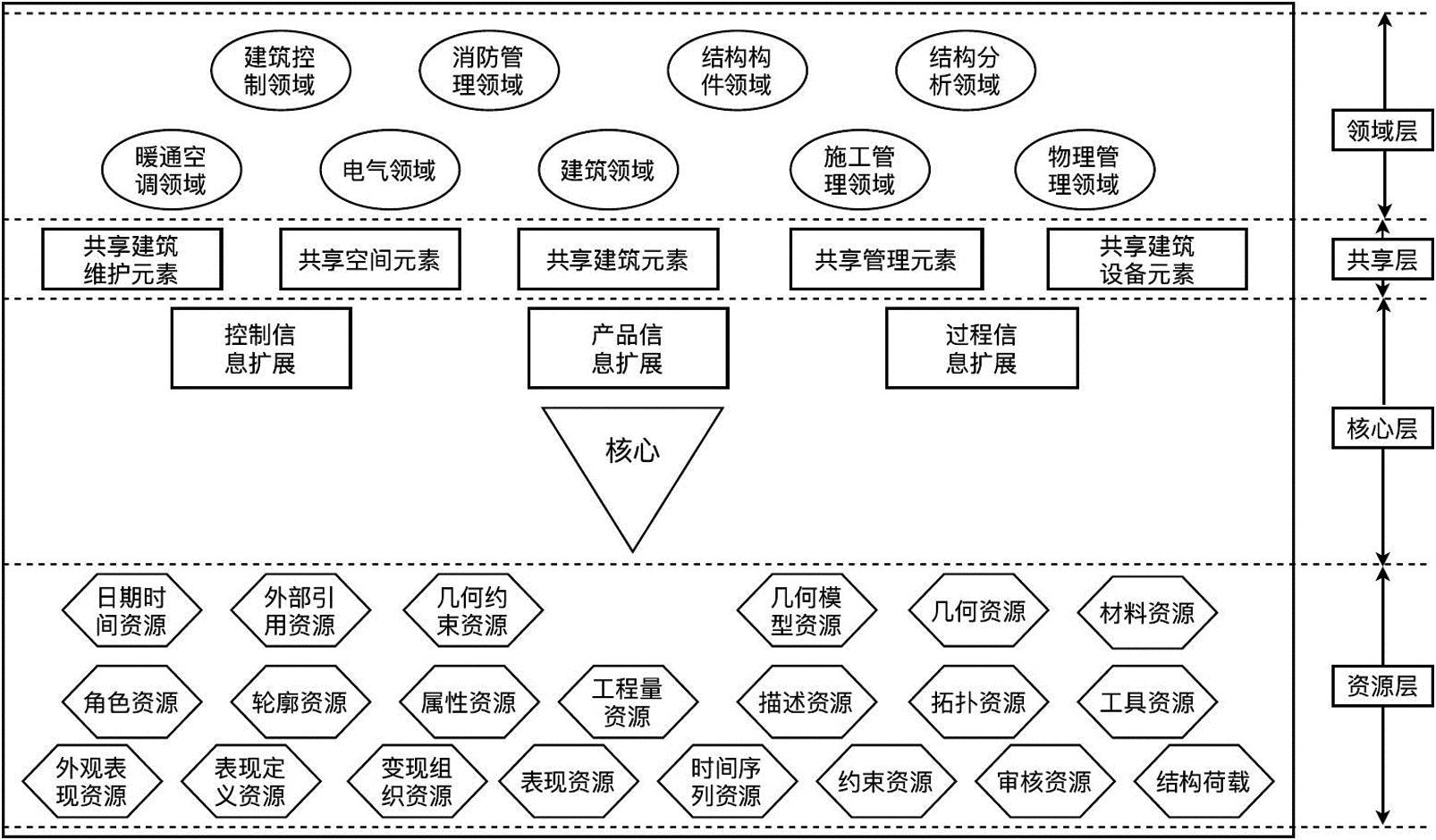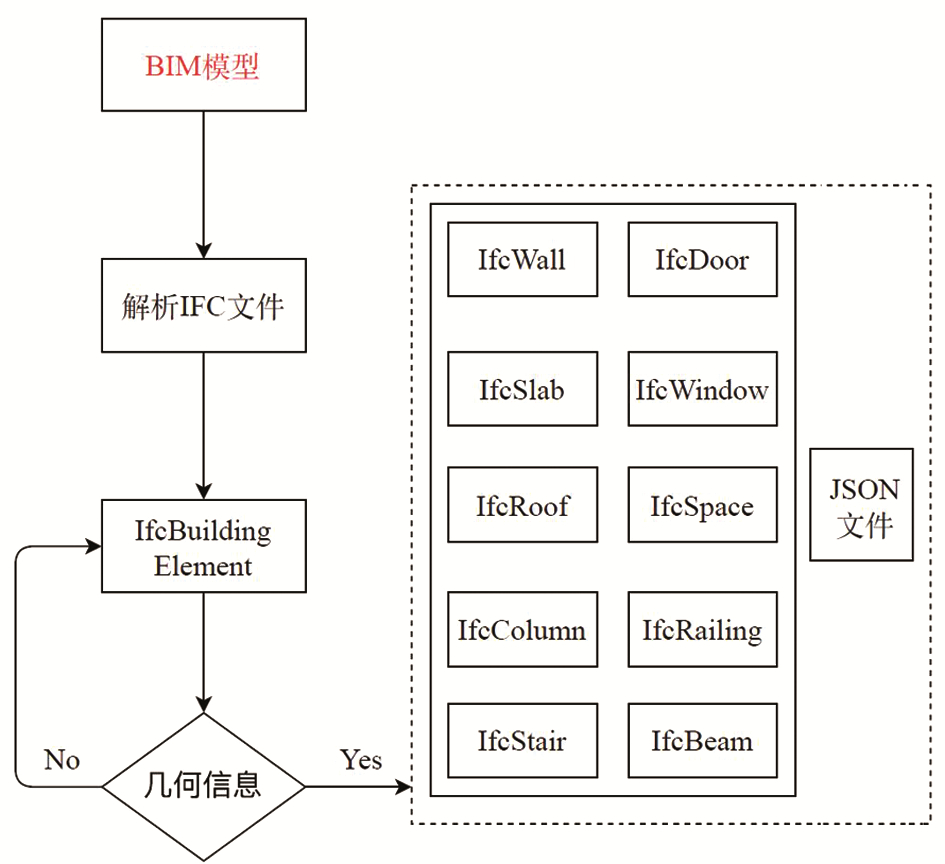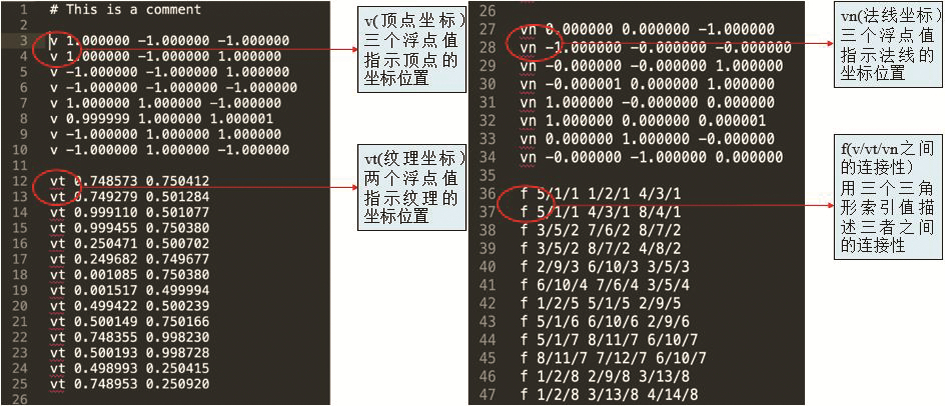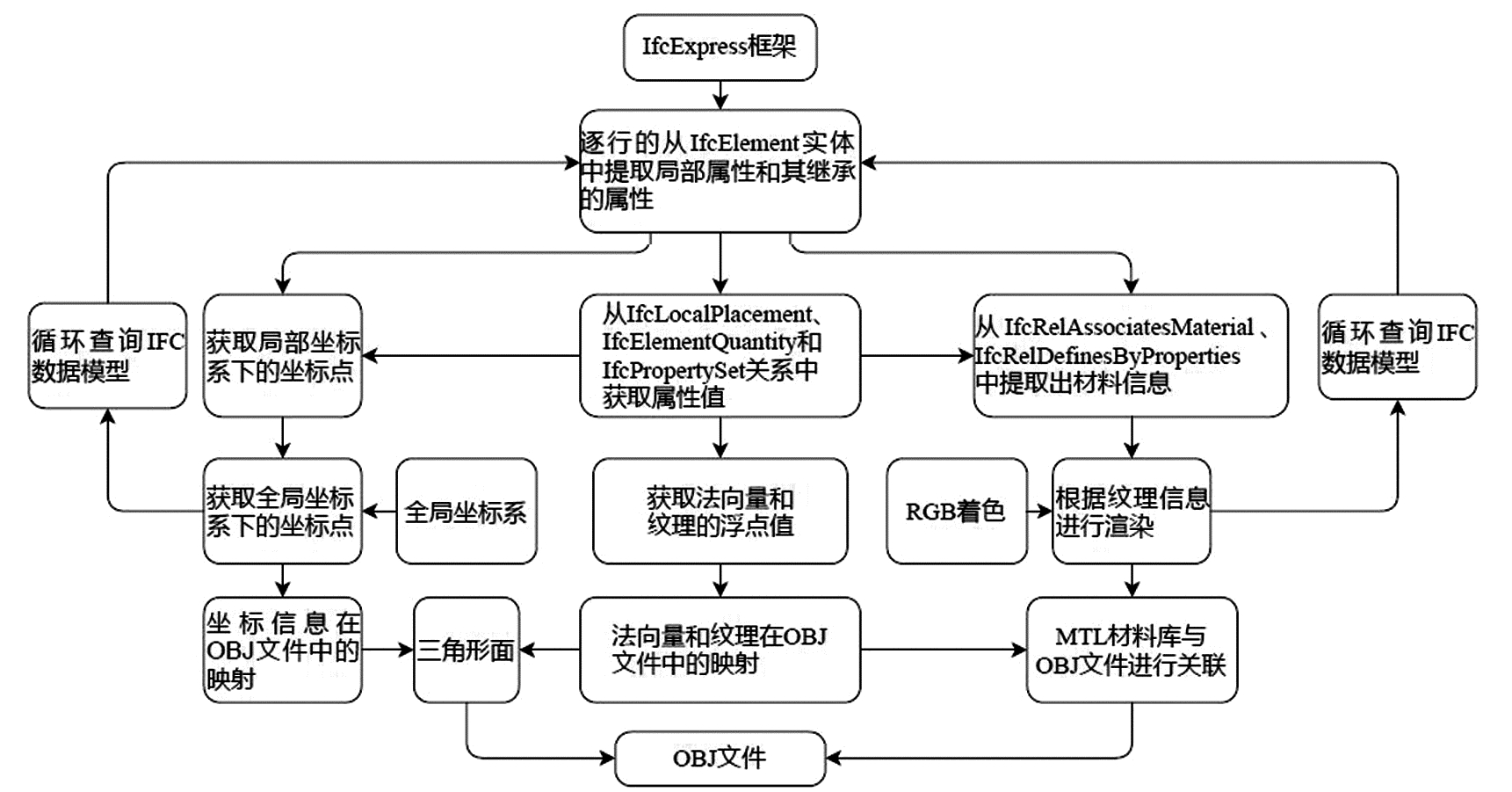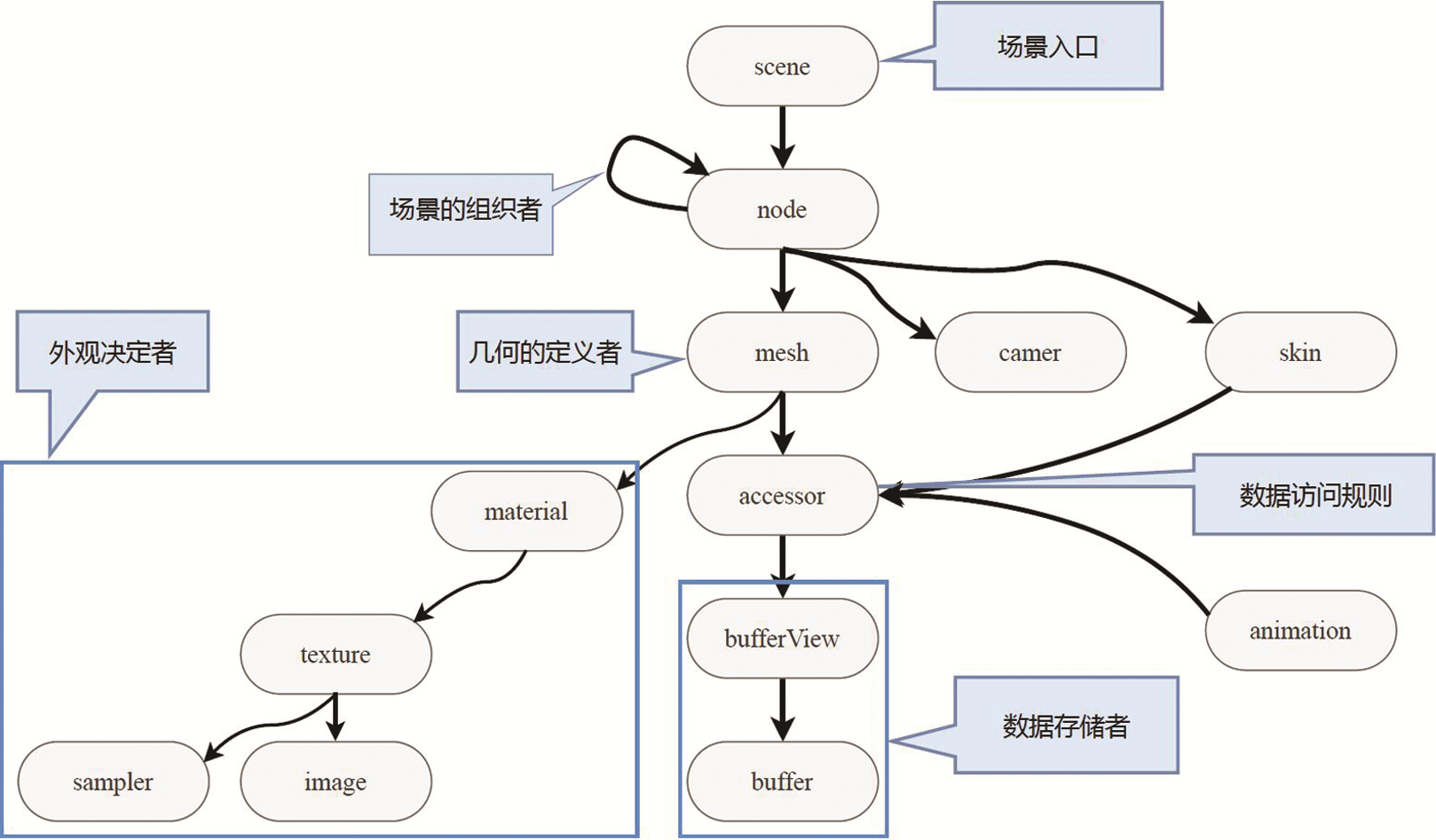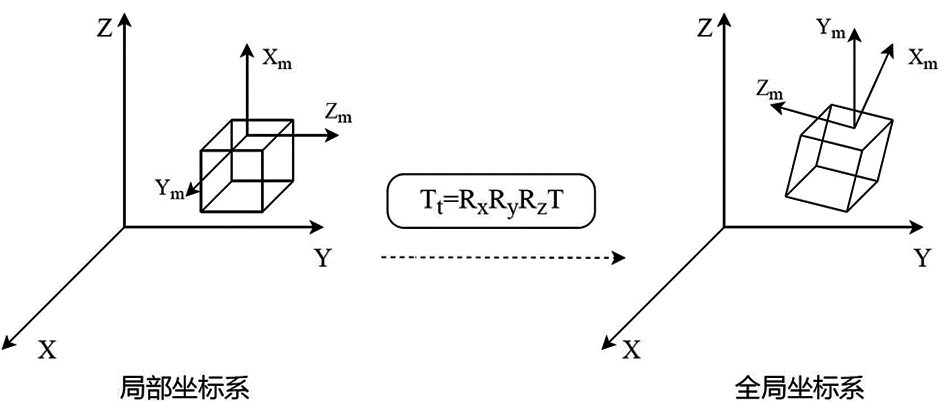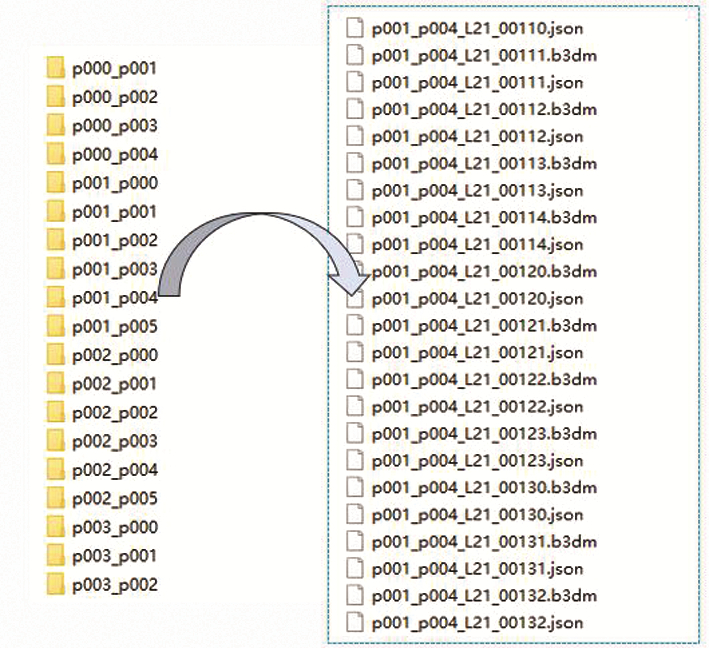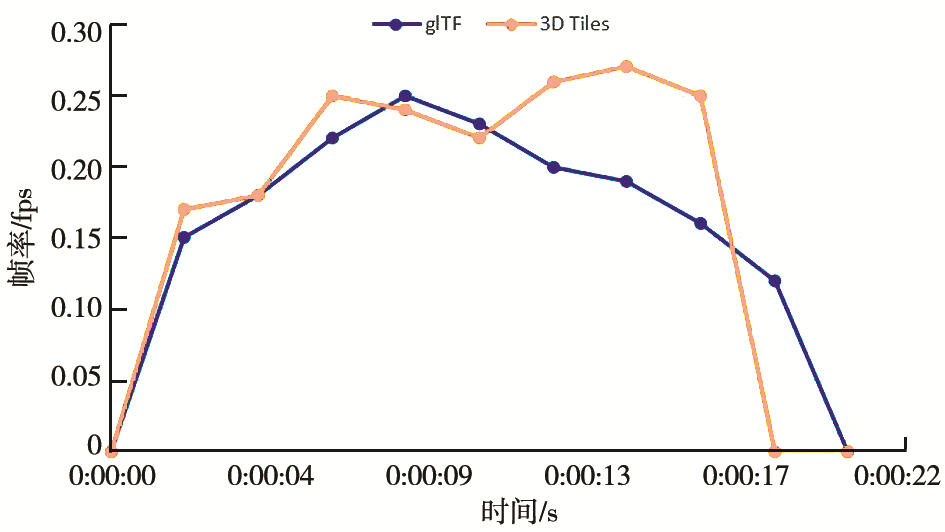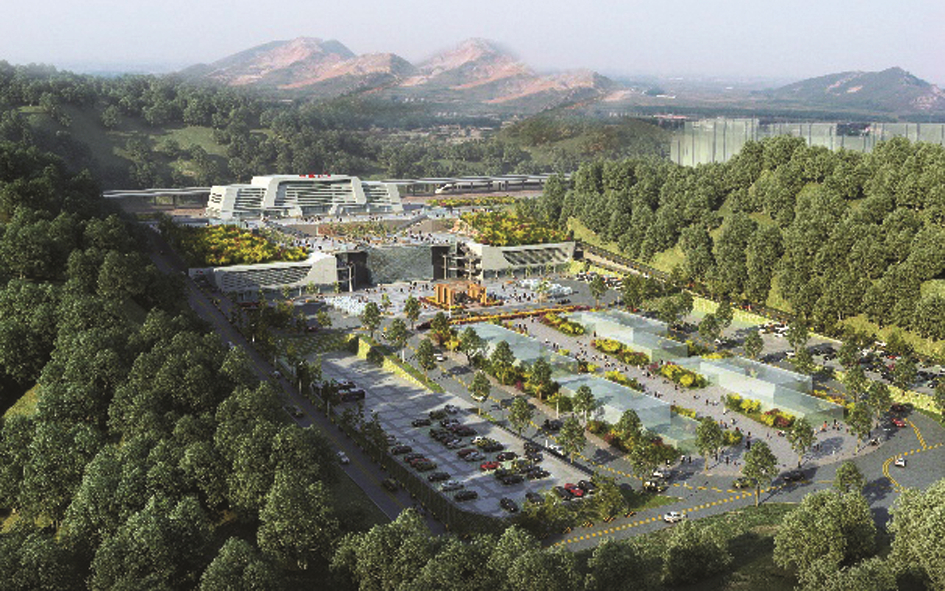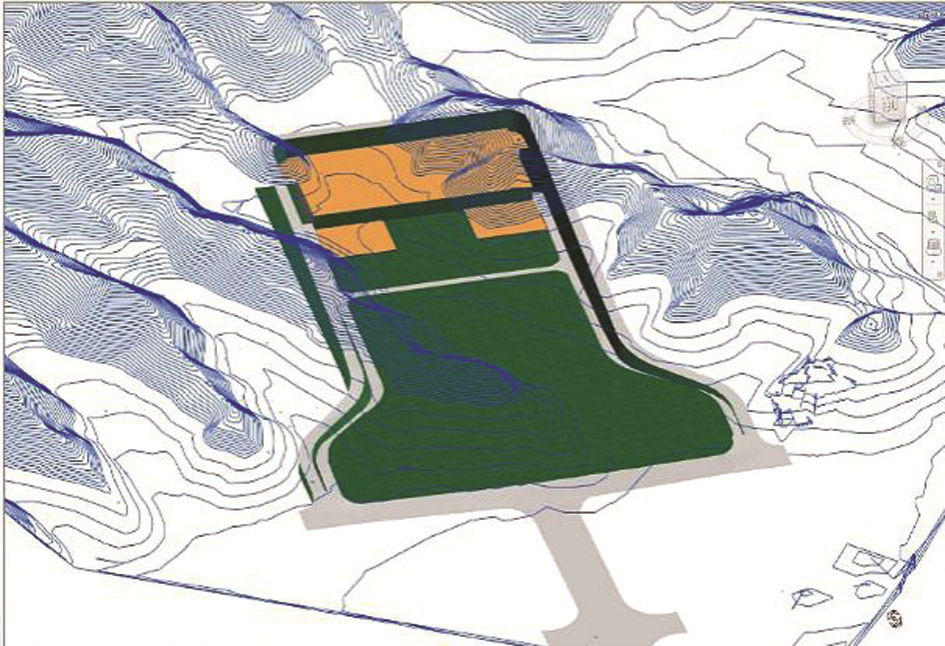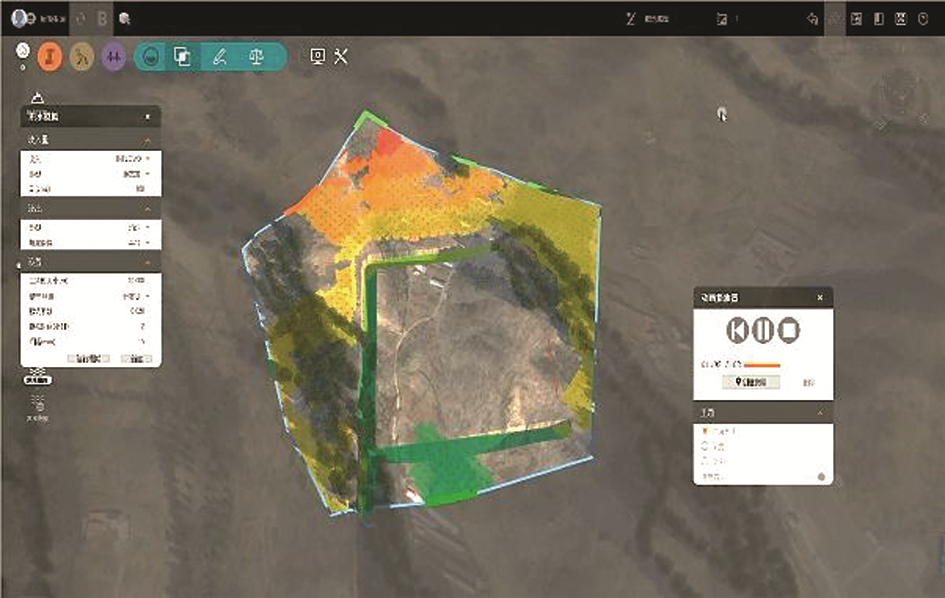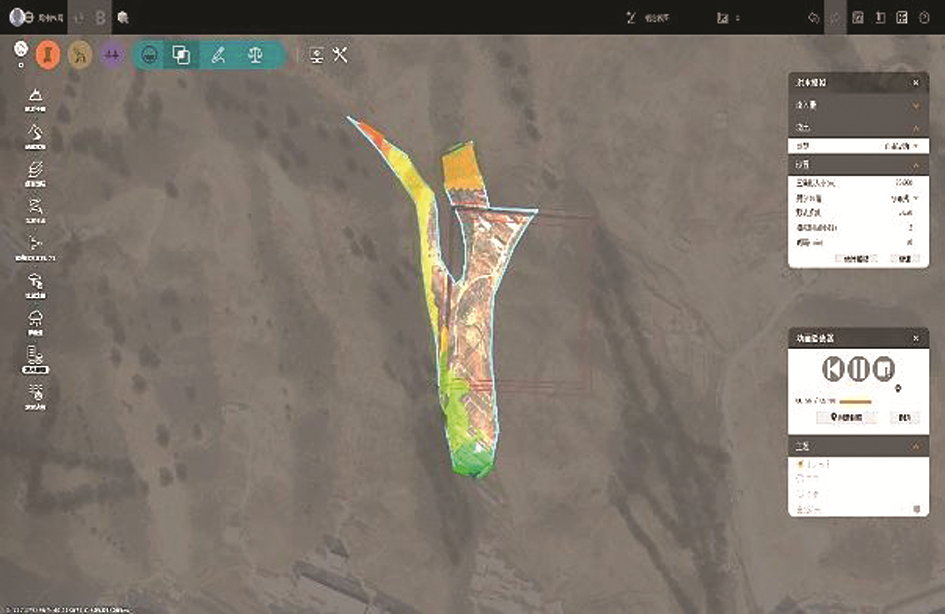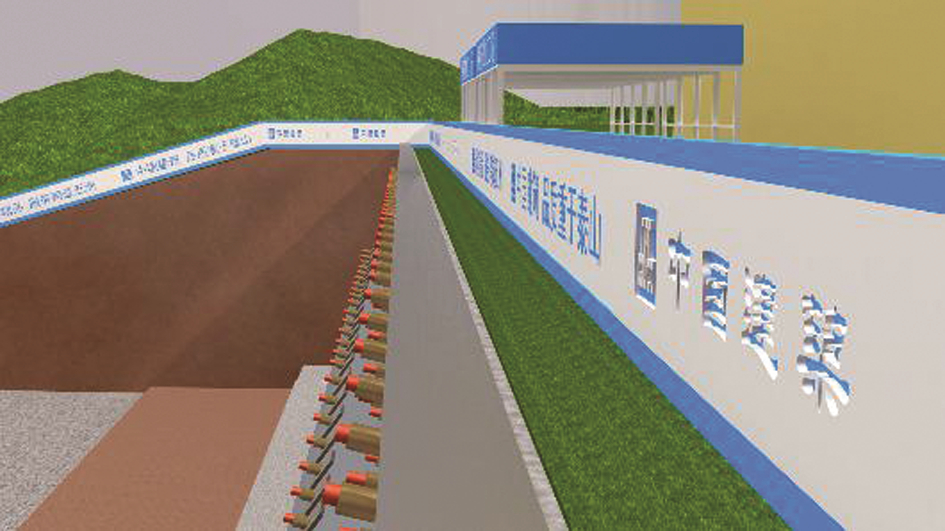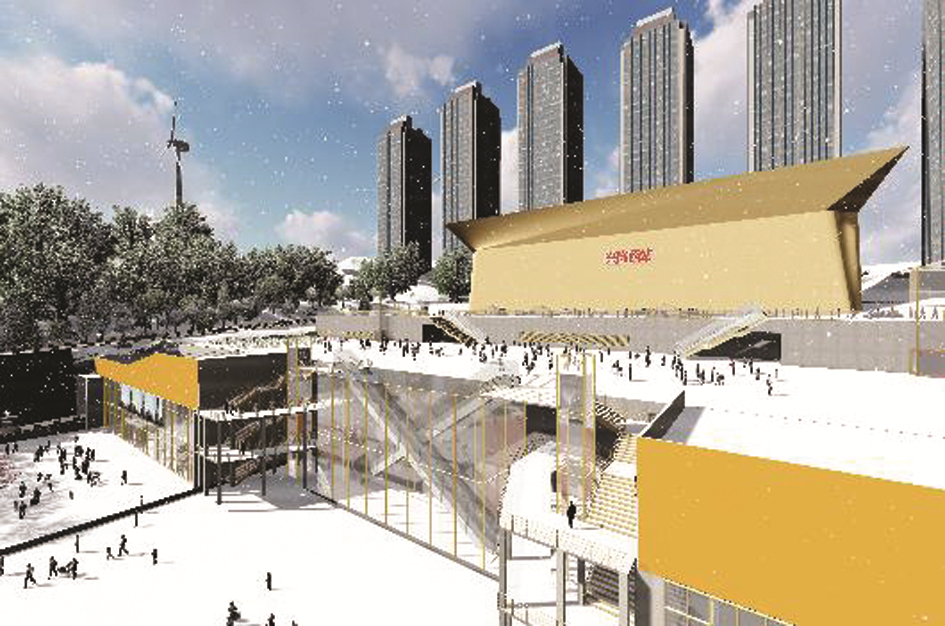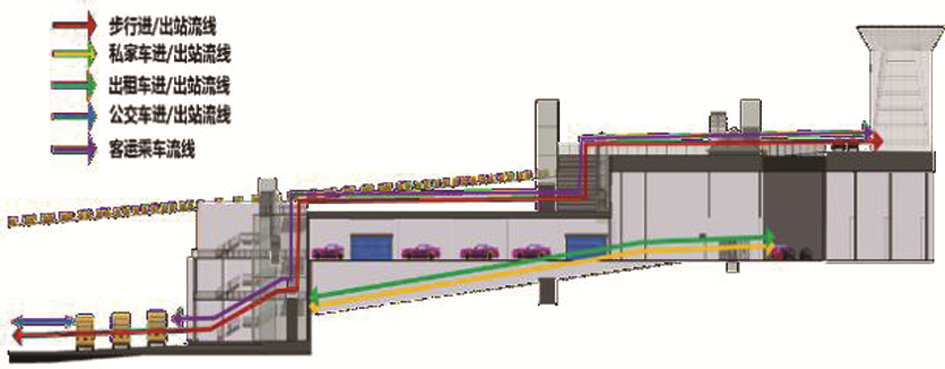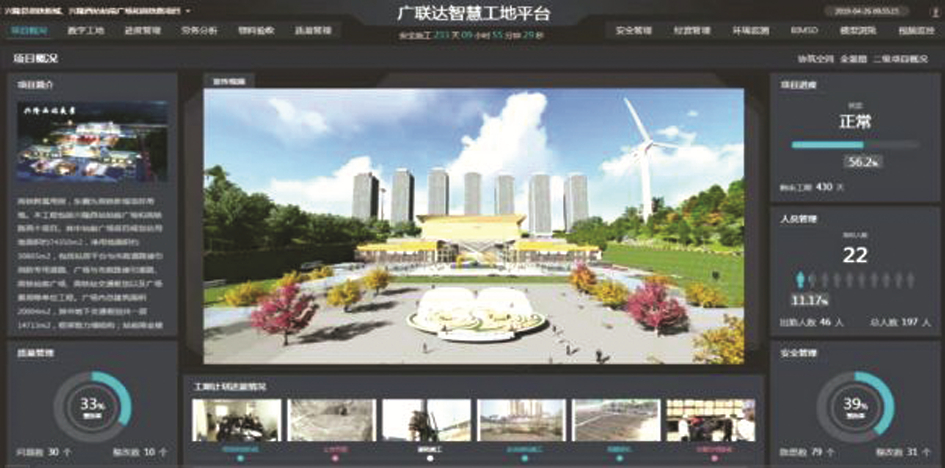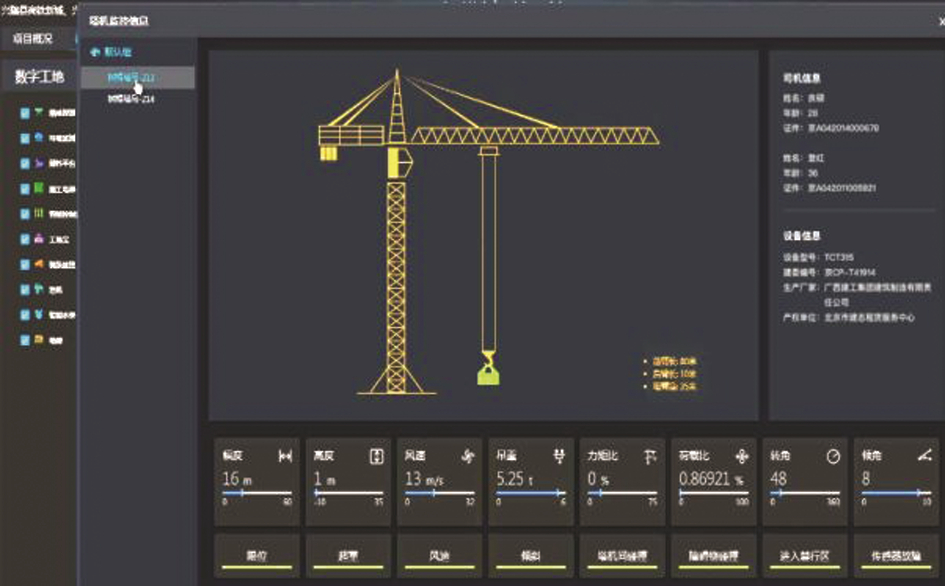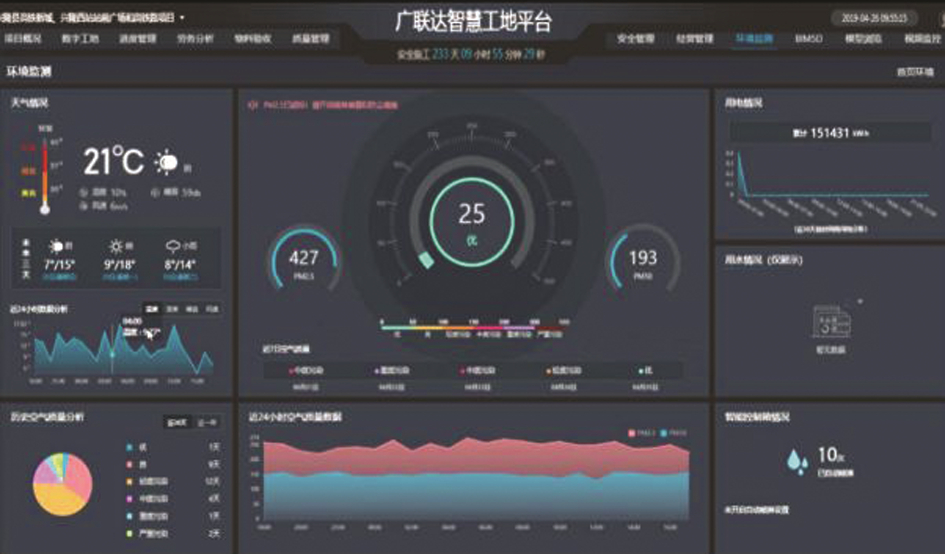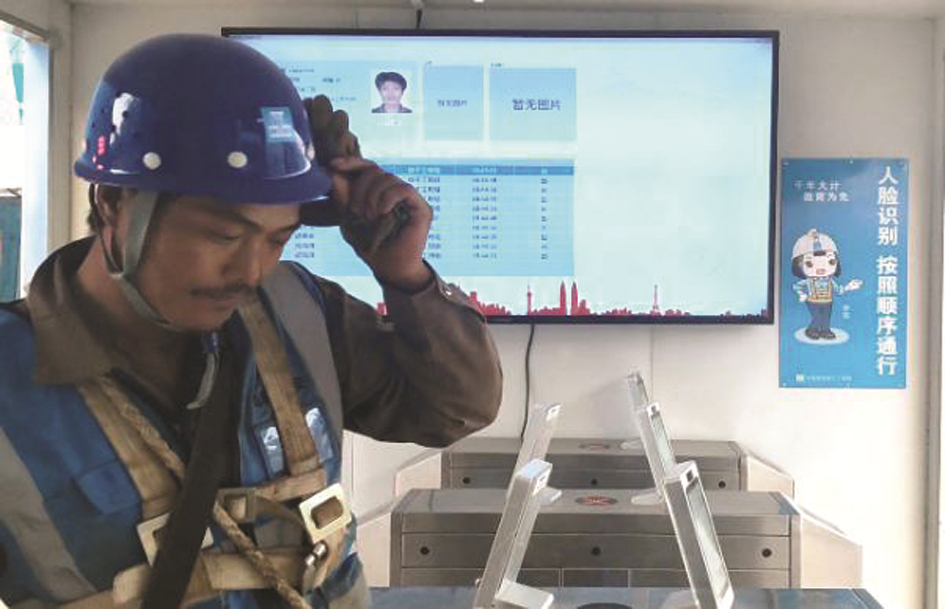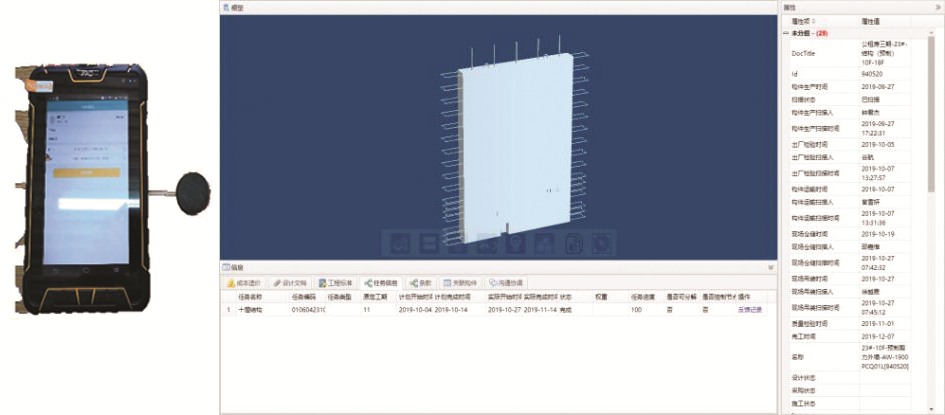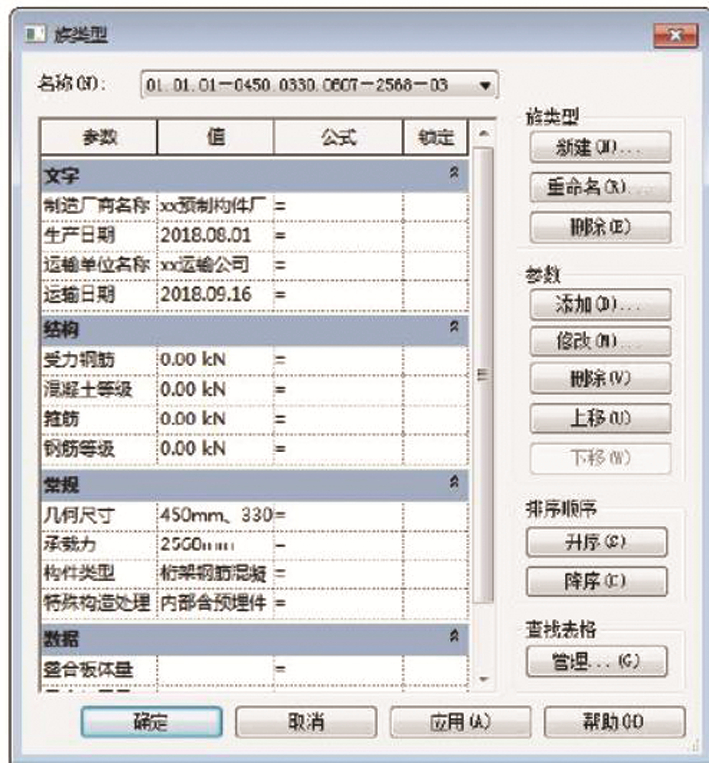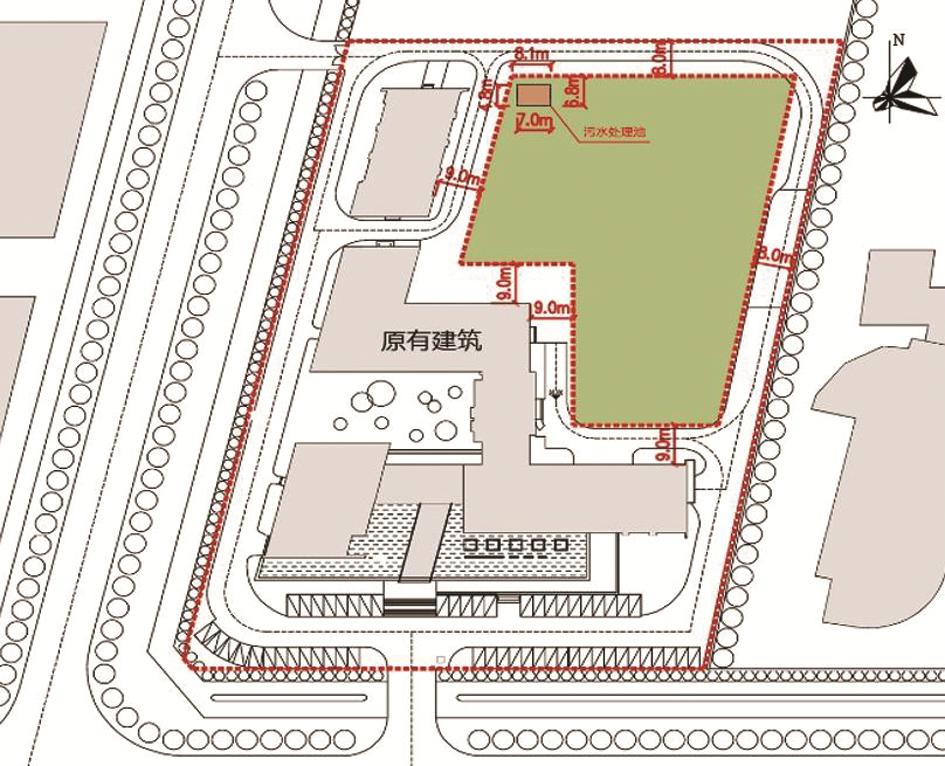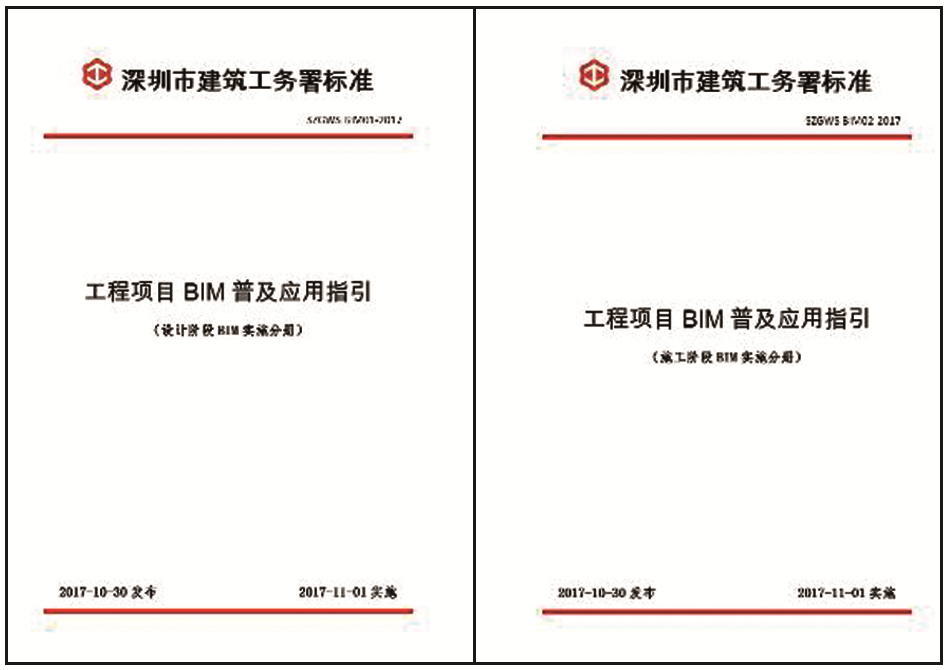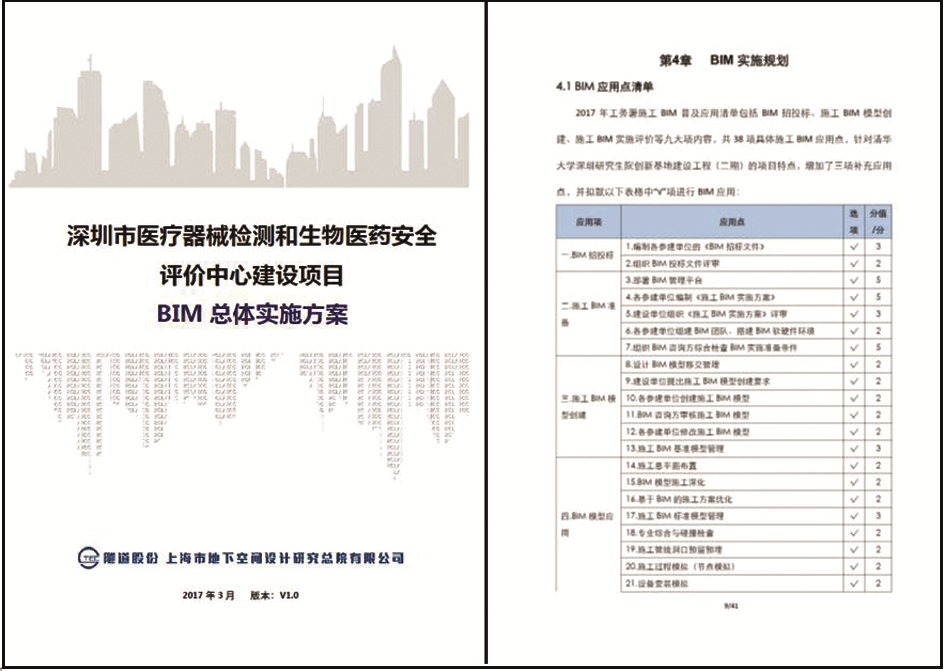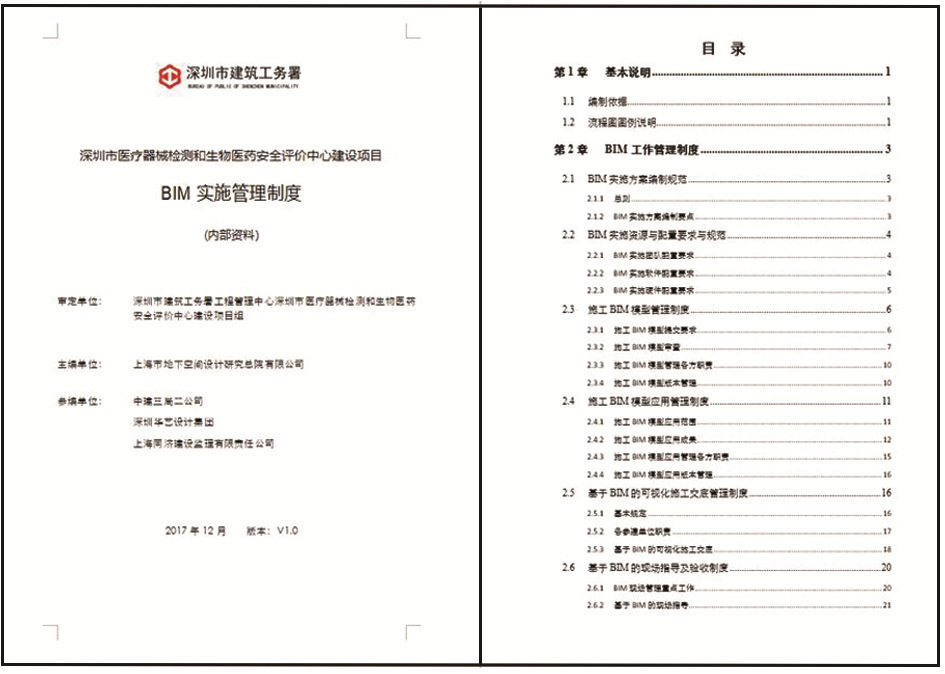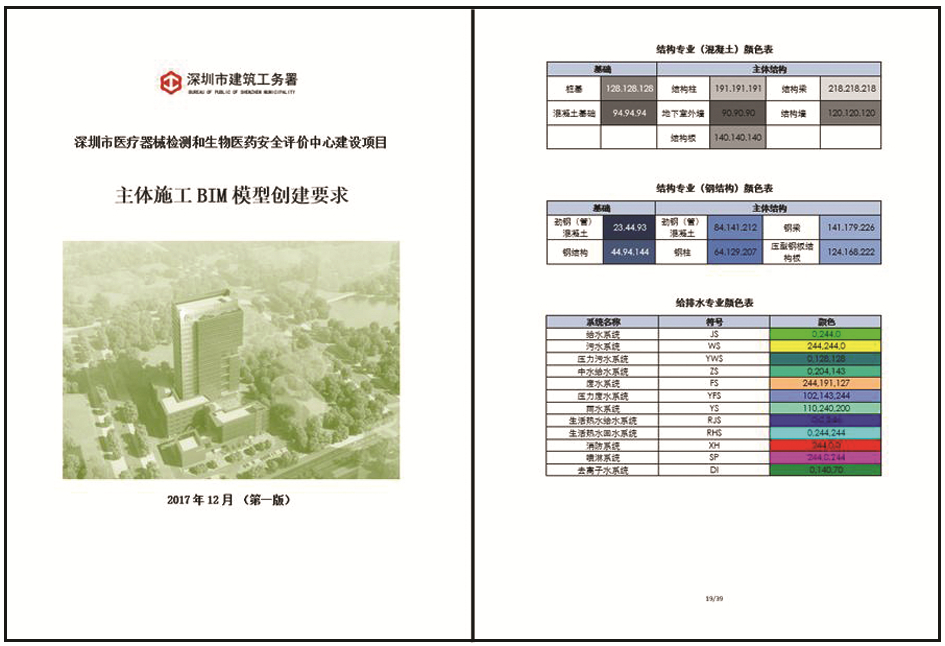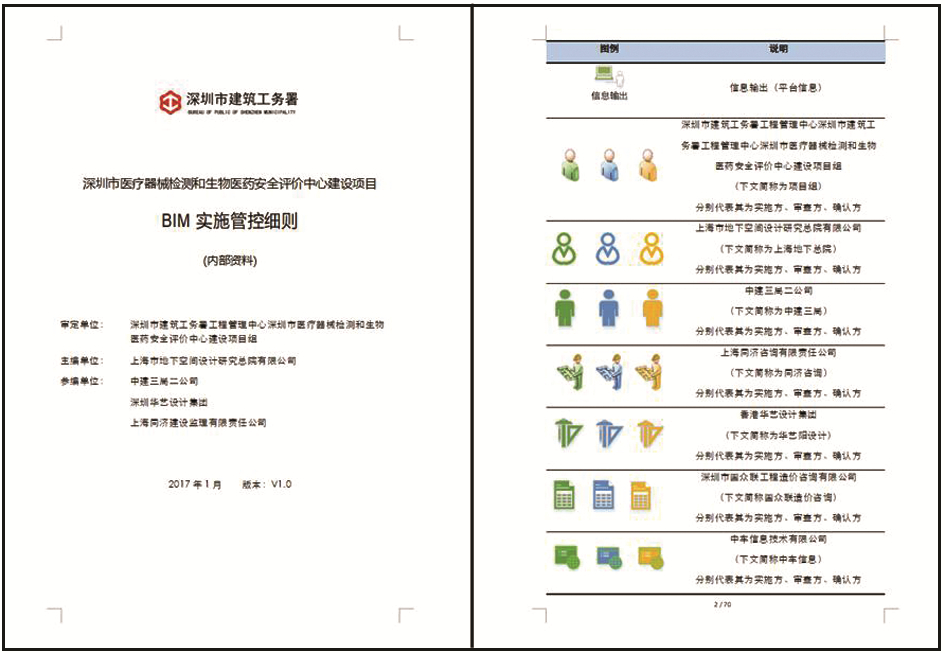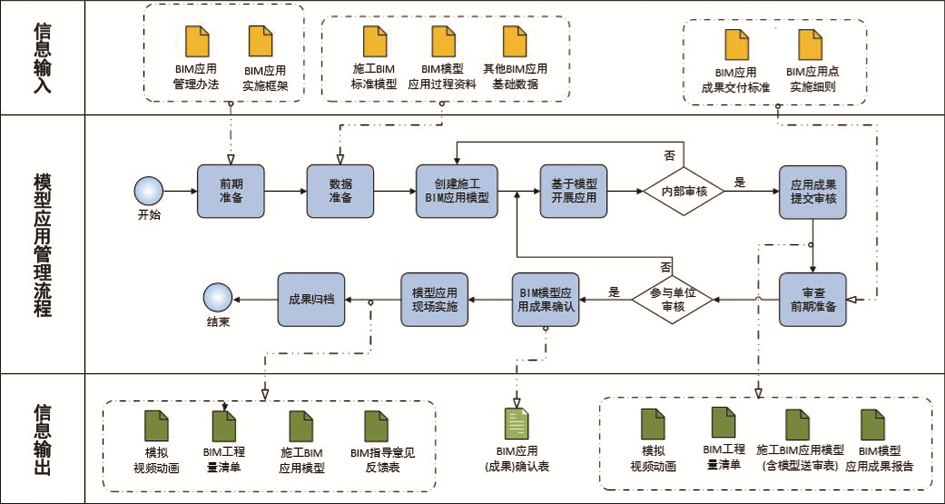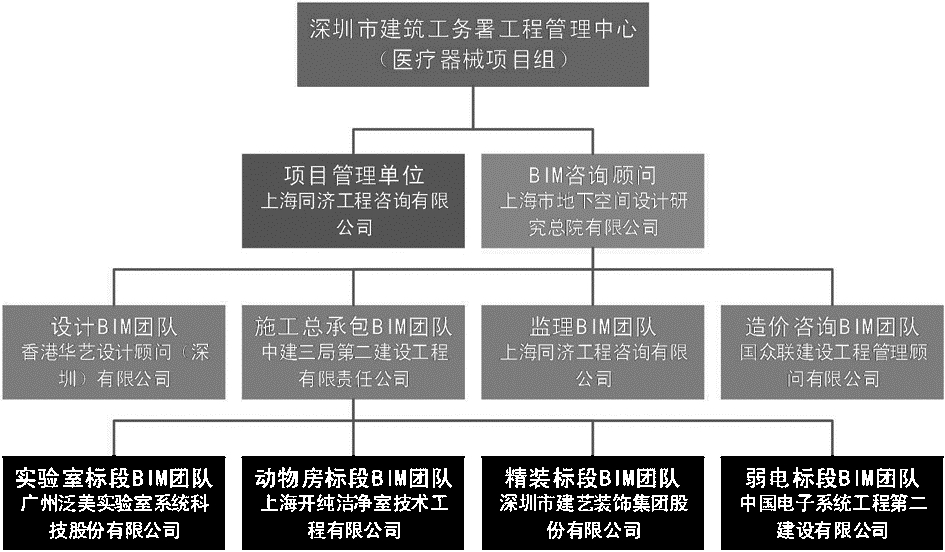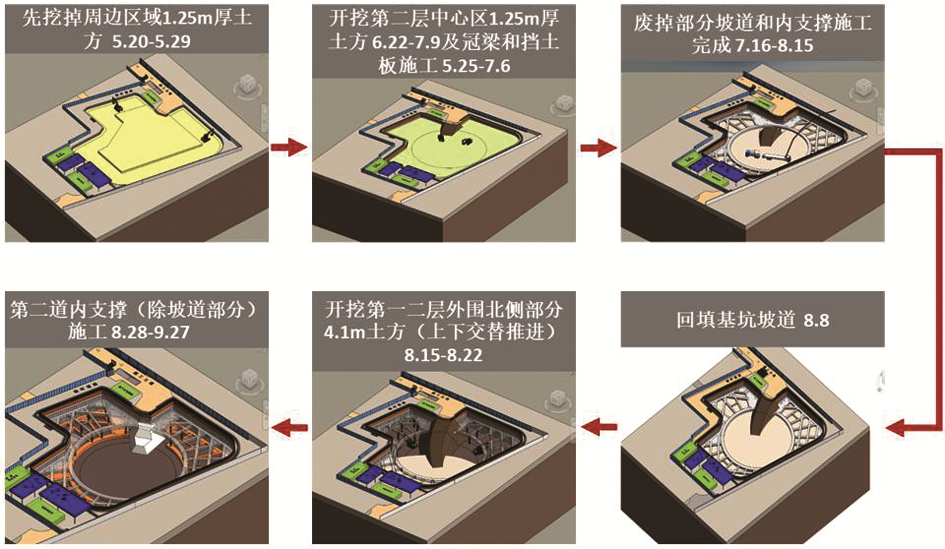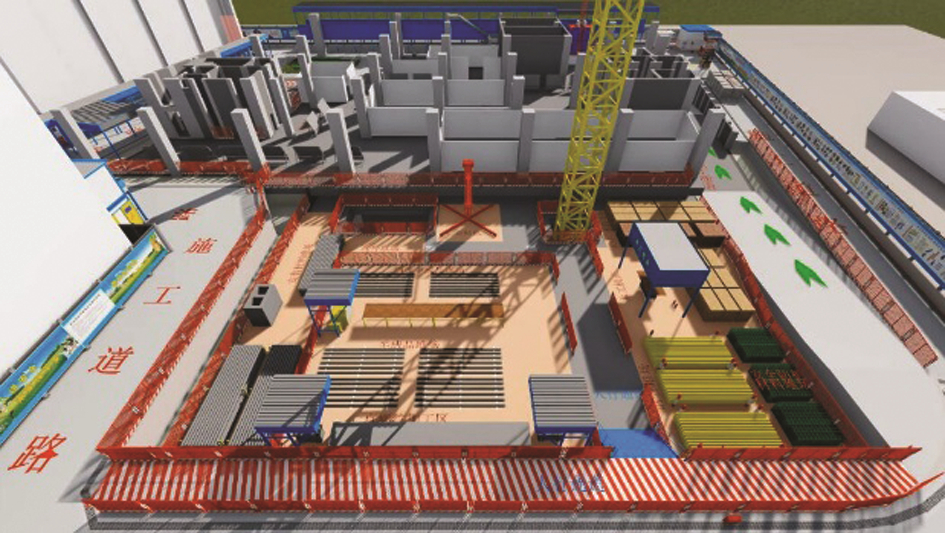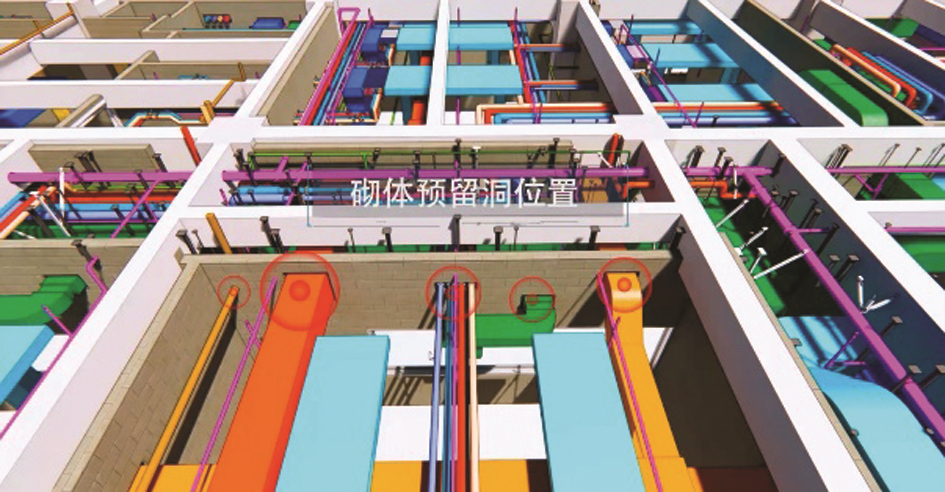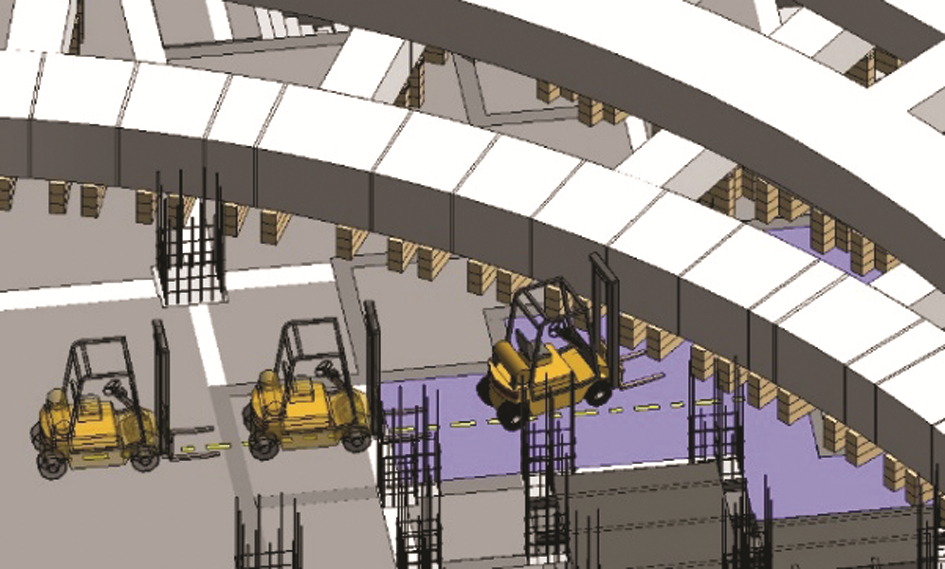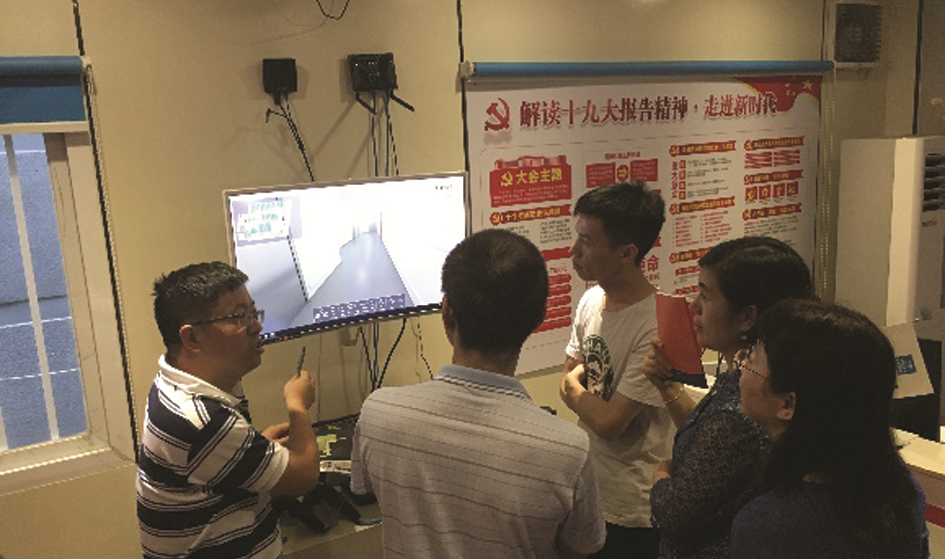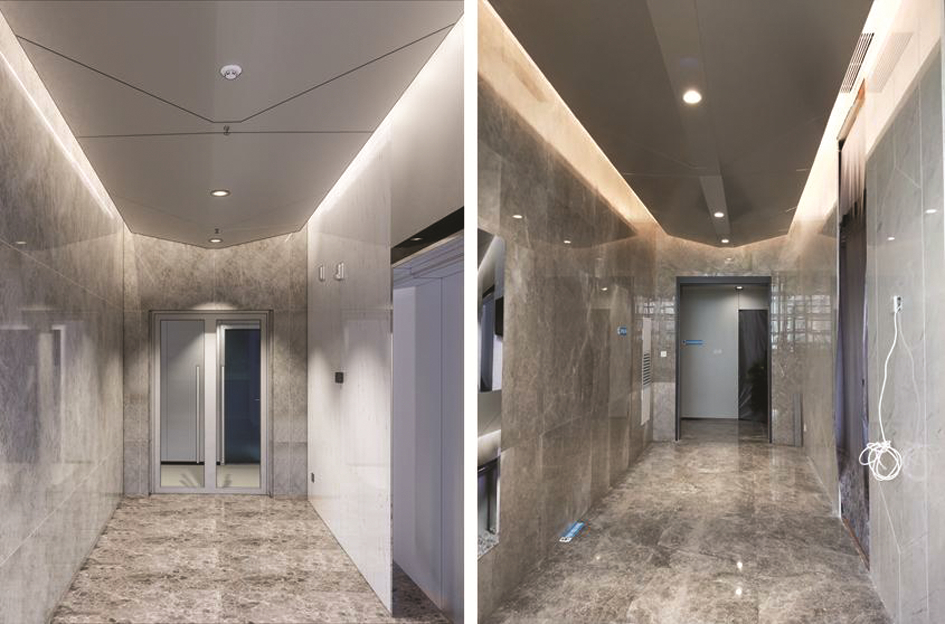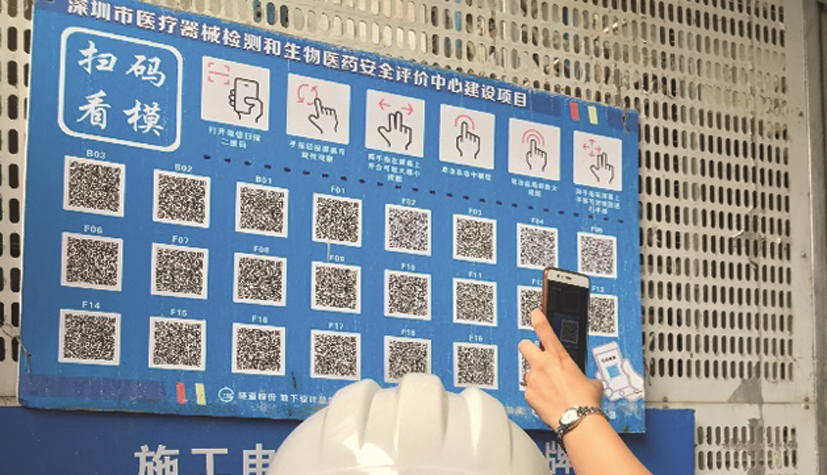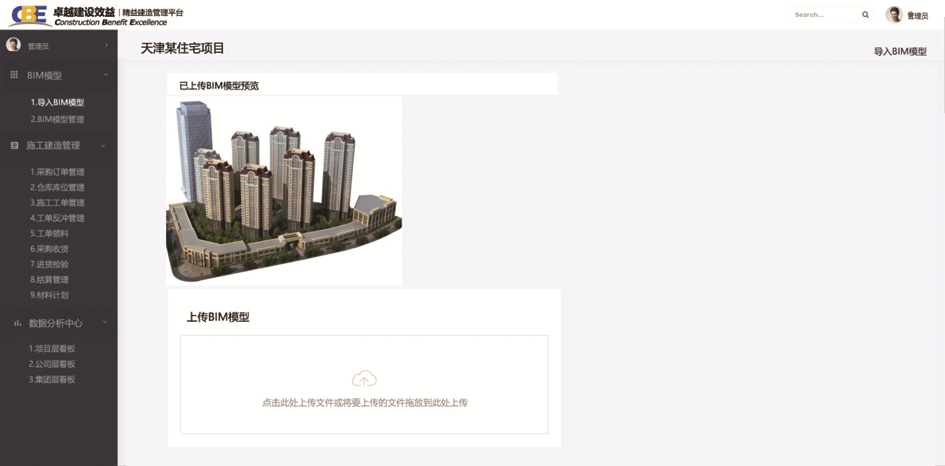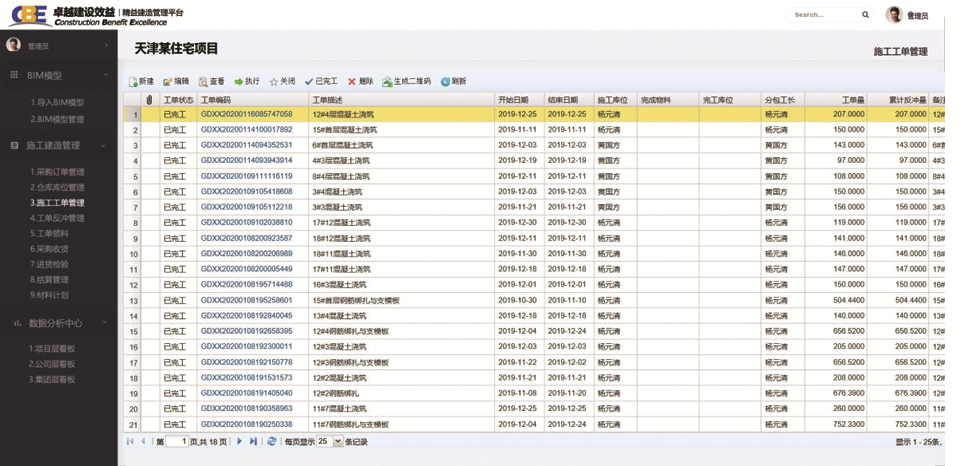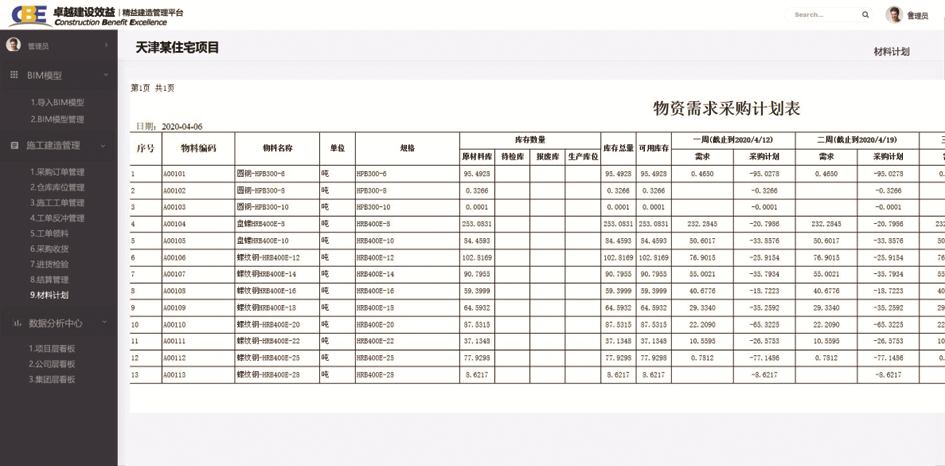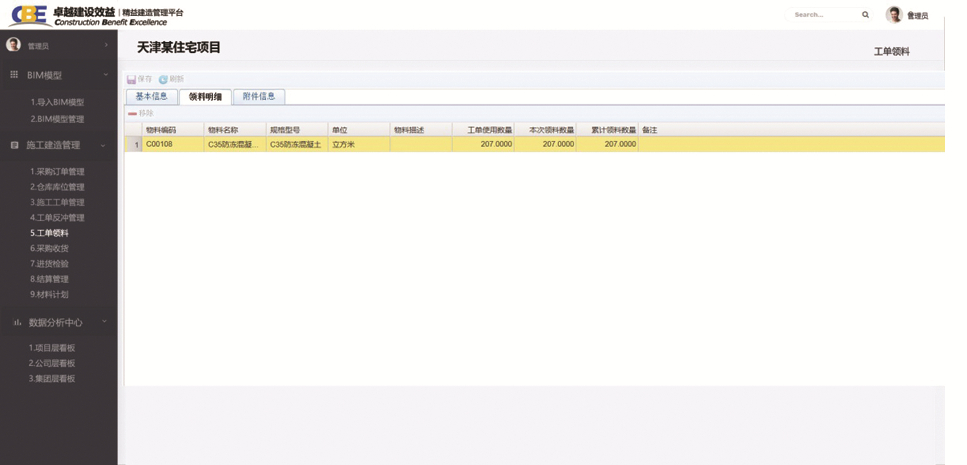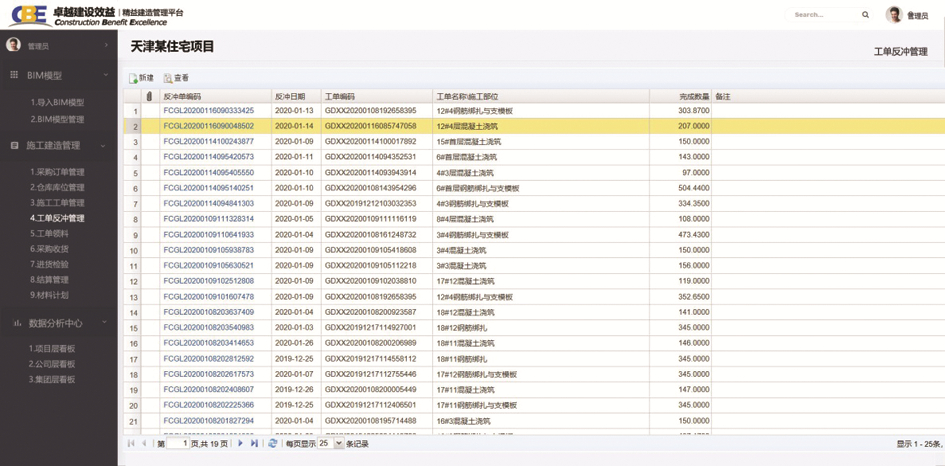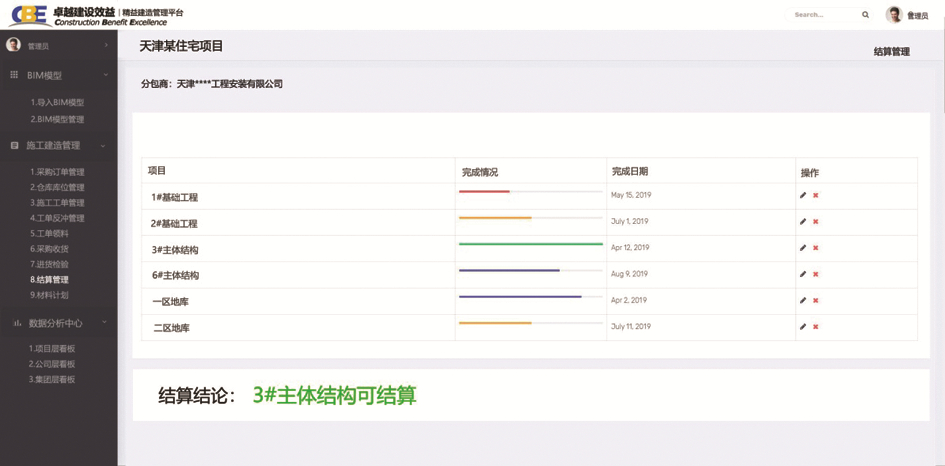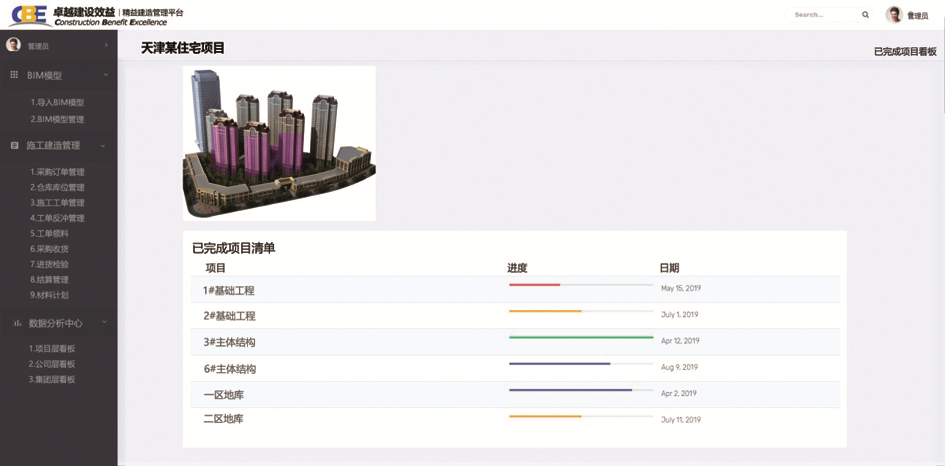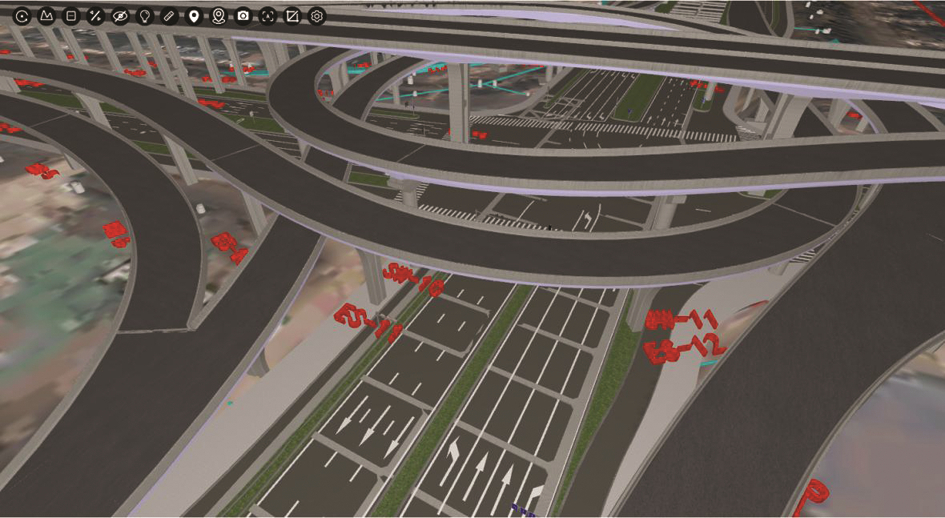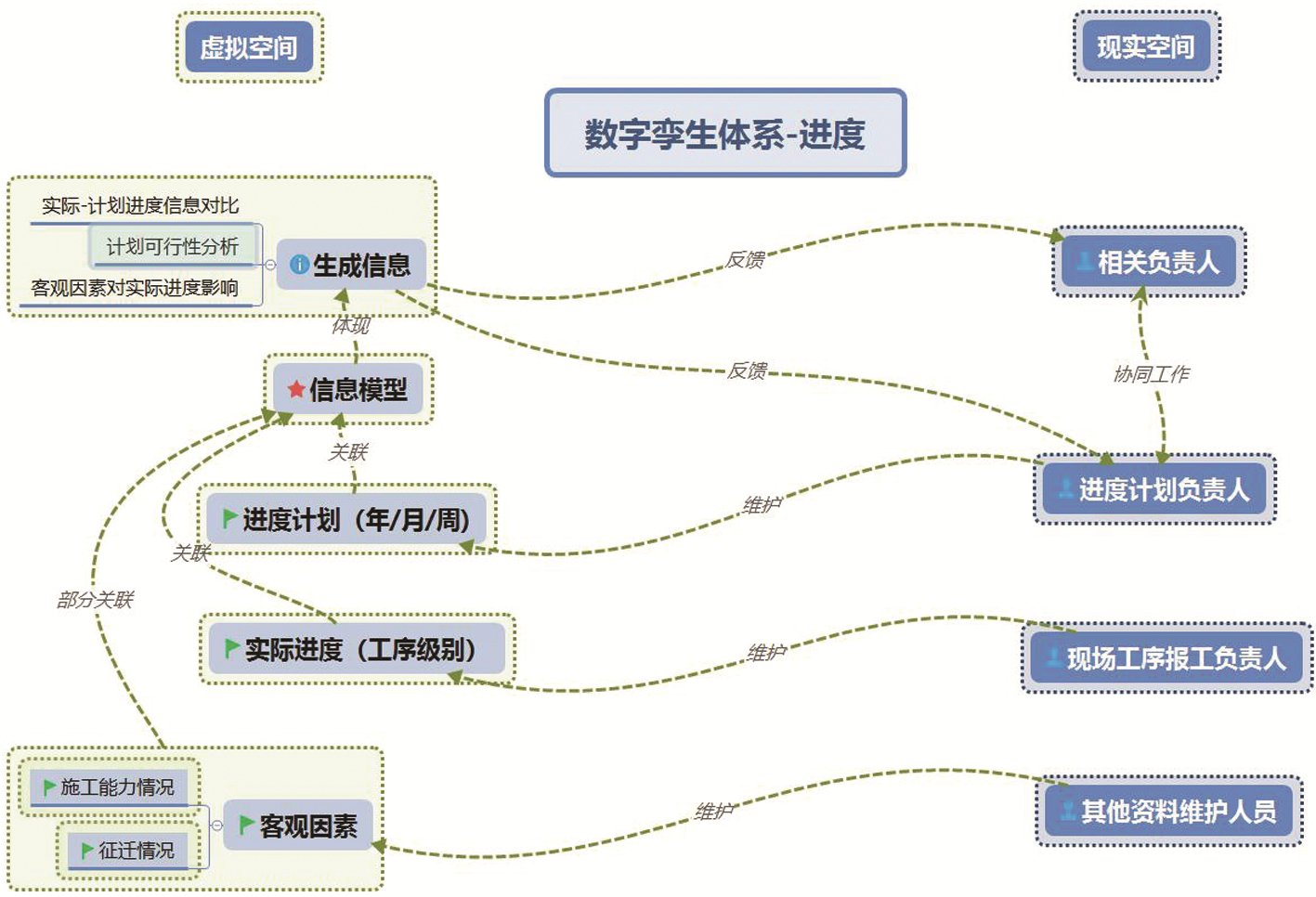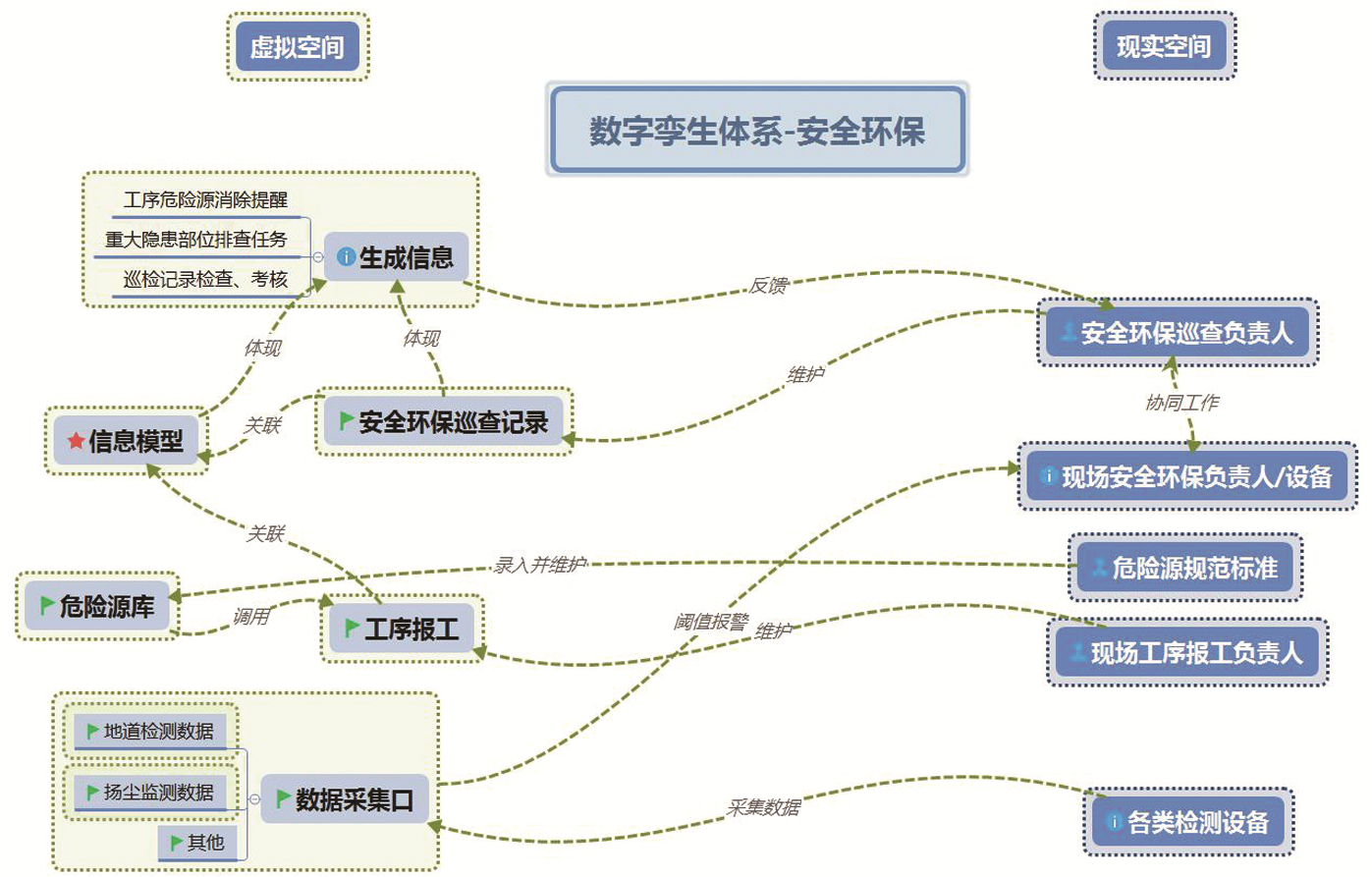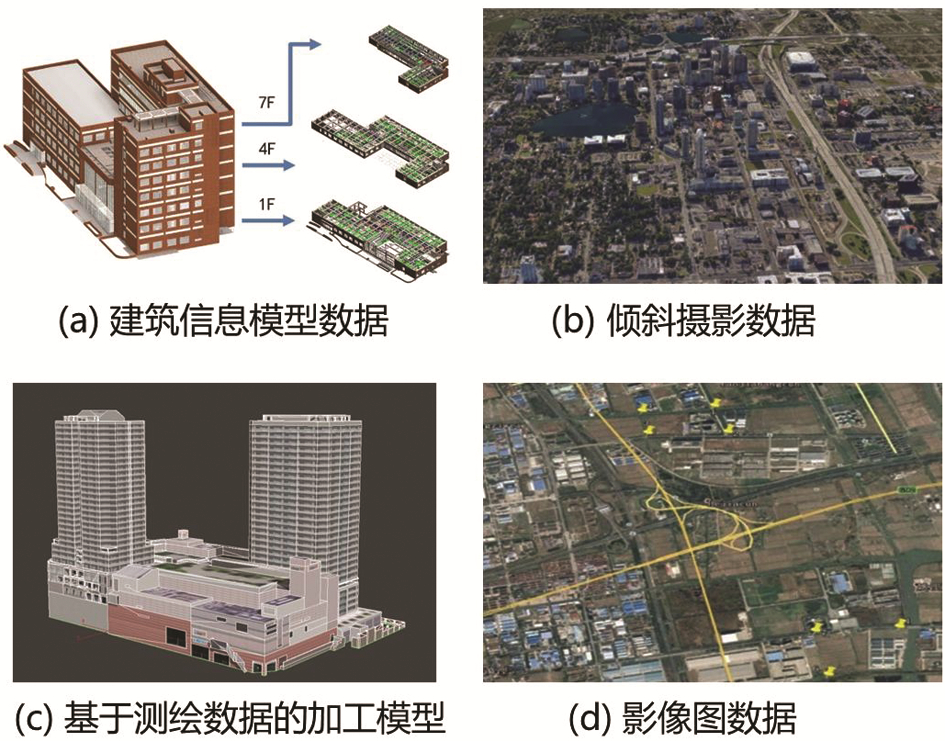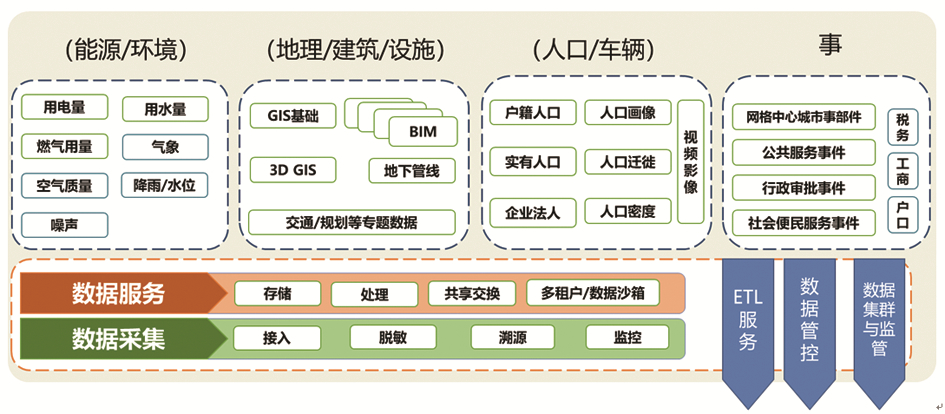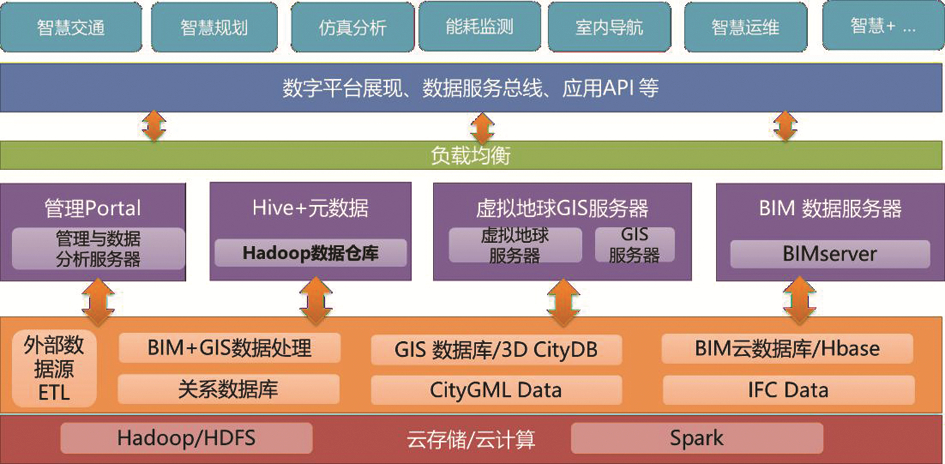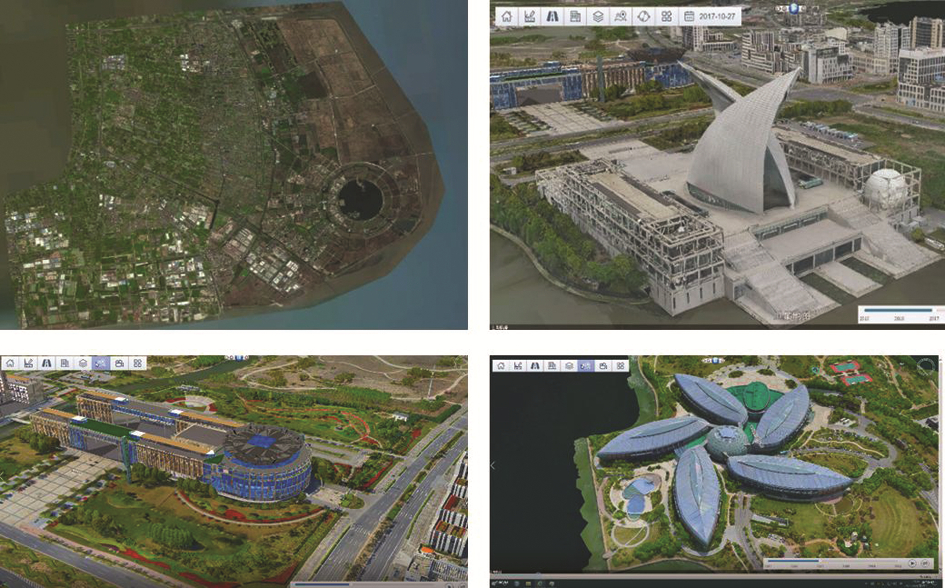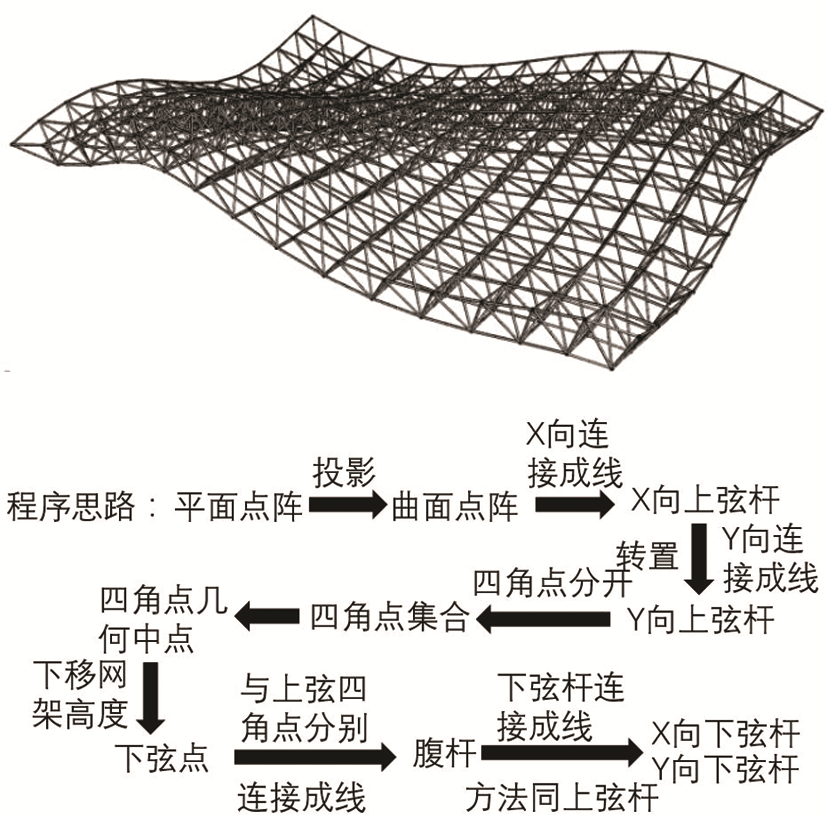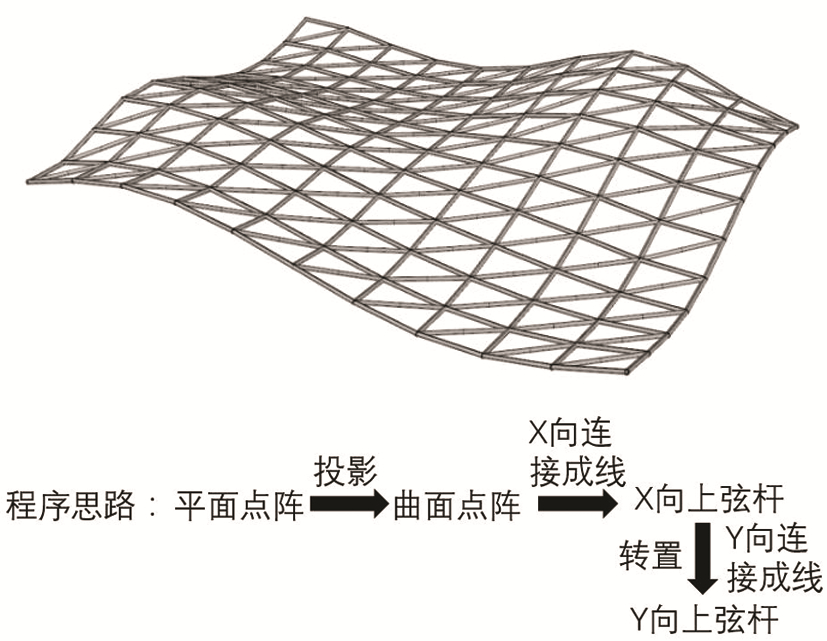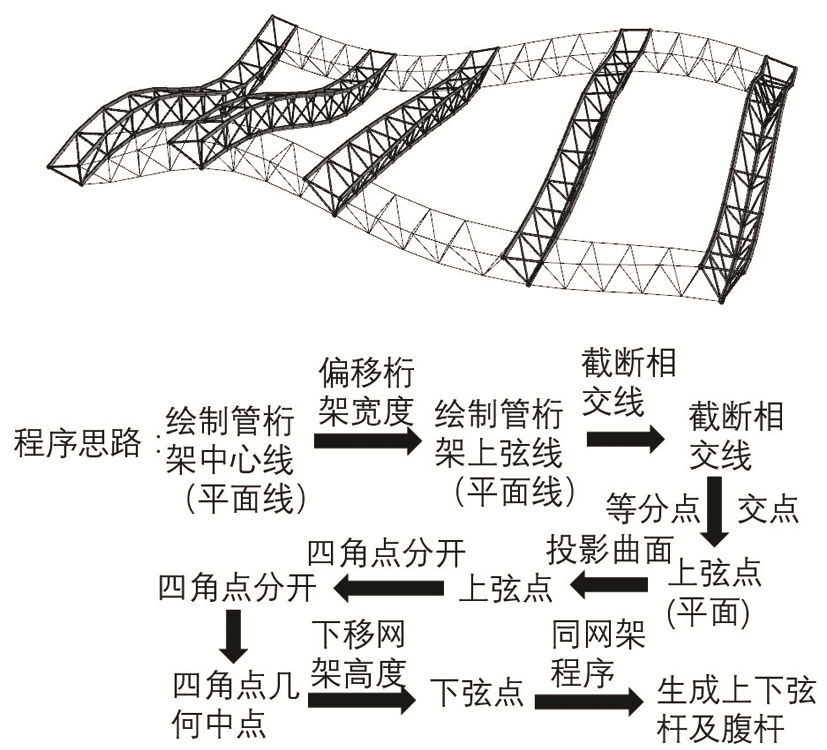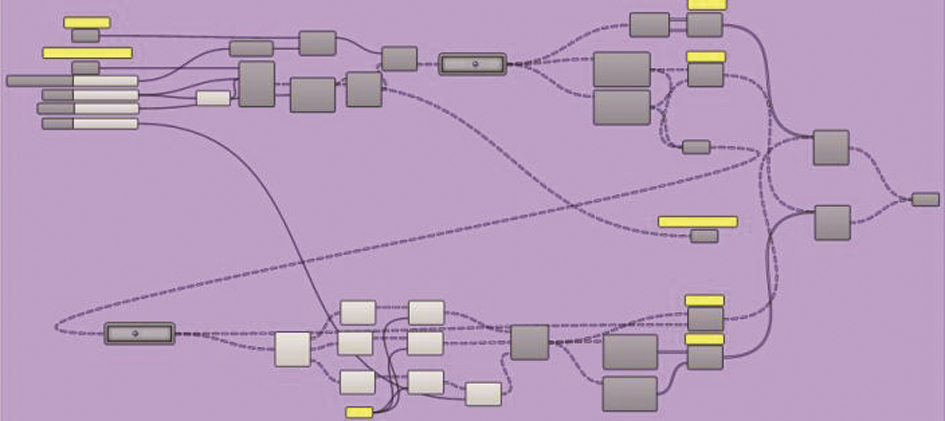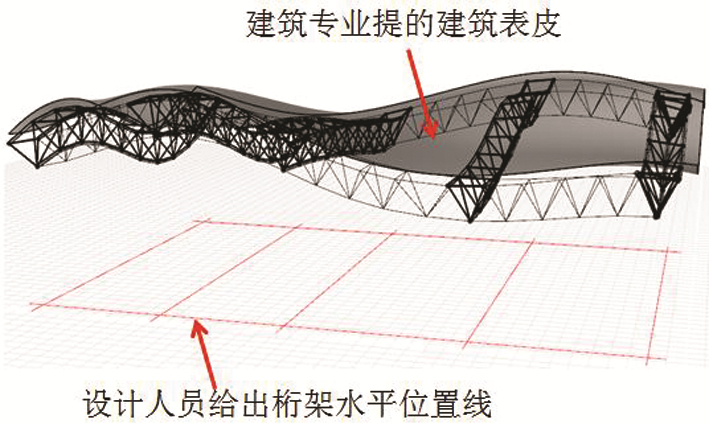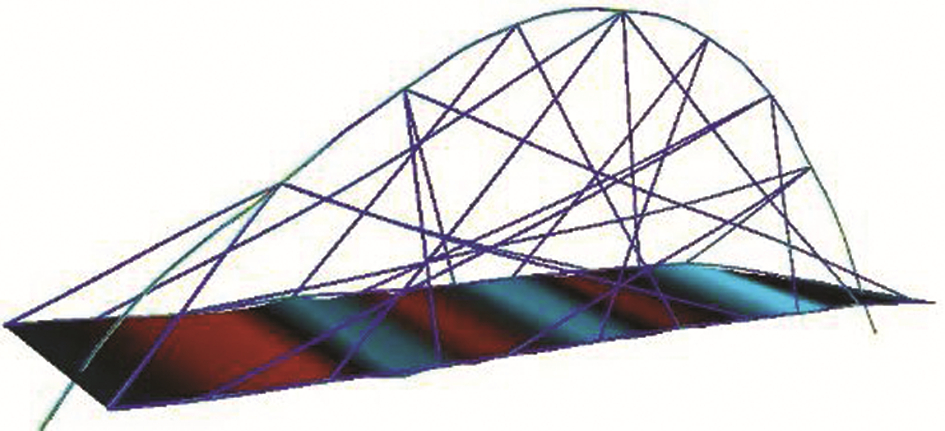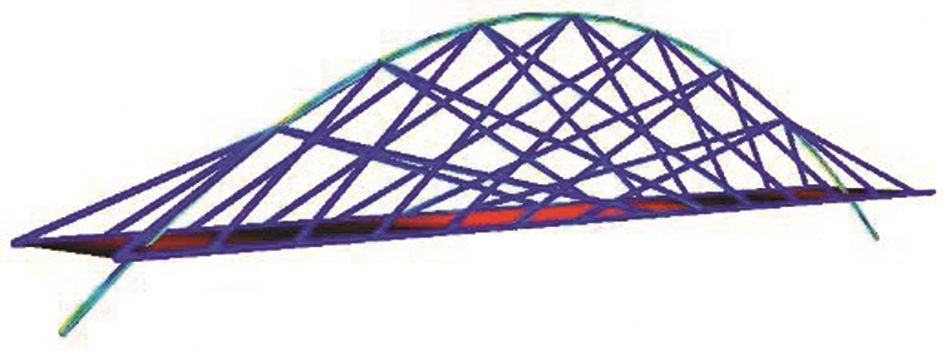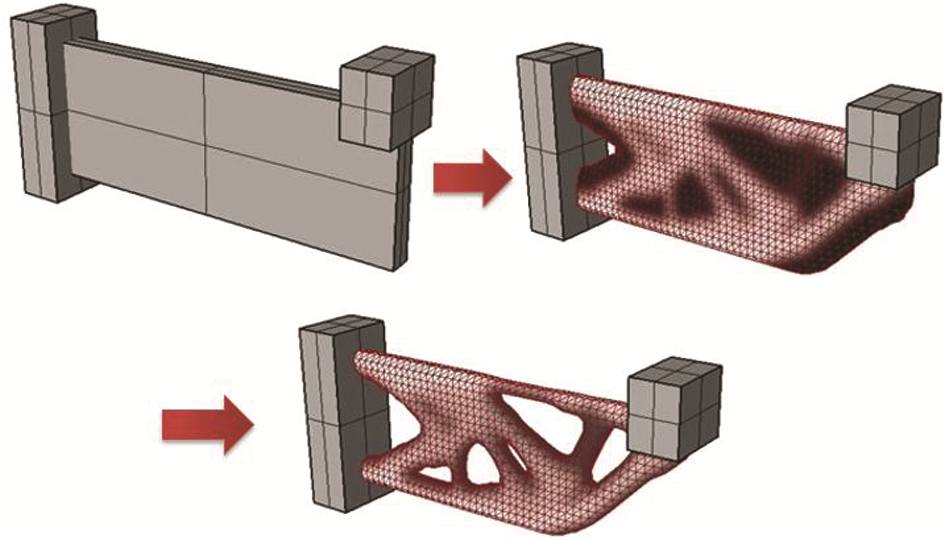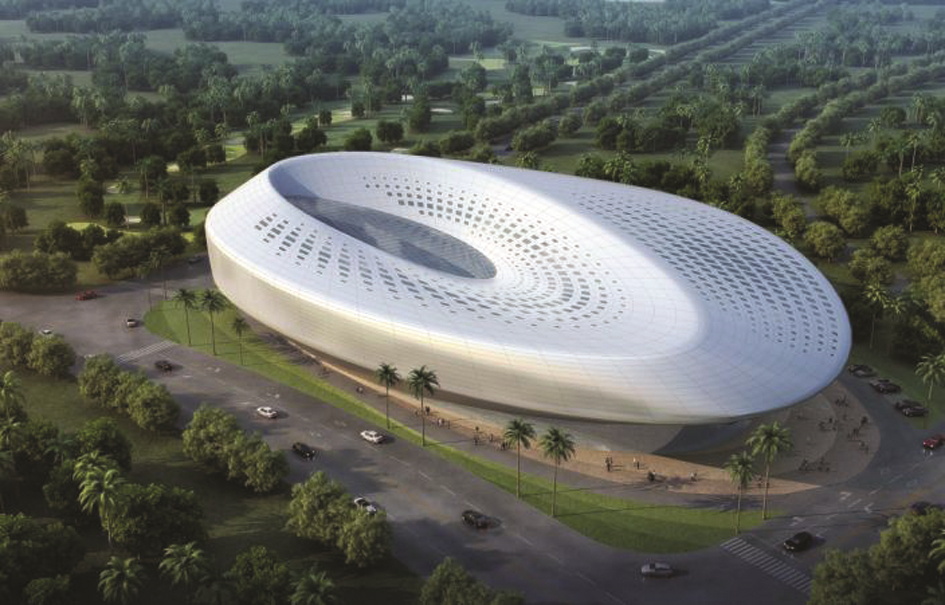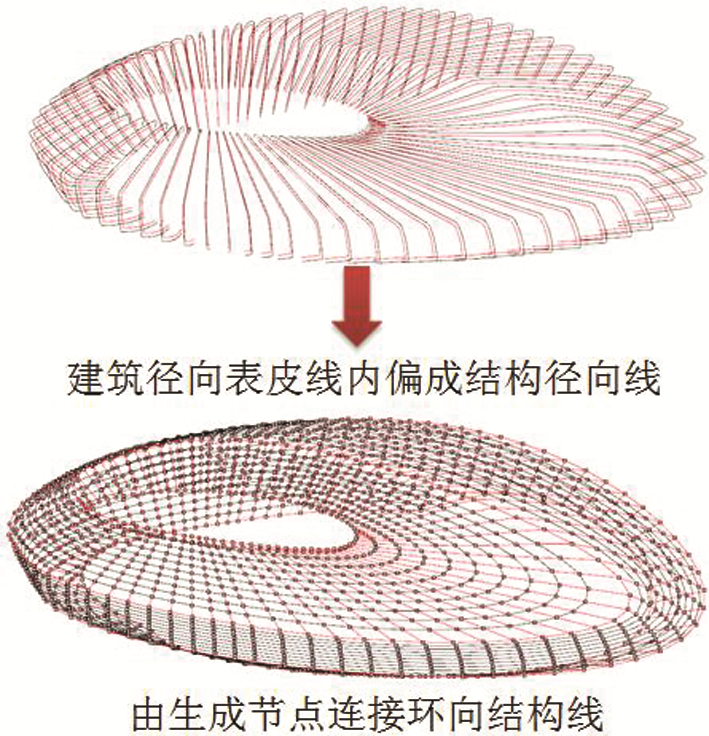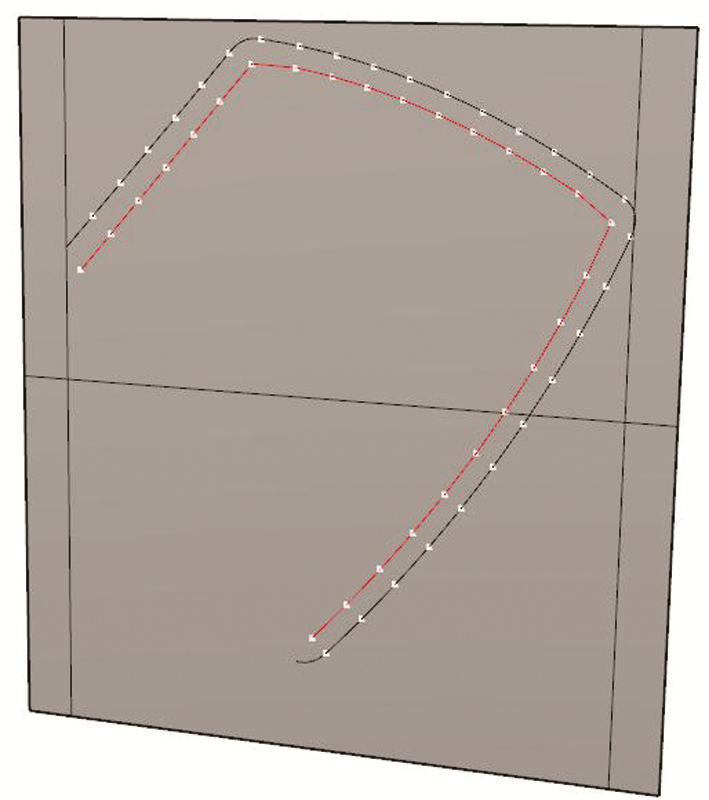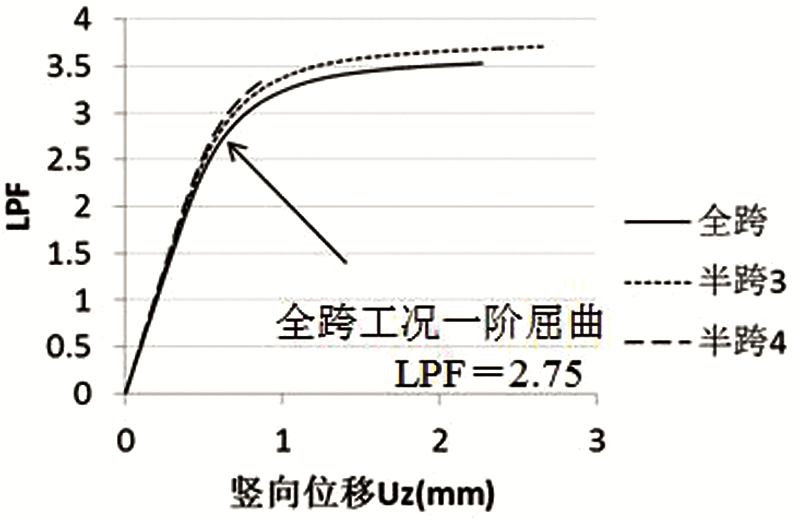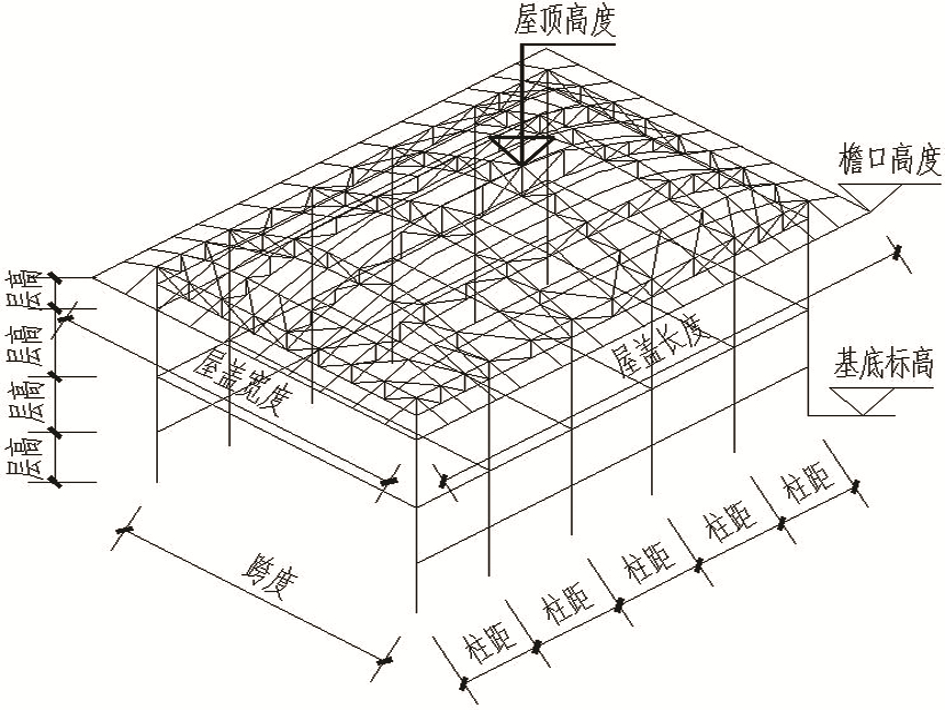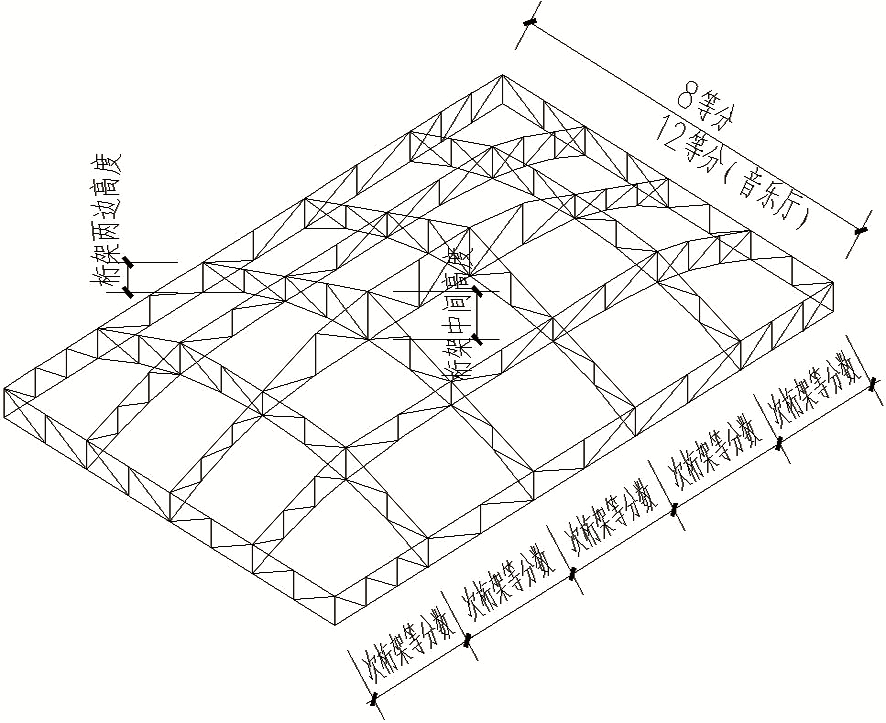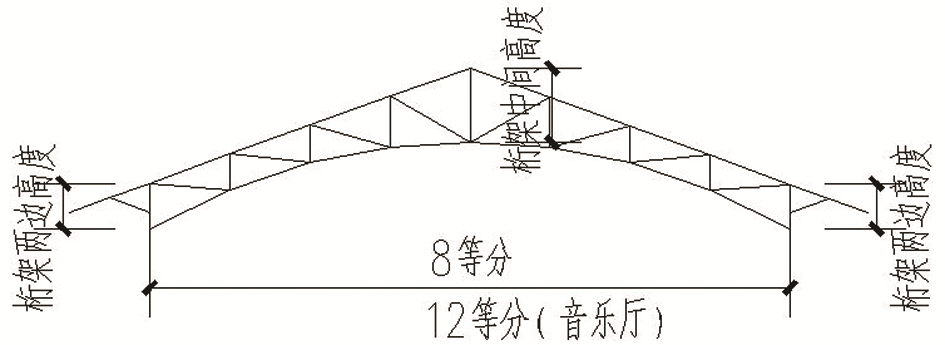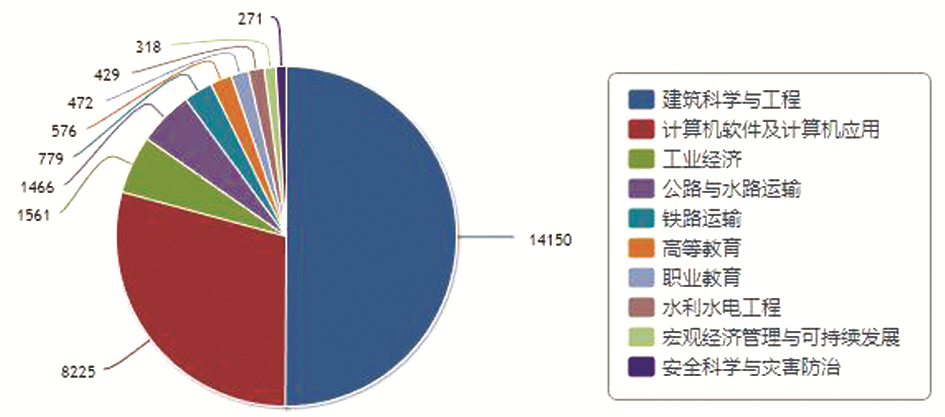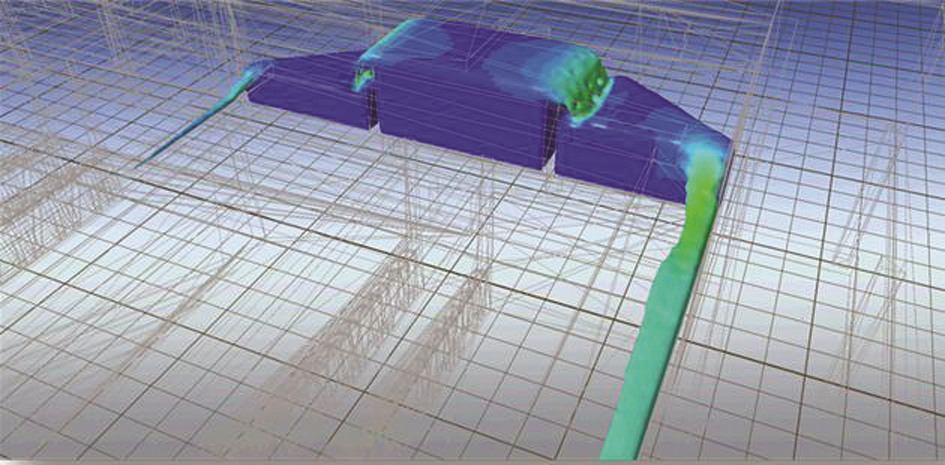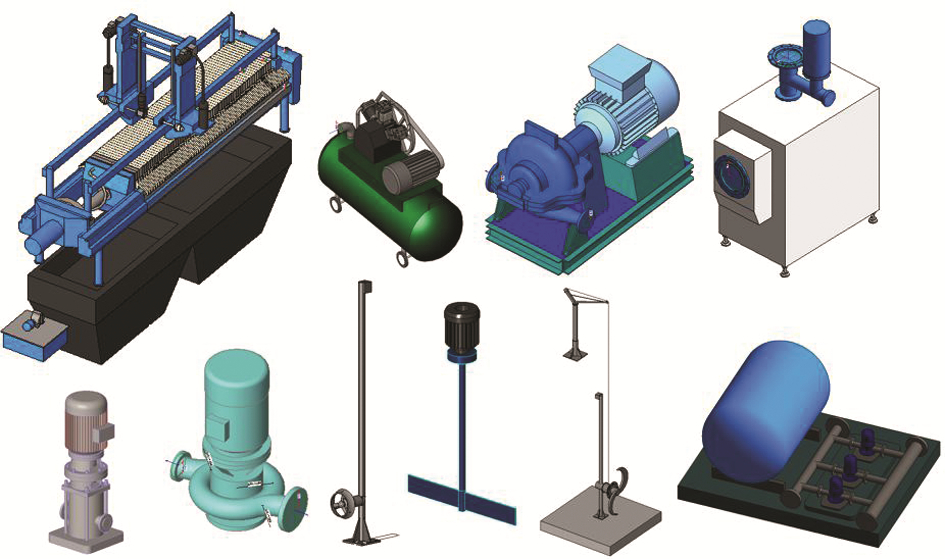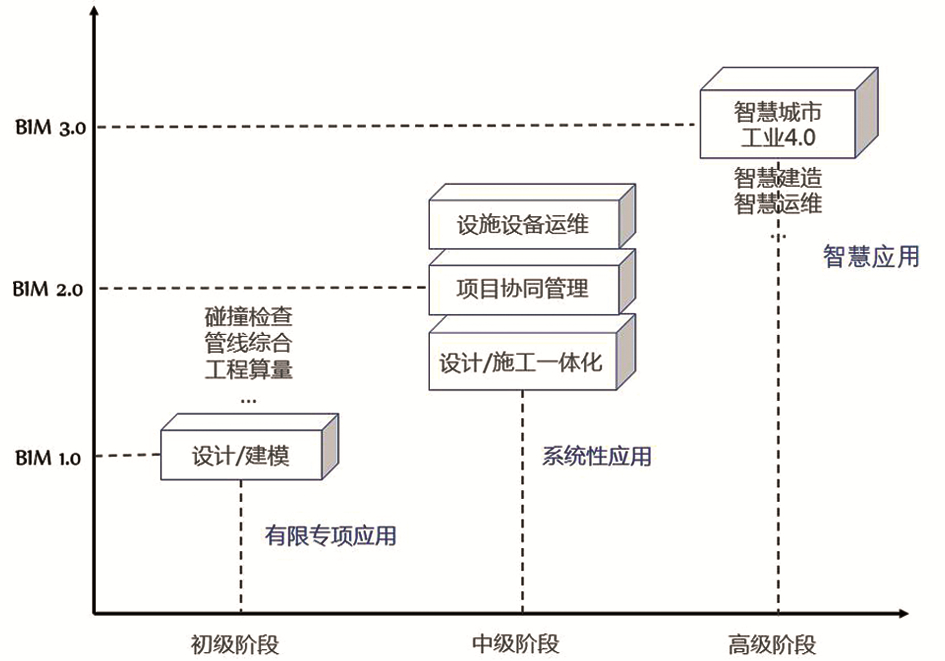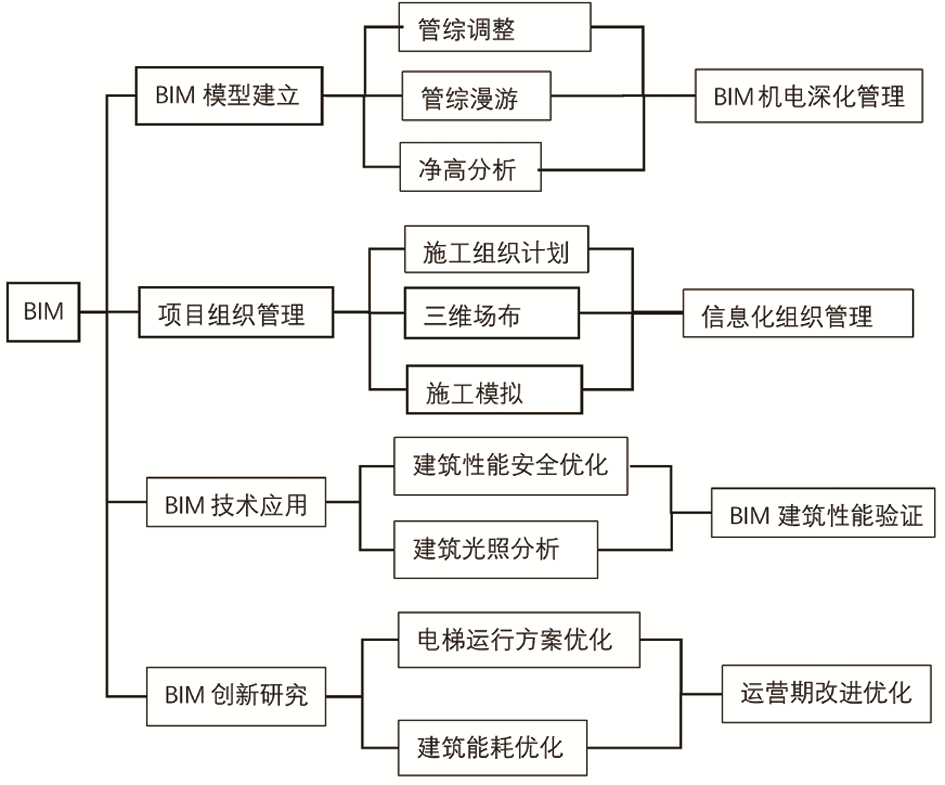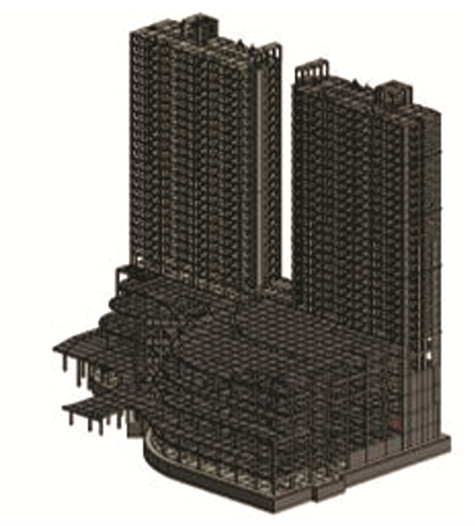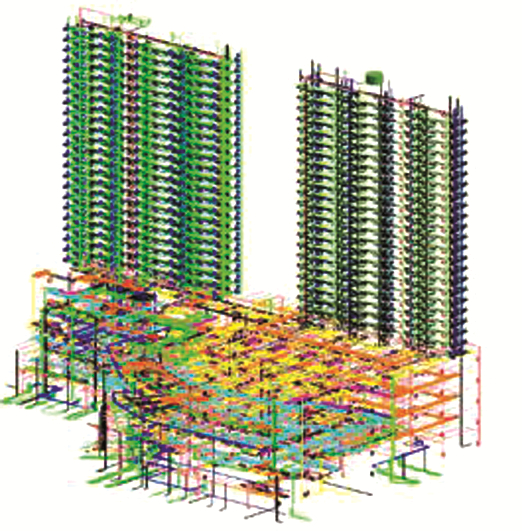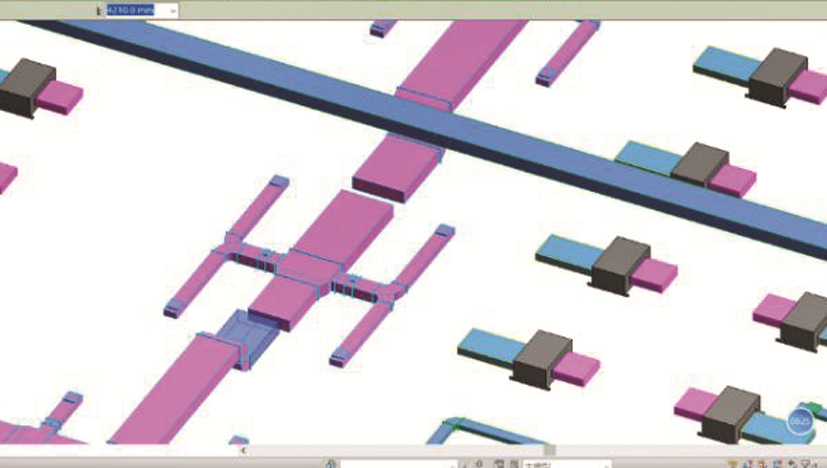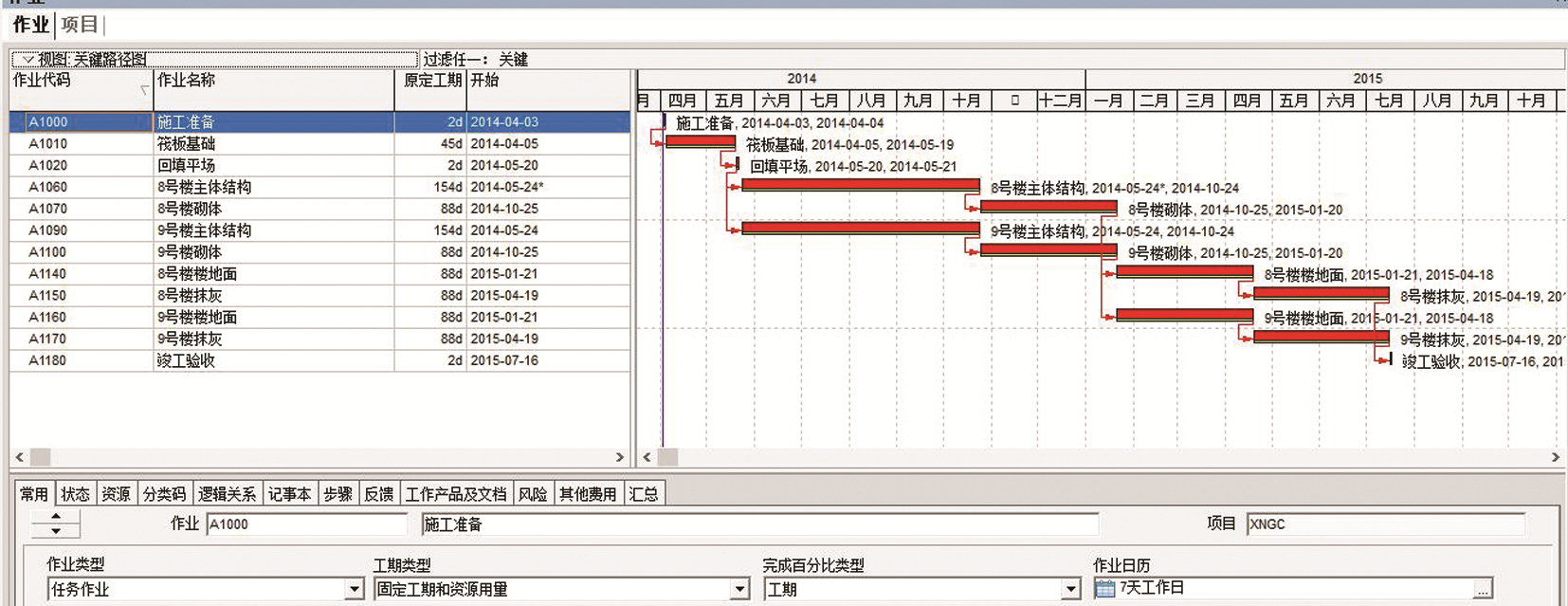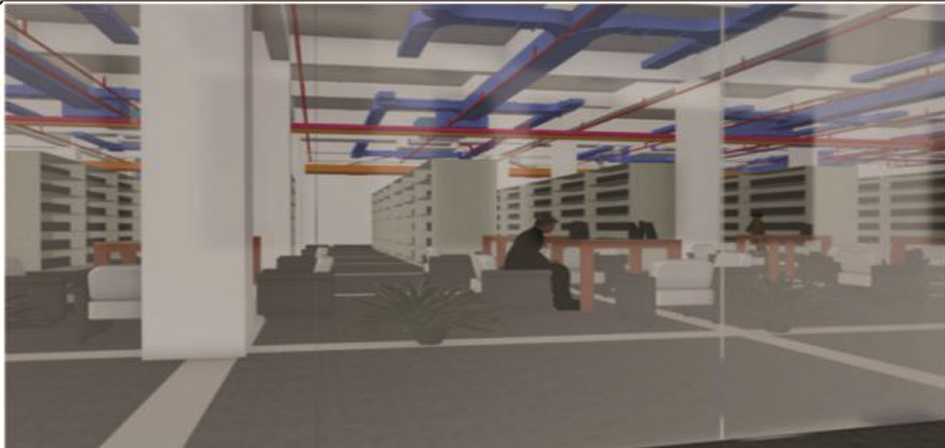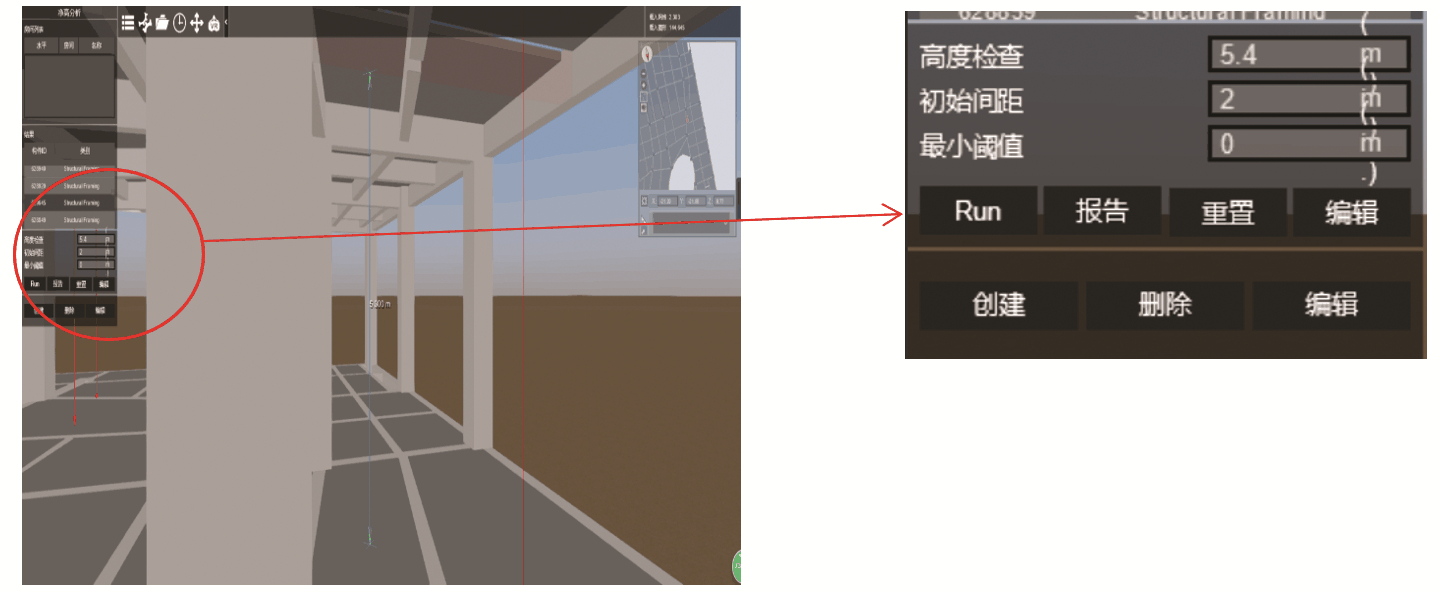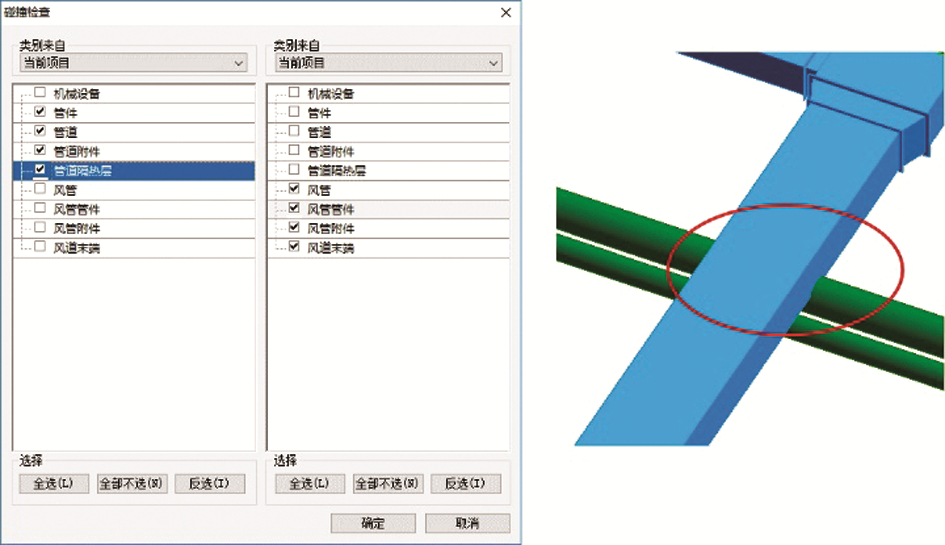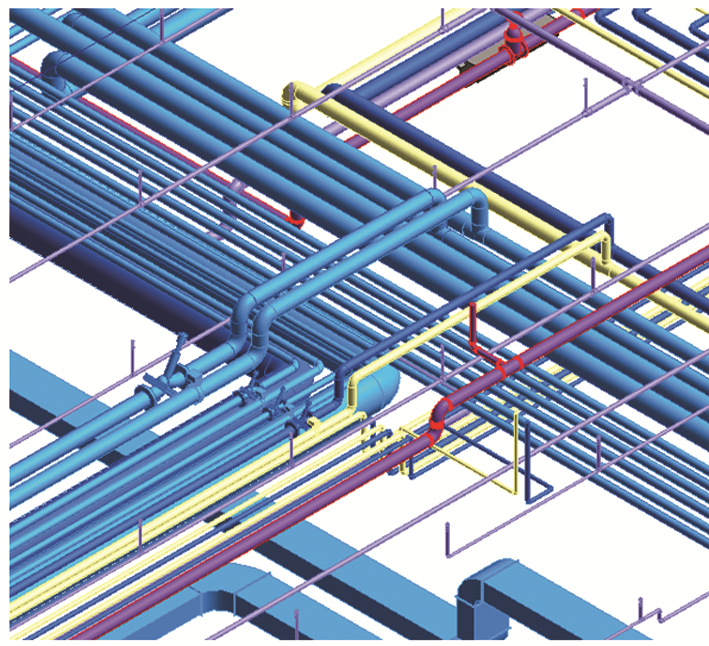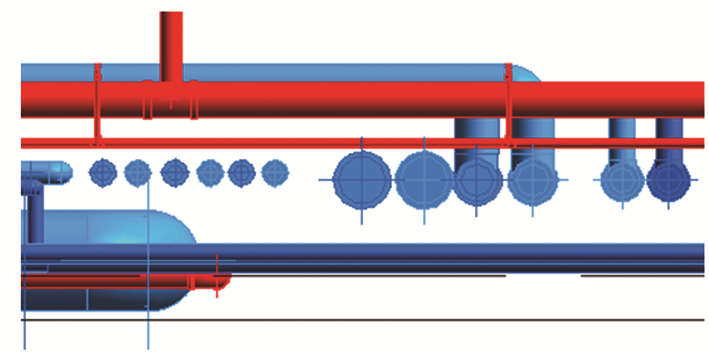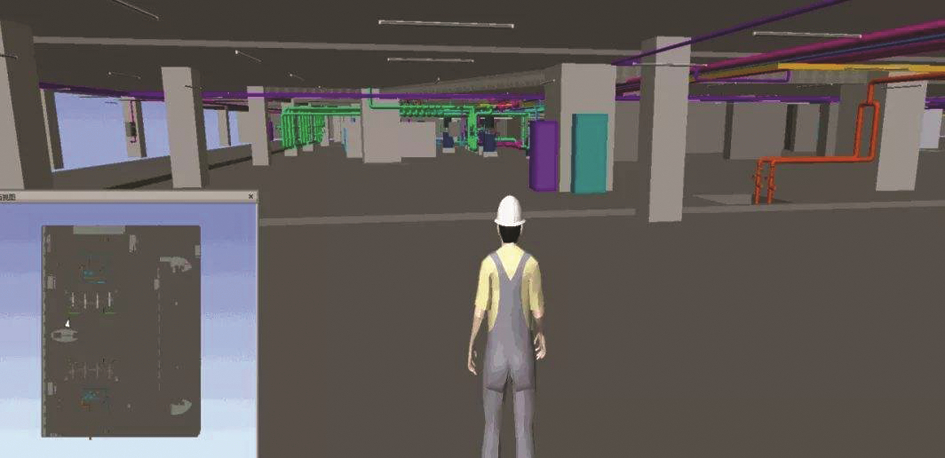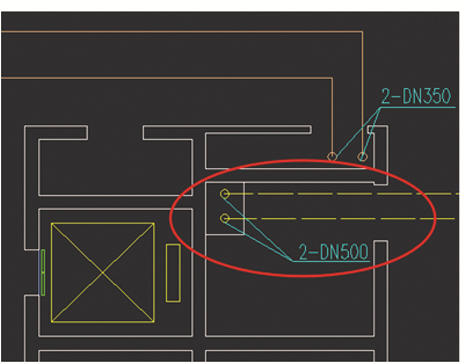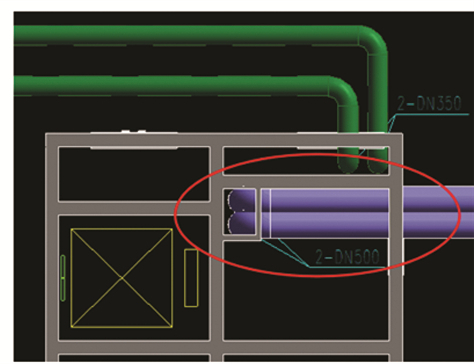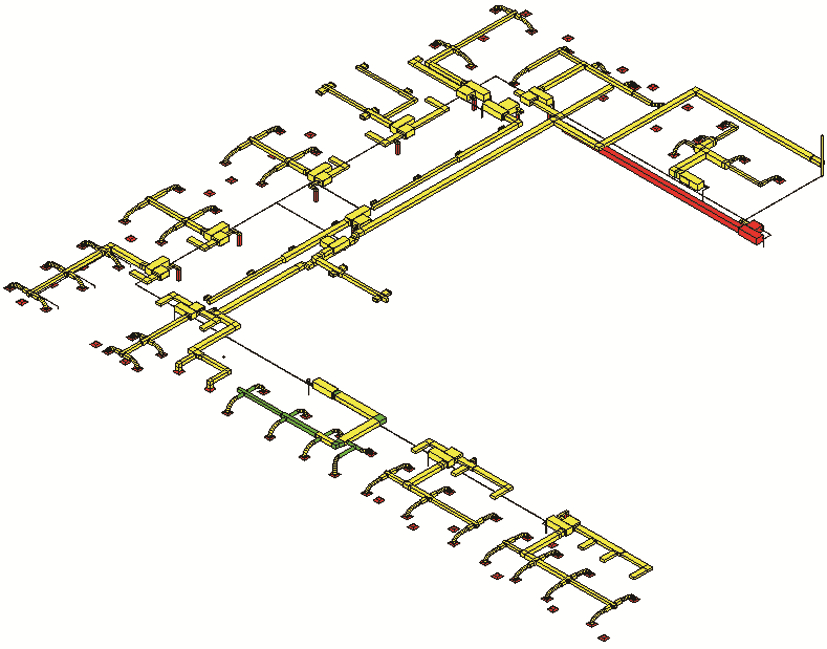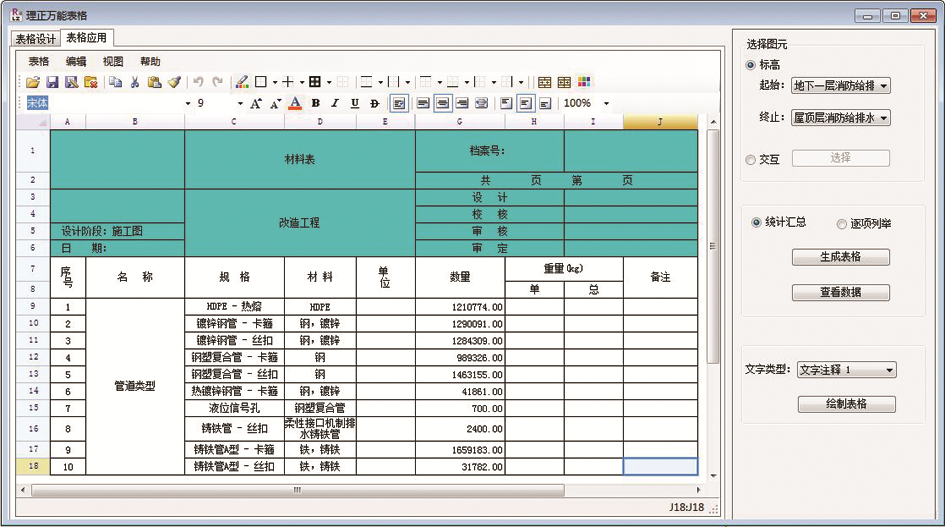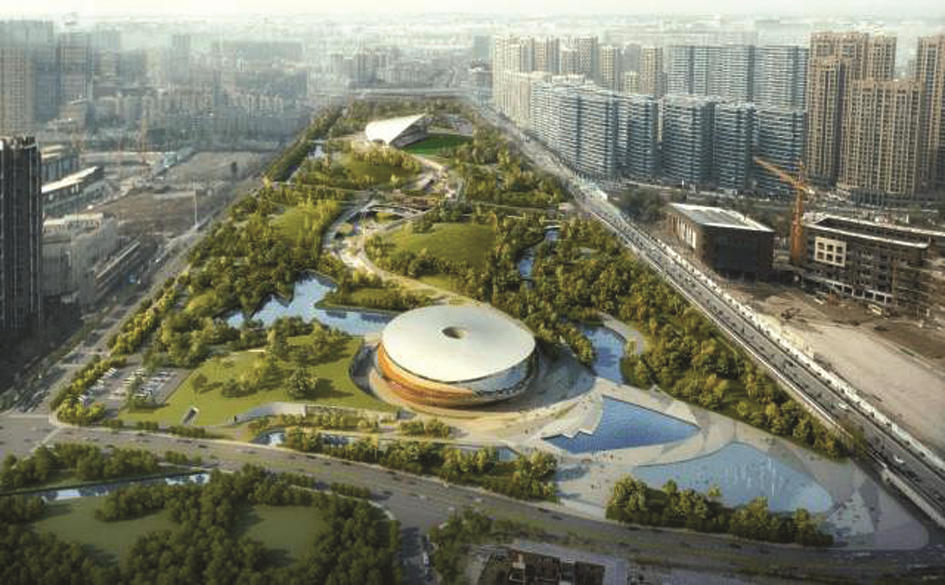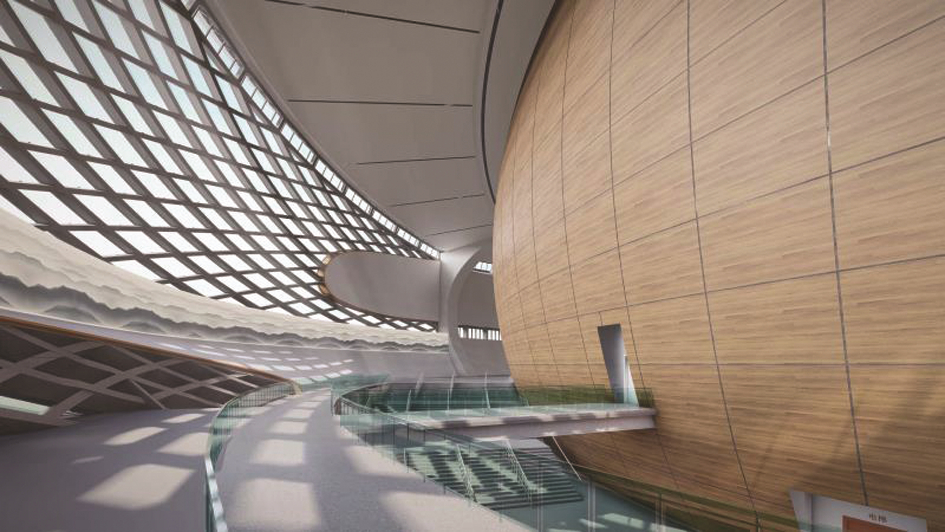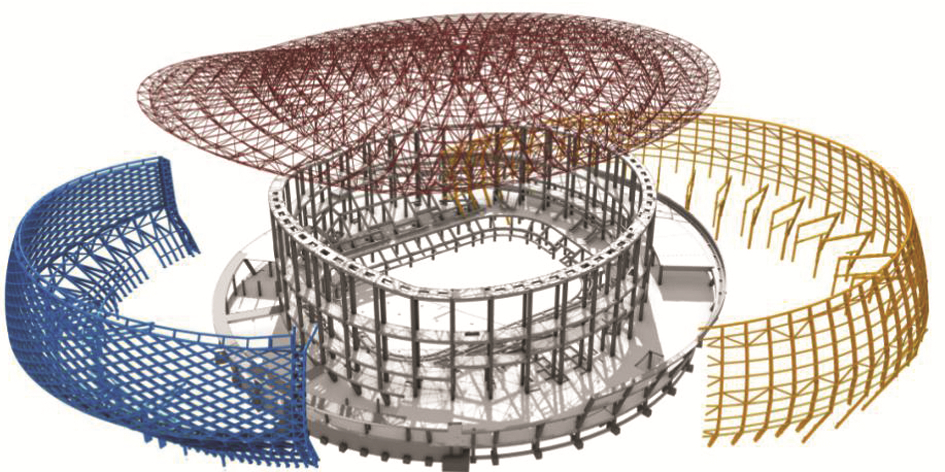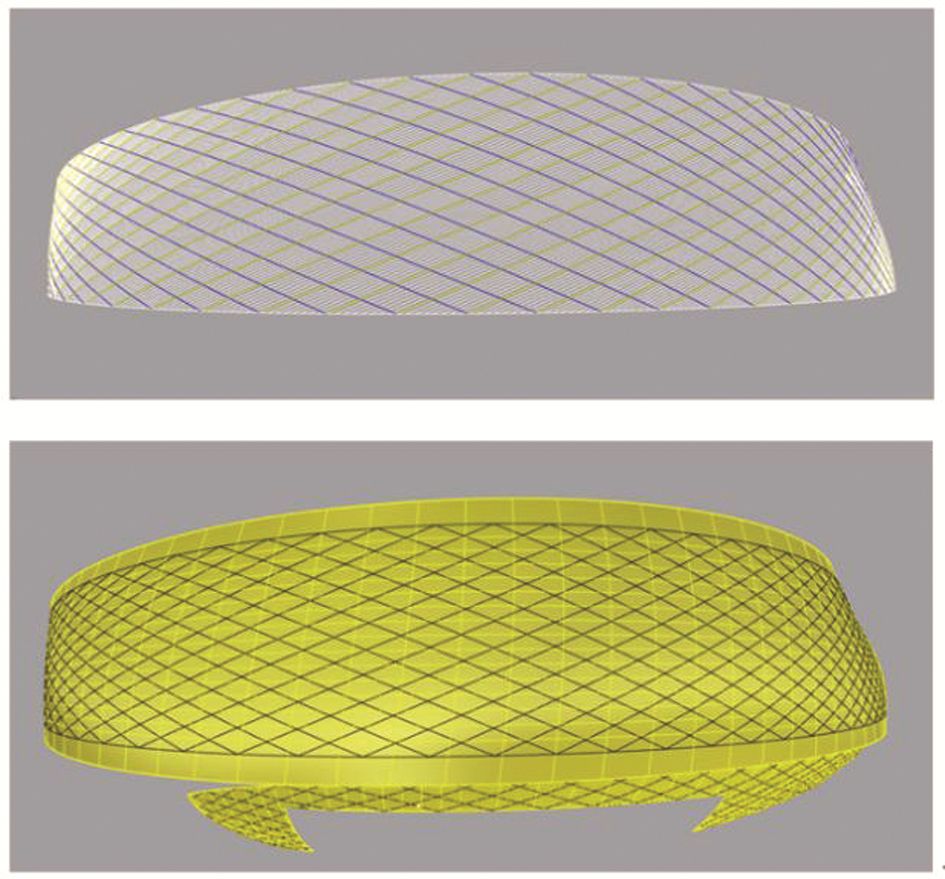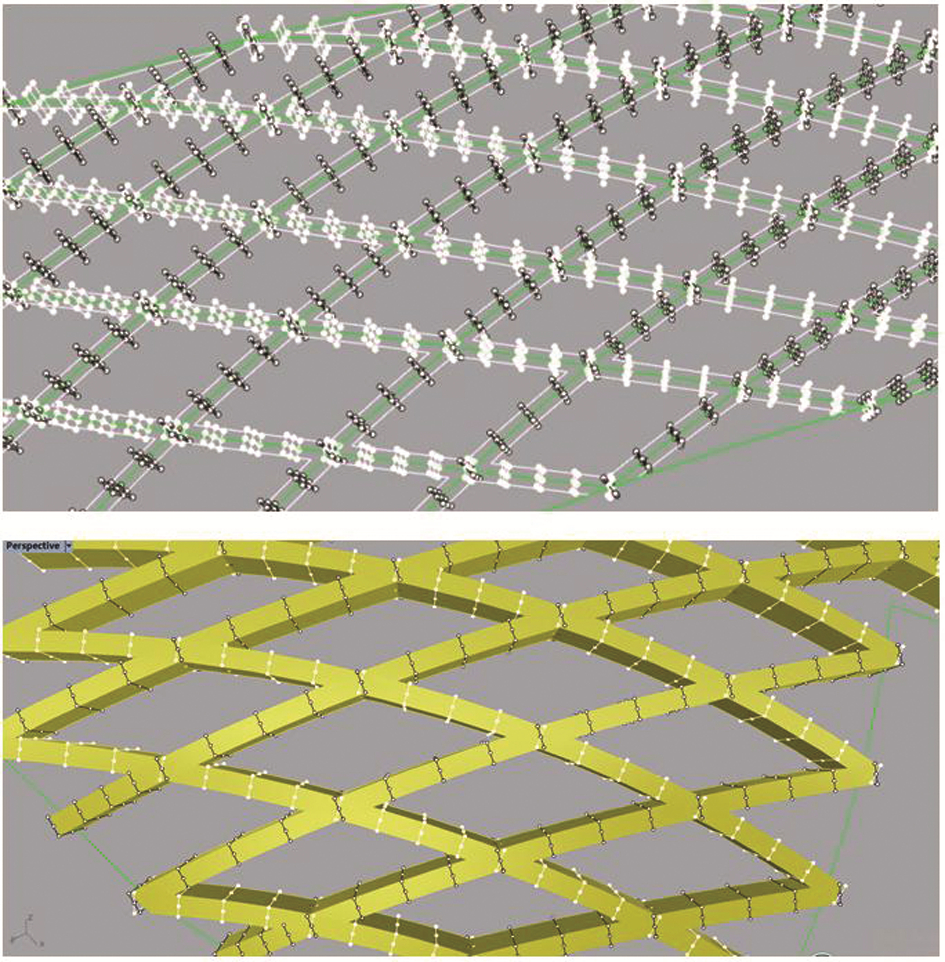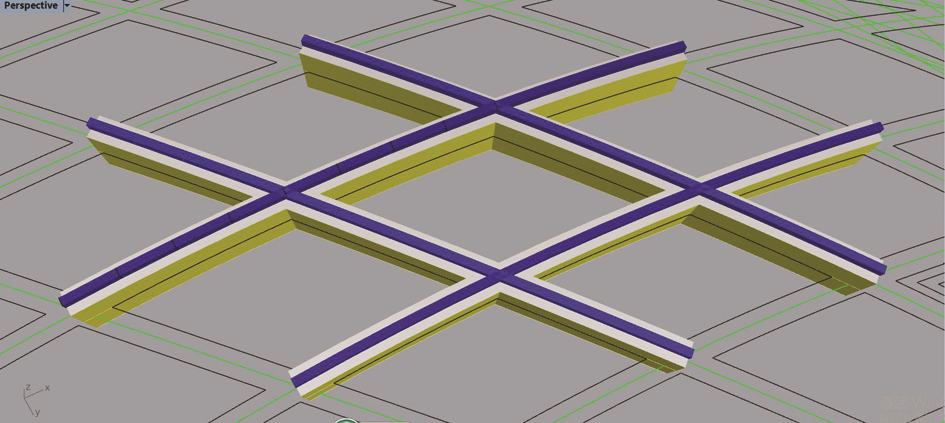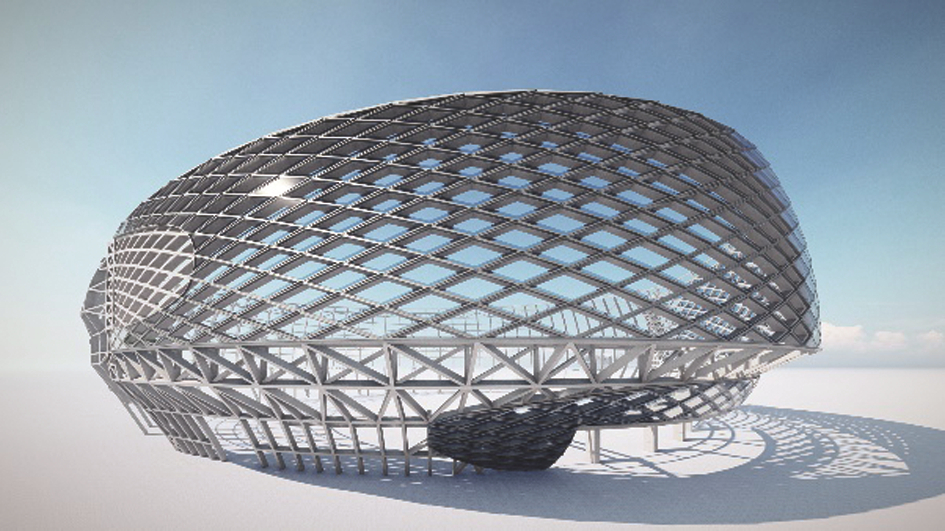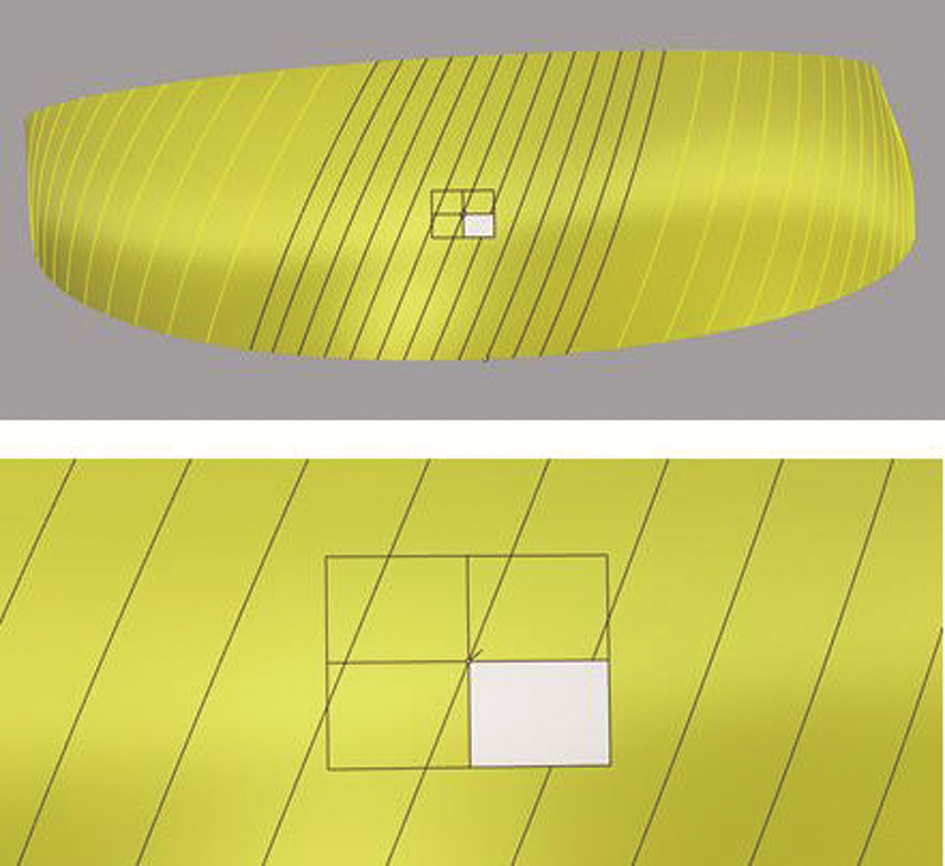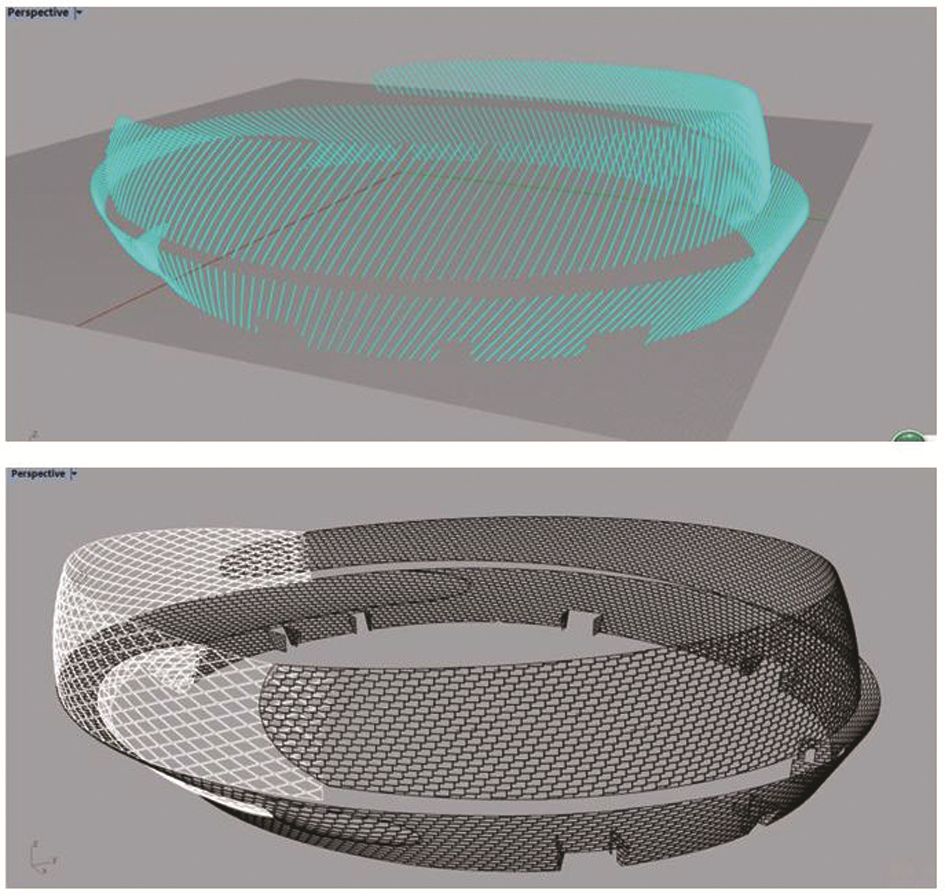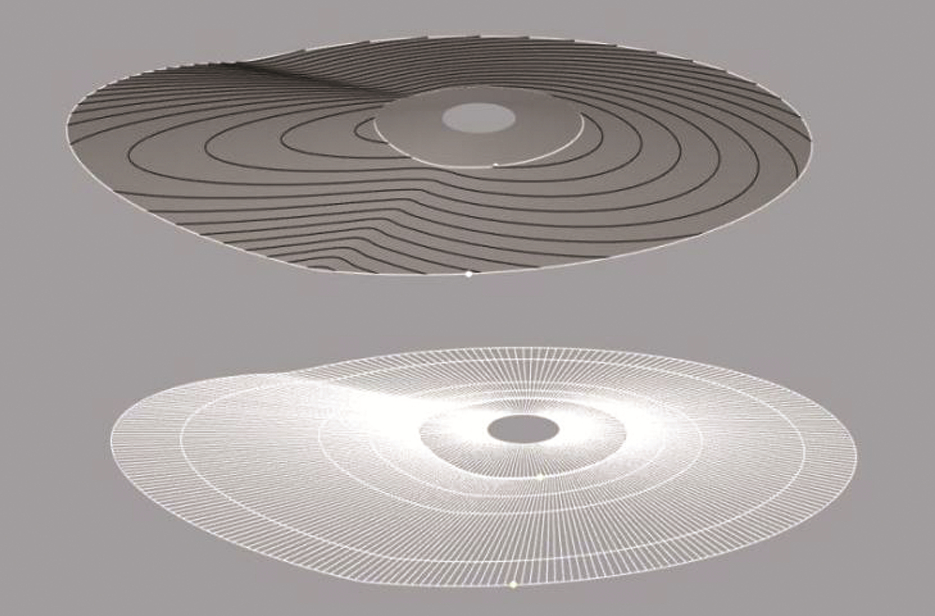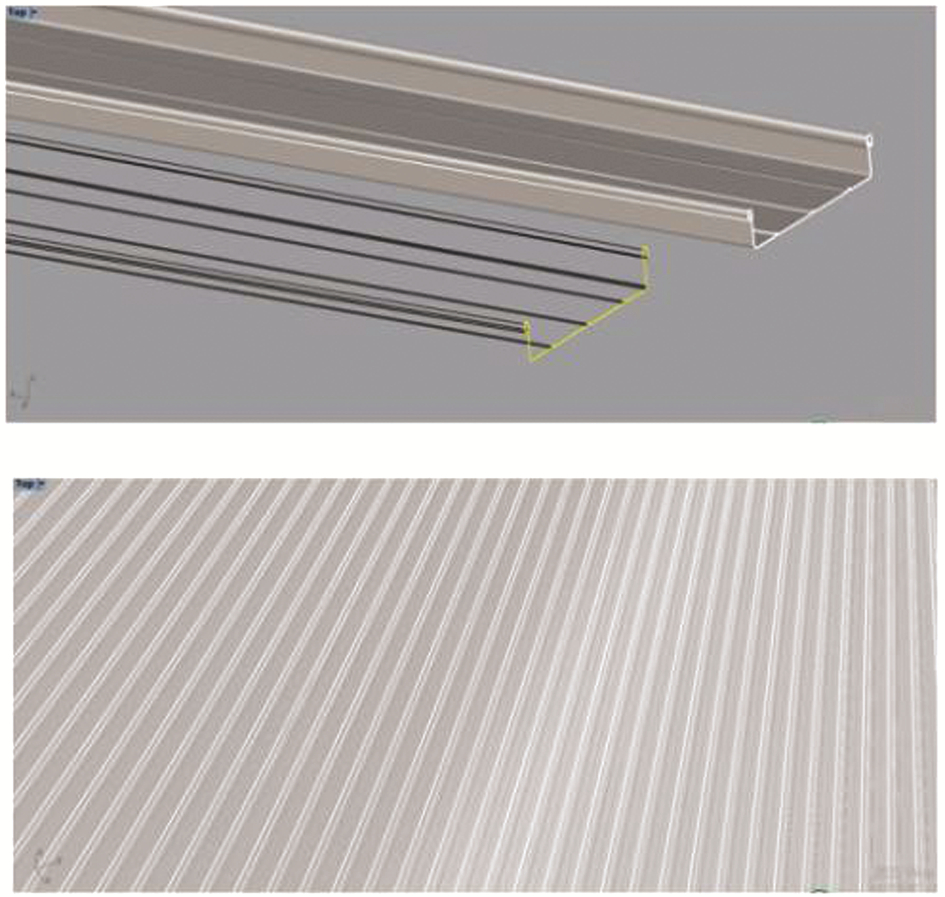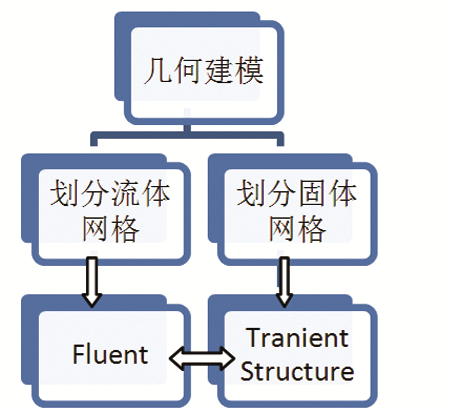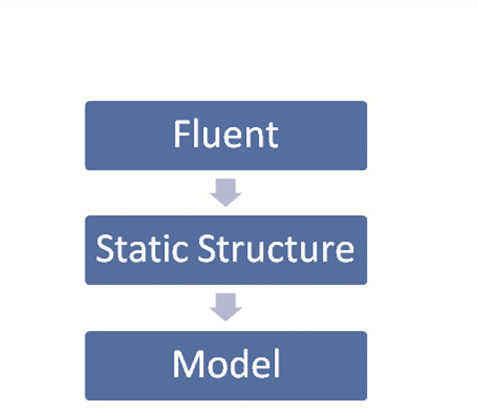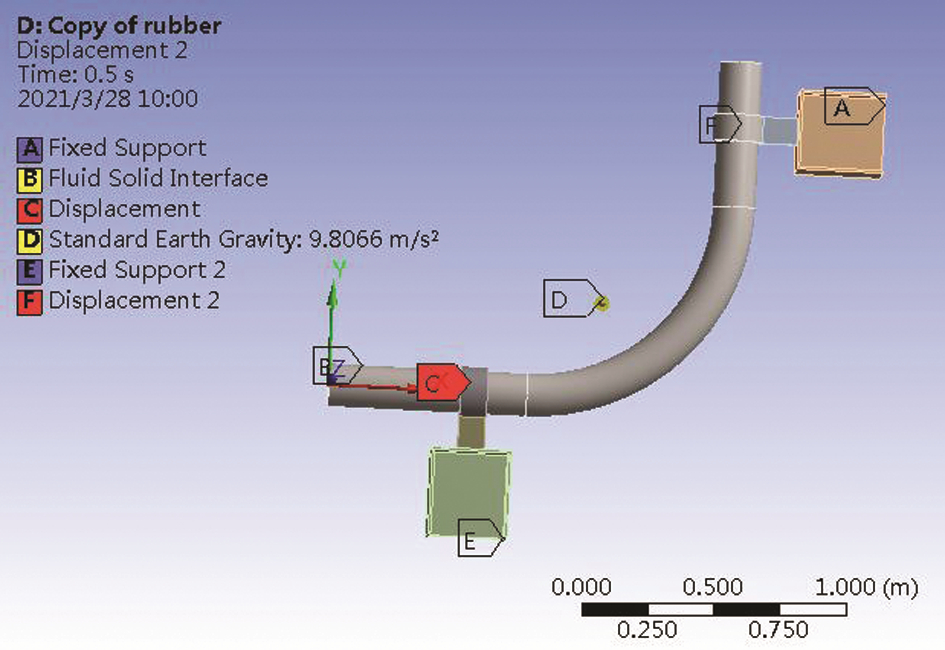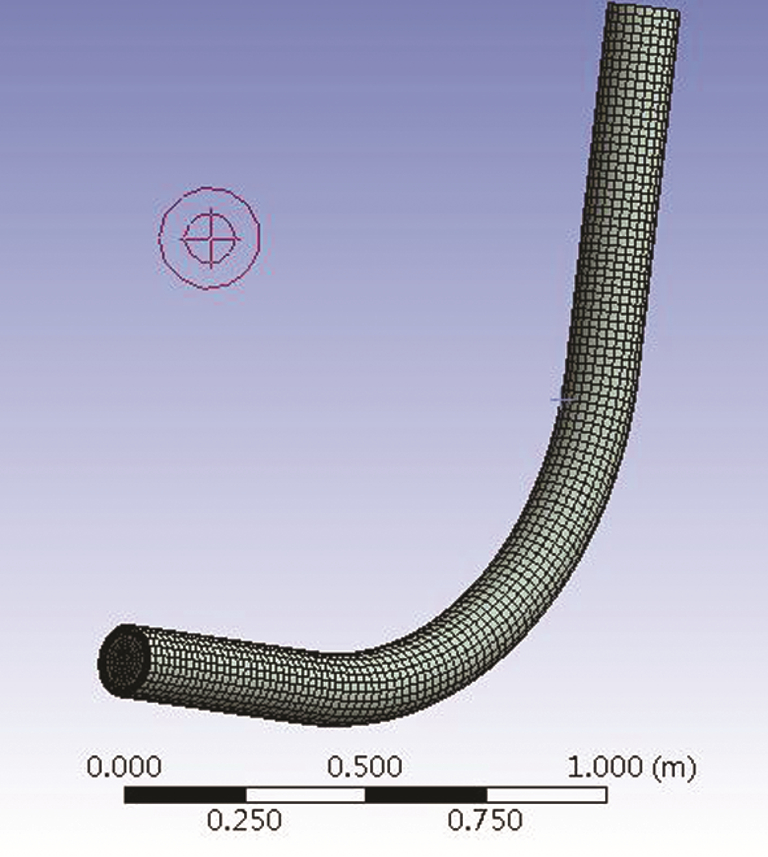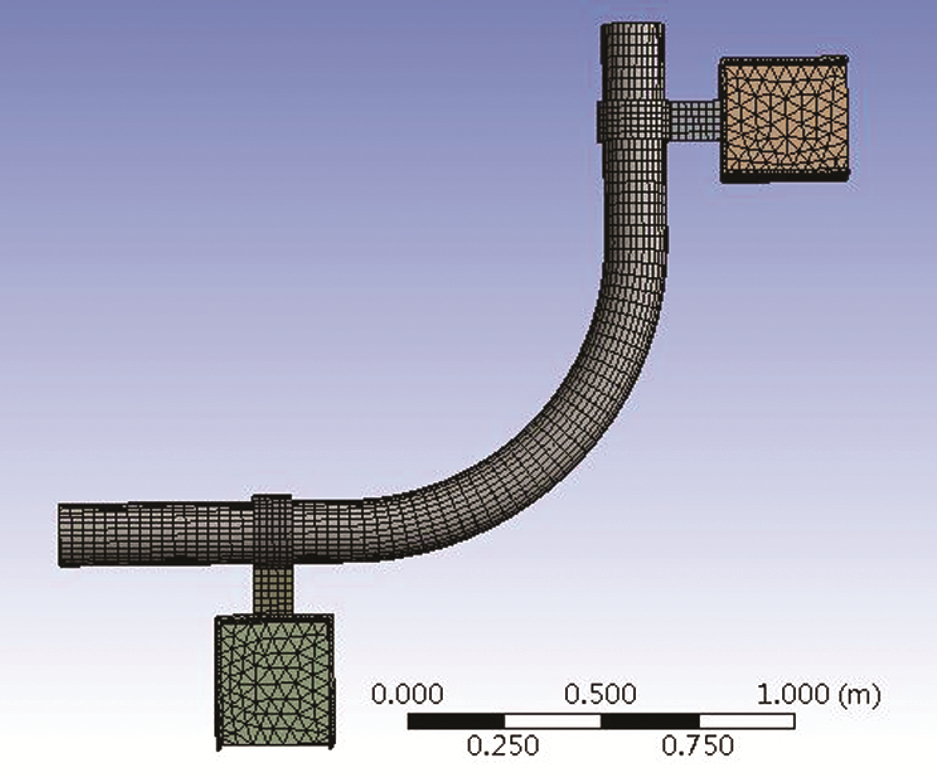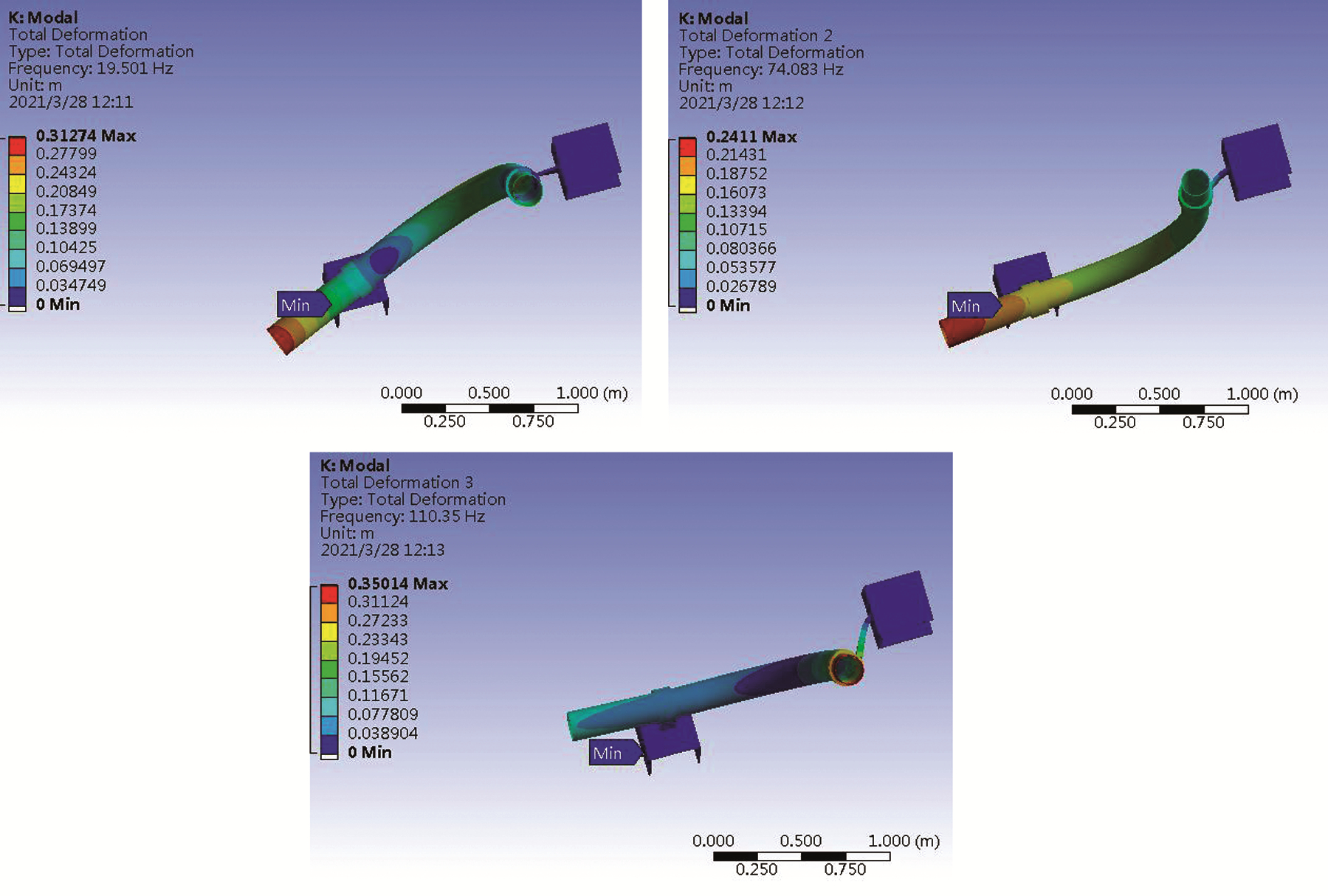Vol. 13, No 2, 2021
Display mode : |
2021, 13(2): 0-0.
Abstract:
2021, 13(2): 1-6.
doi: 10.16670/j.cnki.cn11-5823/tu.2021.02.01
Abstract:
In the development process of digital design and construction technology, due to differences in information architecture, management levels and work modes, it is difficult to form a benign closed loop among construction parties in terms of undertaking the construction phase of 2D and 3D design results and the installation information in the operation and maintenance phase. This paper proposes to establish an integrated application system based on building digital design and intelligent construction to realize the whole industry chain integration from production endpoint to application endpoint. In the design stage, digital standard design is realized by establishing modern industrialized architectural design standards, component libraries and supporting tools. In the production stage, the direct conversion of digital results is realized through the research and development of construction methods and equipment matching the digital design results. The data management mode based on discretization is adopted.Under the standard data sharing, it adopts the method of layered independent management at each stage and inter-layer coding, takes into account the independence and interoperability of multiple platforms, and realizes the seamless implementation of the entire process of digital design results and digital integration of the industrial chain.
In the development process of digital design and construction technology, due to differences in information architecture, management levels and work modes, it is difficult to form a benign closed loop among construction parties in terms of undertaking the construction phase of 2D and 3D design results and the installation information in the operation and maintenance phase. This paper proposes to establish an integrated application system based on building digital design and intelligent construction to realize the whole industry chain integration from production endpoint to application endpoint. In the design stage, digital standard design is realized by establishing modern industrialized architectural design standards, component libraries and supporting tools. In the production stage, the direct conversion of digital results is realized through the research and development of construction methods and equipment matching the digital design results. The data management mode based on discretization is adopted.Under the standard data sharing, it adopts the method of layered independent management at each stage and inter-layer coding, takes into account the independence and interoperability of multiple platforms, and realizes the seamless implementation of the entire process of digital design results and digital integration of the industrial chain.
2021, 13(2): 7-14.
doi: 10.16670/j.cnki.cn11-5823/tu.2021.02.02
Abstract:
With the rapid construction of metro and the establishment of hazard troubleshooting system, a large number of hazard records during the construction are saved in the system. However, there are many hazard records abundant in information, and they need to be analyzed on the basis of guidelines and expert experience seriously, requiring significant labor cost. In order to improve the efficiency of hazard troubleshooting process and the level of safety management decision-making, this paper presents a novel framework that combines text mining and visualization technologies, providing the ability to analyze hazard records automatically. The framework comprises the following four-step modelling approach.Firstly, an overview of hazard records is provided through the quantitative analysis by TF-IDF technology of keywords. Secondly, the thematic information and key points hidden in the large-scale hazard troubleshooting corpus are identified using a Latent Dirichlet Allocation algorithm. Thirdly, a visual overview of hazard records is generated through the quantitative analysis by Word Cloud technology of keywords.Finally, a Word Co-occurrence Network is produced to determine the interrelations between hazard categories and sites. The framework has been used and verified in the analysis of hazard troubleshooting records of Wuhan metro in 2016-2018, showing it can mine 34 categories of hazard troubleshooting keys and visual information.
With the rapid construction of metro and the establishment of hazard troubleshooting system, a large number of hazard records during the construction are saved in the system. However, there are many hazard records abundant in information, and they need to be analyzed on the basis of guidelines and expert experience seriously, requiring significant labor cost. In order to improve the efficiency of hazard troubleshooting process and the level of safety management decision-making, this paper presents a novel framework that combines text mining and visualization technologies, providing the ability to analyze hazard records automatically. The framework comprises the following four-step modelling approach.Firstly, an overview of hazard records is provided through the quantitative analysis by TF-IDF technology of keywords. Secondly, the thematic information and key points hidden in the large-scale hazard troubleshooting corpus are identified using a Latent Dirichlet Allocation algorithm. Thirdly, a visual overview of hazard records is generated through the quantitative analysis by Word Cloud technology of keywords.Finally, a Word Co-occurrence Network is produced to determine the interrelations between hazard categories and sites. The framework has been used and verified in the analysis of hazard troubleshooting records of Wuhan metro in 2016-2018, showing it can mine 34 categories of hazard troubleshooting keys and visual information.
2021, 13(2): 15-20.
doi: 10.16670/j.cnki.cn11-5823/tu.2021.02.03
Abstract:
As an important means of digitalization in the construction industry, BIM technology can solve the inapplicability of the traditional blueprint completion and delivery mode, improve the information management level of construction enterprises, and adapt to the requirements of informatization in the construction industry. Based on the existing digital completion and delivery, this paper discusses the implementation plan of the digital delivery of rail transit in the handover stage from three aspects: delivery content and scope, delivery requirements and key delivery ways. Through the practical project implementation analysis to verify the feasibility of digital delivery of rail transit in the handover stage based on BIM technology. This research enriches the research perspective of digital completion and delivery and has certain reference significance for the realization of digital completion and delivery of construction projects.
As an important means of digitalization in the construction industry, BIM technology can solve the inapplicability of the traditional blueprint completion and delivery mode, improve the information management level of construction enterprises, and adapt to the requirements of informatization in the construction industry. Based on the existing digital completion and delivery, this paper discusses the implementation plan of the digital delivery of rail transit in the handover stage from three aspects: delivery content and scope, delivery requirements and key delivery ways. Through the practical project implementation analysis to verify the feasibility of digital delivery of rail transit in the handover stage based on BIM technology. This research enriches the research perspective of digital completion and delivery and has certain reference significance for the realization of digital completion and delivery of construction projects.
2021, 13(2): 21-26.
doi: 10.16670/j.cnki.cn11-5823/tu.2021.02.04
Abstract:
The architectural decoration began to adopt BIM technology in the design and construction stage of decoration engineering in recent years. In order to improve the utilization rate of data flow and implement BIM smoothly, enterprises need to select a BIM technical route suitable for Decoration Specialty in the process of decoration design. This paper analyzes several technical routes formed in the application of BIM at the stage of decoration designing, and puts forward different ways to select and combine BIM technical routes at design stages of different decoration project, which has practical significance for the transformation and popularization of BIM application in decoration industry at present.
The architectural decoration began to adopt BIM technology in the design and construction stage of decoration engineering in recent years. In order to improve the utilization rate of data flow and implement BIM smoothly, enterprises need to select a BIM technical route suitable for Decoration Specialty in the process of decoration design. This paper analyzes several technical routes formed in the application of BIM at the stage of decoration designing, and puts forward different ways to select and combine BIM technical routes at design stages of different decoration project, which has practical significance for the transformation and popularization of BIM application in decoration industry at present.
2021, 13(2): 27-35.
doi: 10.16670/j.cnki.cn11-5823/tu.2021.02.05
Abstract:
By adopting the principle of separation of front and back ends, this paper studies the underlying technology of joint development of multiple platforms, and proposes an architecture design for the development of refined management platforms. Using Vue+Elementui+Webpack technology to build the front-end of the platform; using SpringCloud+MariaDB+Logback technology to build the back-end of the platform; after the front-end and back-end are built in the separated mode, the front-end and back-end data connection research is carried out through the API interface provided by the back-end.Using Flutter, SQLite database, Android and IOS systems to carry out the construction and design of the platform mobile terminal; through database selection, construction, security, and interface settings, which provides technical support for the management of platform data. Through the research on front-end, back-end, mobile phone and database management, the article designs a set of refined management platform which is conducive to the integration, transmission and sharing of engineering information, and convenient for all parties to view, modify, store, and trasfer engineering information anytime and anywhere. The platform also provides a reference and technical support for improving the efficiency and precision of engineering project management.
By adopting the principle of separation of front and back ends, this paper studies the underlying technology of joint development of multiple platforms, and proposes an architecture design for the development of refined management platforms. Using Vue+Elementui+Webpack technology to build the front-end of the platform; using SpringCloud+MariaDB+Logback technology to build the back-end of the platform; after the front-end and back-end are built in the separated mode, the front-end and back-end data connection research is carried out through the API interface provided by the back-end.Using Flutter, SQLite database, Android and IOS systems to carry out the construction and design of the platform mobile terminal; through database selection, construction, security, and interface settings, which provides technical support for the management of platform data. Through the research on front-end, back-end, mobile phone and database management, the article designs a set of refined management platform which is conducive to the integration, transmission and sharing of engineering information, and convenient for all parties to view, modify, store, and trasfer engineering information anytime and anywhere. The platform also provides a reference and technical support for improving the efficiency and precision of engineering project management.
2021, 13(2): 36-43.
doi: 10.16670/j.cnki.cn11-5823/tu.2021.02.06
Abstract:
In view of the imperfect of BIM curriculum system in the teaching reform of domestic applied undergraduate colleges in China, this paper introduces OBE education concept and CDIO engineering education mode into civil engineering teaching.With the construction of integrated course system of BIM as the center and result-oriented, the talents training model for BIM engineering capacity has been constructed based on OBE-CDIO concept. Around the training objective of BIM engineering capacity, teaching practices and evaluations based on BIM platform are carried out by project cases and establishes BIM course system for civil engineering specialty.Teaching practice indicates that the BIM teaching system based on OBE-CDIO can improve the comprehensive engineering practice capability and innovation of graduates effectively, and it provides reference of the BIM teaching reform for application-oriented undergraduate colleges and universities.
In view of the imperfect of BIM curriculum system in the teaching reform of domestic applied undergraduate colleges in China, this paper introduces OBE education concept and CDIO engineering education mode into civil engineering teaching.With the construction of integrated course system of BIM as the center and result-oriented, the talents training model for BIM engineering capacity has been constructed based on OBE-CDIO concept. Around the training objective of BIM engineering capacity, teaching practices and evaluations based on BIM platform are carried out by project cases and establishes BIM course system for civil engineering specialty.Teaching practice indicates that the BIM teaching system based on OBE-CDIO can improve the comprehensive engineering practice capability and innovation of graduates effectively, and it provides reference of the BIM teaching reform for application-oriented undergraduate colleges and universities.
2021, 13(2): 44-50.
doi: 10.16670/j.cnki.cn11-5823/tu.2021.02.07
Abstract:
BIM technology is a hot research topic in the field of engineering informatization, and its application needs the support of corresponding BIM standards. In the field of traffic construction, although some organizations have carried out researches in this area, there is no formal BIM standard implementation, which affects the effect of BIM application to a certain extent. This paper takes the traffic field of Shenzhen as an example, through combing the mainstream BIM standard system at home and abroad, studys the applicable scope and system architecture of various standards, puts forward the BIM standard system framework of the traffic construction field of Shenzhen from the perspective of the whole life cycle of project construction, and expounds its composition and related contents in detail, to provide references for the subsequent development of relevant standards.
BIM technology is a hot research topic in the field of engineering informatization, and its application needs the support of corresponding BIM standards. In the field of traffic construction, although some organizations have carried out researches in this area, there is no formal BIM standard implementation, which affects the effect of BIM application to a certain extent. This paper takes the traffic field of Shenzhen as an example, through combing the mainstream BIM standard system at home and abroad, studys the applicable scope and system architecture of various standards, puts forward the BIM standard system framework of the traffic construction field of Shenzhen from the perspective of the whole life cycle of project construction, and expounds its composition and related contents in detail, to provide references for the subsequent development of relevant standards.
2021, 13(2): 51-59.
doi: 10.16670/j.cnki.cn11-5823/tu.2021.02.08
Abstract:
At present, many high-speed railway stations with local characteristics, beautiful shapes and complex traffic have been built in large and medium-sized cities in China, which have become urban landmarks. Steel structure has been widely used in the construction of high-speed railway station because of its many advantages, such as light weight, high strength, good seismic performance, high degree of industrialization, convenient construction and free modeling design. However, due to the complex structure of the steel structure project of the high-speed railway station, the construction environment is relatively complex, and the construction difficulty is large. Under the traditional construction, the information in each stage is relatively independent, lacking traceability, and the overall informatization application level is relatively low. This article through to the station of high-speed steel structure engineering construction was analyzed, and the full use of BIM technology, cloud technology, through the data transmission chain, from design, deepening design, prefabricated steel structure processing, logistics, transportation, installation, structure produce a seamless transfer of information, traceability of steel structure components and weld levels, improved management communication efficiency, accelerated construction period, formed a new mode of intelligent construction of steel structure BIM full life cycle, and enriched steel structure engineering of high-speed railway station Management mode.
At present, many high-speed railway stations with local characteristics, beautiful shapes and complex traffic have been built in large and medium-sized cities in China, which have become urban landmarks. Steel structure has been widely used in the construction of high-speed railway station because of its many advantages, such as light weight, high strength, good seismic performance, high degree of industrialization, convenient construction and free modeling design. However, due to the complex structure of the steel structure project of the high-speed railway station, the construction environment is relatively complex, and the construction difficulty is large. Under the traditional construction, the information in each stage is relatively independent, lacking traceability, and the overall informatization application level is relatively low. This article through to the station of high-speed steel structure engineering construction was analyzed, and the full use of BIM technology, cloud technology, through the data transmission chain, from design, deepening design, prefabricated steel structure processing, logistics, transportation, installation, structure produce a seamless transfer of information, traceability of steel structure components and weld levels, improved management communication efficiency, accelerated construction period, formed a new mode of intelligent construction of steel structure BIM full life cycle, and enriched steel structure engineering of high-speed railway station Management mode.
2021, 13(2): 60-69.
doi: 10.16670/j.cnki.cn11-5823/tu.2021.02.09
Abstract:
Based on the Product-Organization-Process research model of VDC/BIM, this paper puts forward the POPi digital integration framework, in which the core element is increasing hardware and software infrastructure. It also discusses the factor model and dependent relationship of the POPi framework given the practical characteristics of BIM implementation and software diversity, and inter-organizational task interdependence in large-scale super high-rise projects. This paper analyzes the four core element models of the POPi framework from a practical point of view and the typical implementation based on element models in the design and pre-construction phase of Suzhou Zhongnan Center project.
Based on the Product-Organization-Process research model of VDC/BIM, this paper puts forward the POPi digital integration framework, in which the core element is increasing hardware and software infrastructure. It also discusses the factor model and dependent relationship of the POPi framework given the practical characteristics of BIM implementation and software diversity, and inter-organizational task interdependence in large-scale super high-rise projects. This paper analyzes the four core element models of the POPi framework from a practical point of view and the typical implementation based on element models in the design and pre-construction phase of Suzhou Zhongnan Center project.
2021, 13(2): 70-78.
doi: 10.16670/j.cnki.cn11-5823/tu.2021.02.10
Abstract:
The 2022 Hangzhou Asian Games Ping Pong Ball Sports Hall is the only new large-scale sports venue in the main urban area of Hangzhou. Featuring a novel design and unique shape, the hall′s external control surface is composed of several free-form surfaces. The irregular and non-linear geometric shape brings certain difficulties in architectural design and construction. Focusing on the digital design and construction of the sports hall, the way of establishing the geometric modeling method of the bending-torsional grid steel structure under the conditions of the given control surface and control curve grid has been firstly introduced using the moving frame. Secondly, the configuration and the keel design method of the aluminum panel curtain wall on the given control surface have been presented using the linear structure on the smooth surface. The roof space truss of this project is part of an irregular spatial truss. Specifically, the truss is presented in a spatial curved reticulated shell as a whole, and the control surfaces of upper and bottom chords are free-form surfaces. Moreover, the cell grid is arranged in an inverted quadrangular pyramid. And the gride layer has various diagonal web members and complex space. In the meanwhile, large numbers of professional equipment and facilities for buildings and devices have been arranged. In this paper, the applications of BIM integration technology in the layout of space truss equipment and the design and construction of integrated support brackets have been described in detail.
The 2022 Hangzhou Asian Games Ping Pong Ball Sports Hall is the only new large-scale sports venue in the main urban area of Hangzhou. Featuring a novel design and unique shape, the hall′s external control surface is composed of several free-form surfaces. The irregular and non-linear geometric shape brings certain difficulties in architectural design and construction. Focusing on the digital design and construction of the sports hall, the way of establishing the geometric modeling method of the bending-torsional grid steel structure under the conditions of the given control surface and control curve grid has been firstly introduced using the moving frame. Secondly, the configuration and the keel design method of the aluminum panel curtain wall on the given control surface have been presented using the linear structure on the smooth surface. The roof space truss of this project is part of an irregular spatial truss. Specifically, the truss is presented in a spatial curved reticulated shell as a whole, and the control surfaces of upper and bottom chords are free-form surfaces. Moreover, the cell grid is arranged in an inverted quadrangular pyramid. And the gride layer has various diagonal web members and complex space. In the meanwhile, large numbers of professional equipment and facilities for buildings and devices have been arranged. In this paper, the applications of BIM integration technology in the layout of space truss equipment and the design and construction of integrated support brackets have been described in detail.
2021, 13(2): 79-85.
doi: 10.16670/j.cnki.cn11-5823/tu.2021.02.11
Abstract:
BIM is the representative technology of the construction industry in the information age. The underground pipeline network project is an important part of the construction of municipal infrastructure, which is the main channel for the urban life materials transportation, information transmission and essential to the normal realization of urban functions. In most cases, the application of BIM technology is based on the information-bearing model. The large-scale, complex, and spatial engineering modeling of pipe network engineering places a great burden on engineering personnel. Based on the pipeline network designing stage, this paper proposes the idea of Hongye-Revit collaborative modeling intending to improve modeling efficiency and optimize the design and verifies several application points of the model BIM in the pipeline network project with engineering examples. Finally, analyzes the rationality of modeling ideas with the development trend of BIM.
BIM is the representative technology of the construction industry in the information age. The underground pipeline network project is an important part of the construction of municipal infrastructure, which is the main channel for the urban life materials transportation, information transmission and essential to the normal realization of urban functions. In most cases, the application of BIM technology is based on the information-bearing model. The large-scale, complex, and spatial engineering modeling of pipe network engineering places a great burden on engineering personnel. Based on the pipeline network designing stage, this paper proposes the idea of Hongye-Revit collaborative modeling intending to improve modeling efficiency and optimize the design and verifies several application points of the model BIM in the pipeline network project with engineering examples. Finally, analyzes the rationality of modeling ideas with the development trend of BIM.
2021, 13(2): 86-91.
doi: 10.16670/j.cnki.cn11-5823/tu.2021.02.12
Abstract:
This paper briefly introduces BIM technology and 3D geological modeling and discusses the importance of 3D geological modeling based on BIM technology in geological work, combines the drilling data of a 1∶50000 map of environmental geological survey, aims at the current situation and actual demand of domestic three-dimensional geological modeling based on BIM technology, combines with Lizheng BIM 3D geological modeling technology, the attempt of three-dimensional modeling of 1∶50000 map was carried out. The paper puts forward the application framework of this modeling BIM technology, as well as the method of establishing BIM 3D geological model and the display of results to explore the feasibility of BIM′s guidance for planning and construction in three-dimensional geological modeling.
This paper briefly introduces BIM technology and 3D geological modeling and discusses the importance of 3D geological modeling based on BIM technology in geological work, combines the drilling data of a 1∶50000 map of environmental geological survey, aims at the current situation and actual demand of domestic three-dimensional geological modeling based on BIM technology, combines with Lizheng BIM 3D geological modeling technology, the attempt of three-dimensional modeling of 1∶50000 map was carried out. The paper puts forward the application framework of this modeling BIM technology, as well as the method of establishing BIM 3D geological model and the display of results to explore the feasibility of BIM′s guidance for planning and construction in three-dimensional geological modeling.
2021, 13(2): 92-96.
doi: 10.16670/j.cnki.cn11-5823/tu.2021.02.13
Abstract:
In view of the problems of bridges in service such as more attention to construction, less to maintenance and unsmooth information transmission, the establishment of maintenance management platform based on BIM technology has become a new direction of bridge maintenance management. In this paper, taking large-scale bridge in Wuhan as an example, BIM model used in design, construction, management and maintenance, a large-scale bridge maintenance management platform was built through taking advantages of BIM information processing with integration of new technologies such as GIS, mobile internet, IOT and so on. Practice has proved that the platform can effectively improve the management efficiency and scientific decision-making level of large-scale bridge maintenance, realize the digitalization and intelligentization of large-scale bridge maintenance management, and provide a new method for the management and maintenance of large-scale bridges throughout the life cycle.
In view of the problems of bridges in service such as more attention to construction, less to maintenance and unsmooth information transmission, the establishment of maintenance management platform based on BIM technology has become a new direction of bridge maintenance management. In this paper, taking large-scale bridge in Wuhan as an example, BIM model used in design, construction, management and maintenance, a large-scale bridge maintenance management platform was built through taking advantages of BIM information processing with integration of new technologies such as GIS, mobile internet, IOT and so on. Practice has proved that the platform can effectively improve the management efficiency and scientific decision-making level of large-scale bridge maintenance, realize the digitalization and intelligentization of large-scale bridge maintenance management, and provide a new method for the management and maintenance of large-scale bridges throughout the life cycle.
2021, 13(2): 97-104.
doi: 10.16670/j.cnki.cn11-5823/tu.2021.02.14
Abstract:
To reduce personnel exposure during the COVID-19, and encourage development enterprises to use the Internet, virtual reality(VR)and live sales and other non-contact ways to carry out online real estate display. It is recommended that based on the BIM model, the IFC standard of BIM model is transformed into 3D Tiles standard for network transmission. This method is mainly divided into three steps: IFC-OBJ, OBJ-glTF, and glTF-3D Tiles. The open-source platform Cesium is selected as the framework to load the BIM model, which realizes the quickly loading of BIM models on Web, and reduces the loss of geometric information and attribute information, and provides a new marketing scheme for development enterprises.
To reduce personnel exposure during the COVID-19, and encourage development enterprises to use the Internet, virtual reality(VR)and live sales and other non-contact ways to carry out online real estate display. It is recommended that based on the BIM model, the IFC standard of BIM model is transformed into 3D Tiles standard for network transmission. This method is mainly divided into three steps: IFC-OBJ, OBJ-glTF, and glTF-3D Tiles. The open-source platform Cesium is selected as the framework to load the BIM model, which realizes the quickly loading of BIM models on Web, and reduces the loss of geometric information and attribute information, and provides a new marketing scheme for development enterprises.
2021, 13(2): 105-110.
doi: 10.16670/j.cnki.cn11-5823/tu.2021.02.15
Abstract:
Taking the front square project of Xinglong West Railway Station as an example, this paper introduces how to use BIM technology to reasonably solve the problem of construction of mountain foundation and cross-gully structure from four aspects: engineering overview, topographic BIM application, BIM comprehensive application and smart construction site application. The project is led by the company BIM, and the application of mountain BIM technology is the core to realize multi-dimensional BIM application. Taking construction demand as the main line, the software application system is determined according to BIM modeling, construction progress simulation, construction process simulation, safety submission, simulation experience and other requirements, so as to realize the integration and application of topographic BIM data. Taking software requirements as the main line, hardware equipment is determined according to specific BIM technical route. In view of the characteristics of project construction, BIM+intelligent site is taken as the main line, and BIM application objectives are formulated from the key and difficult points of topography and gully geology.
Taking the front square project of Xinglong West Railway Station as an example, this paper introduces how to use BIM technology to reasonably solve the problem of construction of mountain foundation and cross-gully structure from four aspects: engineering overview, topographic BIM application, BIM comprehensive application and smart construction site application. The project is led by the company BIM, and the application of mountain BIM technology is the core to realize multi-dimensional BIM application. Taking construction demand as the main line, the software application system is determined according to BIM modeling, construction progress simulation, construction process simulation, safety submission, simulation experience and other requirements, so as to realize the integration and application of topographic BIM data. Taking software requirements as the main line, hardware equipment is determined according to specific BIM technical route. In view of the characteristics of project construction, BIM+intelligent site is taken as the main line, and BIM application objectives are formulated from the key and difficult points of topography and gully geology.
2021, 13(2): 111-116.
doi: 10.16670/j.cnki.cn11-5823/tu.2021.02.16
Abstract:
This paper is based on the research on classification and coding of prefabricated building information at home and abroad, and combines with the current application status of existing building information model classification and coding standards at home and abroad, a classification and coding system for prefabricated building components based on BIM is designed and constructed. Putting forward the application scheme of the coding system in each phase of the prefabricated building under the BIM technology environment, and analyzing the practical application effect in combination with specific projects for future similar projects of the same type Provide references and lessons.
This paper is based on the research on classification and coding of prefabricated building information at home and abroad, and combines with the current application status of existing building information model classification and coding standards at home and abroad, a classification and coding system for prefabricated building components based on BIM is designed and constructed. Putting forward the application scheme of the coding system in each phase of the prefabricated building under the BIM technology environment, and analyzing the practical application effect in combination with specific projects for future similar projects of the same type Provide references and lessons.
2021, 13(2): 117-124.
doi: 10.16670/j.cnki.cn11-5823/tu.2021.02.17
Abstract:
The construction project of Shenzhen Medical Device Testing and Biomedical Safety Evaluation Center concentrates all kinds of laboratories and experimental animal rooms in the same building. It is the largest, most complex and most widely used high-rise experimental building in the national drug inspection system. However, the site of the construction project is narrow, and the pipelines of mechanical and electrical equipment are intricate, and there are many professional subcontractors, difficult coordination and construction management. The construction project is based on the guidelines and normative documents of Bureau Public Works Of Shenzhen Municipality and combines the objectives to establish a management system based on BIM technology, clarify the responsibilities of all parties involved in the implementation of BIM and standardize the implementation process of BIM, which provides guarantee for the high quality construction of the project, realizes the integrated and comprehensive application of BIM technology oriented to the whole life cycle in urban construction projects. It also provides a demonstration basis for the follow-up similar projects to promote the application and management of BIM technology.
The construction project of Shenzhen Medical Device Testing and Biomedical Safety Evaluation Center concentrates all kinds of laboratories and experimental animal rooms in the same building. It is the largest, most complex and most widely used high-rise experimental building in the national drug inspection system. However, the site of the construction project is narrow, and the pipelines of mechanical and electrical equipment are intricate, and there are many professional subcontractors, difficult coordination and construction management. The construction project is based on the guidelines and normative documents of Bureau Public Works Of Shenzhen Municipality and combines the objectives to establish a management system based on BIM technology, clarify the responsibilities of all parties involved in the implementation of BIM and standardize the implementation process of BIM, which provides guarantee for the high quality construction of the project, realizes the integrated and comprehensive application of BIM technology oriented to the whole life cycle in urban construction projects. It also provides a demonstration basis for the follow-up similar projects to promote the application and management of BIM technology.
2021, 13(2): 125-131.
doi: 10.16670/j.cnki.cn11-5823/tu.2021.02.18
Abstract:
The application scope of BIM technologies are constantly expanding, which provides great convenience for the construction simulation in the design stage and the early stage of construction, however, the application depth in the later construction stage is insufficient. Lean construction mainly focuses on the application during the construction process to reduce waste and improve efficiencies through lean management. Combining those two can exert their respective advantages better. Based on this, this paper mainly conducts research on BIM application problems in the construction phase, constructs a data-driven project management platform based on BIM and lean construction, solves the problem of extensive management in the construction phase, realizes data-driven lean construction management in the construction process, facilitates the digital transformation of construction enterprises, and provides new methods and ideas for the development and application of BIM technologies.
The application scope of BIM technologies are constantly expanding, which provides great convenience for the construction simulation in the design stage and the early stage of construction, however, the application depth in the later construction stage is insufficient. Lean construction mainly focuses on the application during the construction process to reduce waste and improve efficiencies through lean management. Combining those two can exert their respective advantages better. Based on this, this paper mainly conducts research on BIM application problems in the construction phase, constructs a data-driven project management platform based on BIM and lean construction, solves the problem of extensive management in the construction phase, realizes data-driven lean construction management in the construction process, facilitates the digital transformation of construction enterprises, and provides new methods and ideas for the development and application of BIM technologies.
2021, 13(2): 132-138.
doi: 10.16670/j.cnki.cn11-5823/tu.2021.02.19
Abstract:
Based on the application of BIM technology in the construction stage of an elevated expressway in a city as an example, this paper analyzes the characteristics and difficulties of such projects and proposes an optimization and improvement method for the traditional application of information model. Through the establishment of a standardized BIM collaborative management platform, the quality enhancement and efficiency improvement of technology and management in the whole process of the project can be realized simultaneously, and provide a model for upgrading the enterprise platform for multiple projects. The virtual space such as schedule and cost is constructed based on the platform application and the theory of digital twin. The virtual reality mapping relationship and how to feed back the actual work are analyzed, which promotes the construction standardization of such projects, improves the management efficiency, and realizes the application of digital twins technology, which can be used for similar projects.
Based on the application of BIM technology in the construction stage of an elevated expressway in a city as an example, this paper analyzes the characteristics and difficulties of such projects and proposes an optimization and improvement method for the traditional application of information model. Through the establishment of a standardized BIM collaborative management platform, the quality enhancement and efficiency improvement of technology and management in the whole process of the project can be realized simultaneously, and provide a model for upgrading the enterprise platform for multiple projects. The virtual space such as schedule and cost is constructed based on the platform application and the theory of digital twin. The virtual reality mapping relationship and how to feed back the actual work are analyzed, which promotes the construction standardization of such projects, improves the management efficiency, and realizes the application of digital twins technology, which can be used for similar projects.
2021, 13(2): 139-144.
doi: 10.16670/j.cnki.cn11-5823/tu.2021.02.20
Abstract:
As a national new industrialization demonstration industrial base, a strategic emerging industry demonstration zone, and an important bearing area of the Shanghai Science and Technology Innovation Center, the LinGang area aims at cutting-edge concepts, advanced technology, and demonstration leadership, relying on digital cities, big data, artificial intelligence and other new technology, finding scientific support for urban management. In response to the construction needs of smart Lingang area, this article proposes a BIM+GIS-based urban big data basic data platform architecture, collects and manages urban data, realizes an urban operation big data platform based on time-space calibration and data fusion, and completes the urban foundation data collection and digital construction provide a carrier for various city-level application data, thereby realizing dynamic management and decision-making support at the entire city scale.
As a national new industrialization demonstration industrial base, a strategic emerging industry demonstration zone, and an important bearing area of the Shanghai Science and Technology Innovation Center, the LinGang area aims at cutting-edge concepts, advanced technology, and demonstration leadership, relying on digital cities, big data, artificial intelligence and other new technology, finding scientific support for urban management. In response to the construction needs of smart Lingang area, this article proposes a BIM+GIS-based urban big data basic data platform architecture, collects and manages urban data, realizes an urban operation big data platform based on time-space calibration and data fusion, and completes the urban foundation data collection and digital construction provide a carrier for various city-level application data, thereby realizing dynamic management and decision-making support at the entire city scale.
2021, 13(2): 145-152.
doi: 10.16670/j.cnki.cn11-5823/tu.2021.02.21
Abstract:
Based on Rhino and Grasshopper parametric design platform, the parametric modeling of common space structures such as space grid, latticed shell and tube truss is introduced. Two engineering examples are given for addressing the the ideas, processes and advantages of parametric modeling of space steel structure.
Based on Rhino and Grasshopper parametric design platform, the parametric modeling of common space structures such as space grid, latticed shell and tube truss is introduced. Two engineering examples are given for addressing the the ideas, processes and advantages of parametric modeling of space steel structure.
2021, 13(2): 153-157.
doi: 10.16670/j.cnki.cn11-5823/tu.2021.02.22
Abstract:
BIM technology provides new ideas for solving the problems of large scale, complex process, complicated pipelines and high degree of difficulty in multi-disciplinary cooperation in urban sewage treatment plants. This paper summarizes the technical advantages and existing problems of BIM technology in the design of wastewater treatment plant by combing the development of BIM technology in recent years at home and abroad and its application progress in the design of sewage treatment plant, and puts forward some suggestions for the application research of BIM technology in the design for future municipal wastewater treatment plants.
BIM technology provides new ideas for solving the problems of large scale, complex process, complicated pipelines and high degree of difficulty in multi-disciplinary cooperation in urban sewage treatment plants. This paper summarizes the technical advantages and existing problems of BIM technology in the design of wastewater treatment plant by combing the development of BIM technology in recent years at home and abroad and its application progress in the design of sewage treatment plant, and puts forward some suggestions for the application research of BIM technology in the design for future municipal wastewater treatment plants.
2021, 13(2): 158-163.
doi: 10.16670/j.cnki.cn11-5823/tu.2021.02.23
Abstract:
The current situation of BIM application in China is that many engineering projects apply the BIM technology to effectively improve production efficiency. This application research mainly studies the application of BIM platform to realize the construction management for whole element, whole process and whole life cycle. The BIM technology will be used to solve the common problems encountered in construction projects, from the early construction organization to the operation in later stage. Revit is applied to create the 3D model. Then, P6 is used to prepare construction organization plan and to create 4D construction simulation with the help of Fuzor, which is the basis for construction schedule control.Navisworks is applied for collision detection, and the further in-depth management on MEP system is conducted according to the collision reports, which overall solves the collision problems in MEP system. Other BIM-based technologies are also applied to optimize building performance improve production efficiency, including using GCB for construction site layout and management, using Pathfinder for evacuation pressure test, using Pyrosim for construction safety management, using Pathfinder for elevator operation scheme optimization research, and using Ecotect Analysis for air conditioning and water heater use scheme optimization research.
The current situation of BIM application in China is that many engineering projects apply the BIM technology to effectively improve production efficiency. This application research mainly studies the application of BIM platform to realize the construction management for whole element, whole process and whole life cycle. The BIM technology will be used to solve the common problems encountered in construction projects, from the early construction organization to the operation in later stage. Revit is applied to create the 3D model. Then, P6 is used to prepare construction organization plan and to create 4D construction simulation with the help of Fuzor, which is the basis for construction schedule control.Navisworks is applied for collision detection, and the further in-depth management on MEP system is conducted according to the collision reports, which overall solves the collision problems in MEP system. Other BIM-based technologies are also applied to optimize building performance improve production efficiency, including using GCB for construction site layout and management, using Pathfinder for evacuation pressure test, using Pyrosim for construction safety management, using Pathfinder for elevator operation scheme optimization research, and using Ecotect Analysis for air conditioning and water heater use scheme optimization research.
2021, 13(2): 164-168.
doi: 10.16670/j.cnki.cn11-5823/tu.2021.02.24
Abstract:
The characteristics of BIM technology are very helpful to improve the efficiency and correctness of pipeline integrated work. BIM software is excellent in comprehensive collision inspection, solving the bottleneck of floor net height, and three-dimensional mapping, which can effectively reduce errors in the drawings, ensure the construction period and improve efficiency. Common BIM software such as Revit has some shortcomings in localization and ease of use. Easy-building software makes a powerful supplement in this respect, not only improves the efficiency of die turning, but also closely combines the design process, provides a variety of batch modeling and pipeline comprehensive adjustment functions, and makes a useful exploration in the customization of complex tables. Easy-building software provides more support for the wide application of BIM in pipeline synthesis, and its research and development ideas and exploration process have a certain reference value.
The characteristics of BIM technology are very helpful to improve the efficiency and correctness of pipeline integrated work. BIM software is excellent in comprehensive collision inspection, solving the bottleneck of floor net height, and three-dimensional mapping, which can effectively reduce errors in the drawings, ensure the construction period and improve efficiency. Common BIM software such as Revit has some shortcomings in localization and ease of use. Easy-building software makes a powerful supplement in this respect, not only improves the efficiency of die turning, but also closely combines the design process, provides a variety of batch modeling and pipeline comprehensive adjustment functions, and makes a useful exploration in the customization of complex tables. Easy-building software provides more support for the wide application of BIM in pipeline synthesis, and its research and development ideas and exploration process have a certain reference value.
2021, 13(2): 169-178.
doi: 10.16670/j.cnki.cn11-5823/tu.2021.02.25
Abstract:
Digital architecture refers to buildings that use digital information technology for design, construction, operation and maintenance. The parametric design of complex buildings must establish a complete geometric control system. Geometry is an important basic theory in parametric design. The language and methods of manifold geometry can be used to express and analyze curved three-dimensional geometric shapes conveniently. The concepts of"parallel"and"equidistant"of the curves on the curved surface provide us with a geometric intuitive and logical basis for the parametric design of geometric shapes. It focuses on the external equidistance between surfaces and the geodesic equidistance between curves on the surface, Levi-Civita parallel(intrinsic geometry)concepts, and expounds the geometric theory and methods in parametric design. The geometric methods used in the parametric design of the 2022 Hangzhou Asian Games table tennis competition venues and venue non-linear enclosure systems and roof systems are introduced.
Digital architecture refers to buildings that use digital information technology for design, construction, operation and maintenance. The parametric design of complex buildings must establish a complete geometric control system. Geometry is an important basic theory in parametric design. The language and methods of manifold geometry can be used to express and analyze curved three-dimensional geometric shapes conveniently. The concepts of"parallel"and"equidistant"of the curves on the curved surface provide us with a geometric intuitive and logical basis for the parametric design of geometric shapes. It focuses on the external equidistance between surfaces and the geodesic equidistance between curves on the surface, Levi-Civita parallel(intrinsic geometry)concepts, and expounds the geometric theory and methods in parametric design. The geometric methods used in the parametric design of the 2022 Hangzhou Asian Games table tennis competition venues and venue non-linear enclosure systems and roof systems are introduced.
2021, 13(2): 179-184.
doi: 10.16670/j.cnki.cn11-5823/tu.2021.02.26
Abstract:
In this paper, a pumping concrete model was established based on Workbench software. The finite element numerical simulation of the concrete pumping pipe and bracket was carried out by fluid-structure coupling technology. The static and dynamic characteristics of the bracket base under different stiffness during the pumping process were studied. The simulation results show that the method presented in this paper can carry out a more accurate numerical simulation of the force of the pipe bracket. The calculation results show that the best comprehensive effect can be achieved by improving the vibration absorber bracket to alleviate the vibration of the concrete pumping system and reduce the negative influence on the main structure. The research results of this paper have been successfully applied in Lu′an Gaotai community resettlement housing project and other projects.
In this paper, a pumping concrete model was established based on Workbench software. The finite element numerical simulation of the concrete pumping pipe and bracket was carried out by fluid-structure coupling technology. The static and dynamic characteristics of the bracket base under different stiffness during the pumping process were studied. The simulation results show that the method presented in this paper can carry out a more accurate numerical simulation of the force of the pipe bracket. The calculation results show that the best comprehensive effect can be achieved by improving the vibration absorber bracket to alleviate the vibration of the concrete pumping system and reduce the negative influence on the main structure. The research results of this paper have been successfully applied in Lu′an Gaotai community resettlement housing project and other projects.



